inbox and environment news: Issue 587
June 11 - 17 2023: Issue 587
Liquid Amber Seed Pod/Fruits On Roads + Verges At Present: Please Clear These To Prevent Bird Road Deaths - Australian Wildlife Now Eating Fruits - Seeds Of Imported Species
Residents have asked that everyone be aware that the north American liquid amber tree is shedding its seed pod/fruits at present and our native galahs, pigeons and the rainbow lorikeet will descend on these as a flock to eat them. When these trees have been planted on verges the seed pods attract large numbers of these other local residents into roads where they will sit there eating and be susceptible to car strikes. Each year we lose numerous local birds due to this.
To help reduce the mortalities, please sweep the seed pods from the road if you have these outside your place.
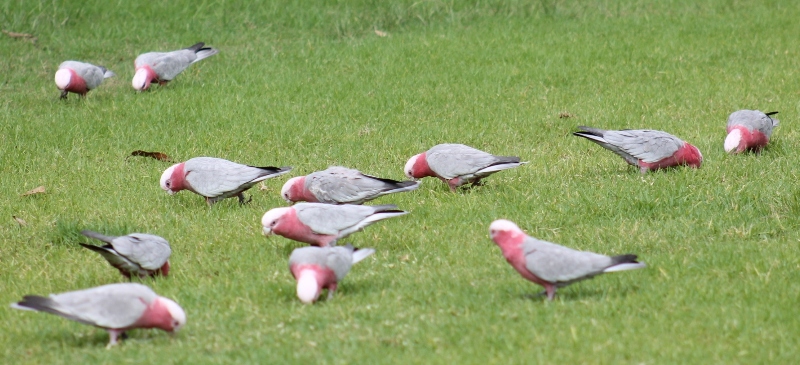
American sweetgum (Liquidambar styraciflua) is a deciduous tree in the genus Liquidambar native to warm temperate areas of eastern North America and tropical montane regions of Mexico and Central America. Sweetgum is one of the main valuable forest trees in the southeastern United States, and is a popular ornamental tree in temperate climates. The distinctive compound fruit is hard, dry, and globose, 25–40 mm (1–1+1⁄2 in) in diameter, composed of numerous (40–60) capsules.[14] Each capsule, containing one to two small seeds, has a pair of terminal spikes (for a total of 80–120 spikes). When the fruit opens and the seeds are released, each capsule is associated with a small hole (40–60 of these) in the compound fruit.
_--_Liquidambar_styraciflua.jpg?timestamp=1686254086507)
American sweetgum tree ball (spiny seed pod). Photo: Jim Evans
It is one of a those imported trees that produces seeds and fruits that Australian native birds have taken to eating.
People with olive trees report these being favoured by local parrots, including former Bayview and Narrabeen resident Ken 'Sava' Lloyd:
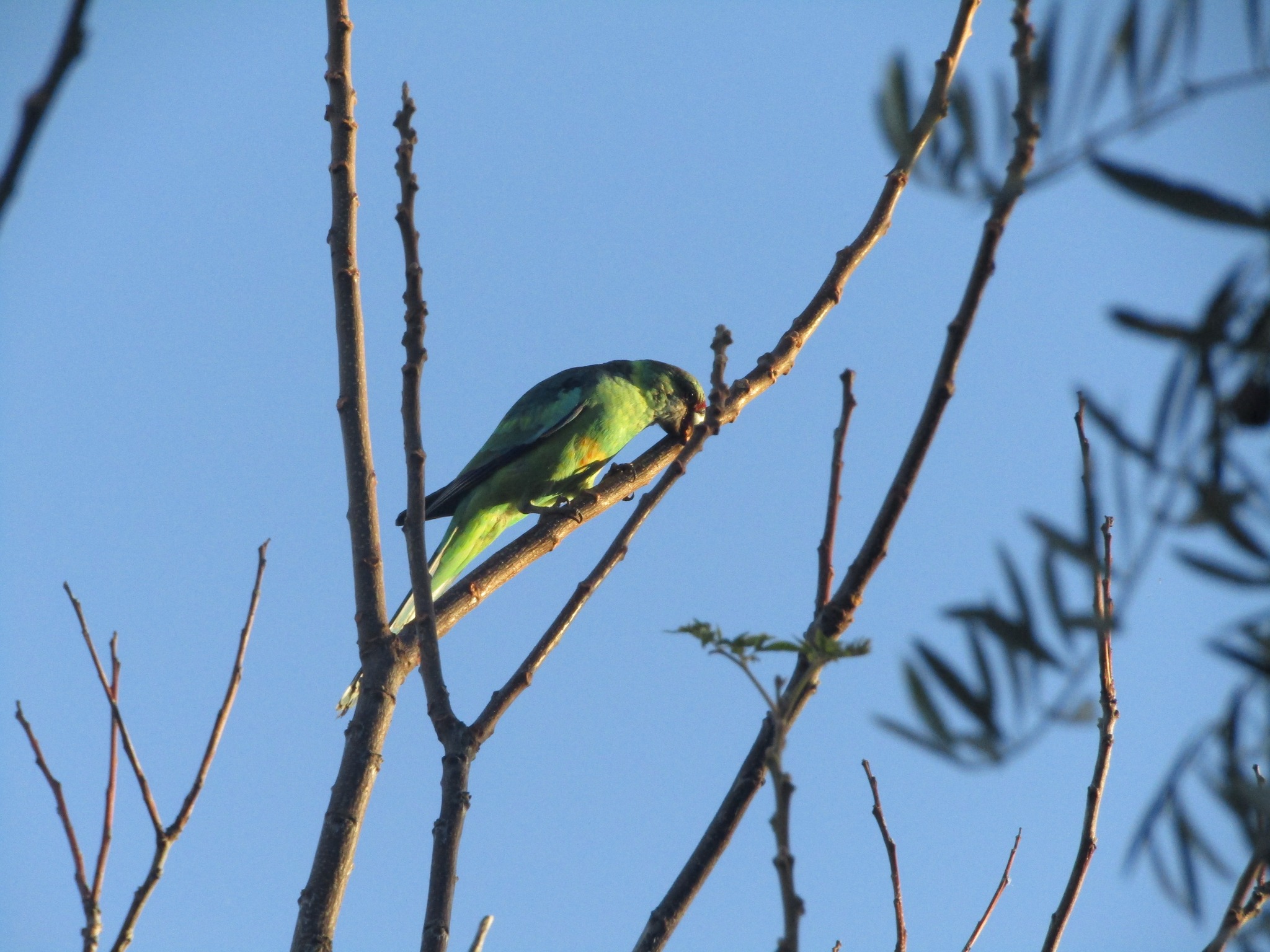
''I Interrupted this Mallee Ringneck Parrot from eating my olives, and she is not happy. All Types of Parrots are here at Gunnedah eating my Olives.'' - Ken Sava Lloyd, June 3, 2023
The Australian ringneck (Barnardius zonarius) is a parrot native to Australia. Except for extreme tropical and highland areas, the species has adapted to all conditions. Treatments of genus Barnardius have previously recognised two species, the Port Lincoln parrot (Barnardius zonarius) and the mallee ringneck (Barnardius barnardi) but due to these readily interbreeding at the contact zone they are usually regarded as a single species B. zonarius with subspecific descriptions. Currently, four subspecies are recognised, each with a distinct range. The Mallee Ringneck Parrot inhabits central and western New South Wales west of Dubbo, the southwestern corner Queensland west of St George, eastern South Australia and northwestern Victoria.
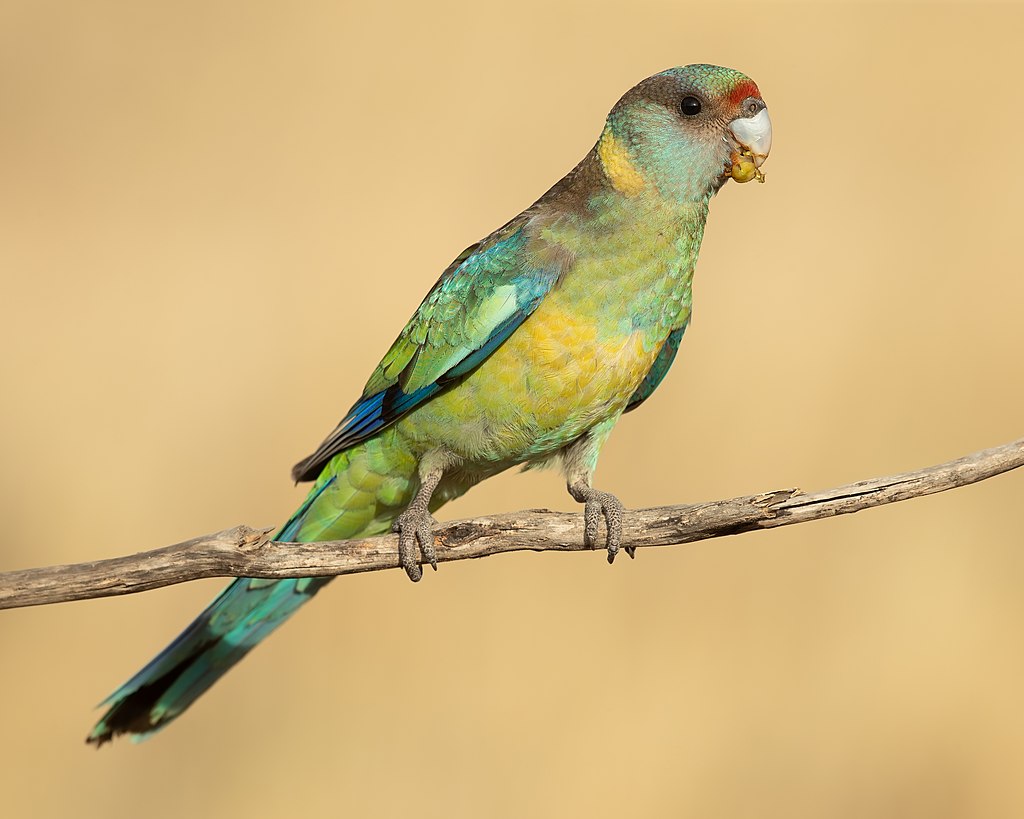
Mallee ringneck (Barnardius zonarius barnardi), Patchewollock Conservation Reserve, Victoria, Australia. Photo: JJ Harrison
The May 2023 round of the Ringtail Posse saw Nicole Romain, Founder Save The Northern Beaches Bushlands (Lizard Rock), choose the Yellow-Tailed Black Cockatoos Calyptorhynchus funereus as her favourite local wildlife species.
Yellow-tailed Black-Cockatoos were once content to feed on the seeds of native shrubs and trees, especially banksias, hakeas and casuarinas, as well as extracting the insect larvae that bore into the branches of wattles. Now, after the establishment of extensive plantations of exotic Monterey Pines, the cockatoos may feed more often by tearing open pine cones to extract the seeds in states further south where their preferred habitat and food trees have been destroyed. The population on South Australia’s Eyre Peninsula is now reliant on the seeds of the Aleppo Pine, a noxious weed, as its preferred habitat, as its Sugar Gum woodlands has become extensively fragmented.
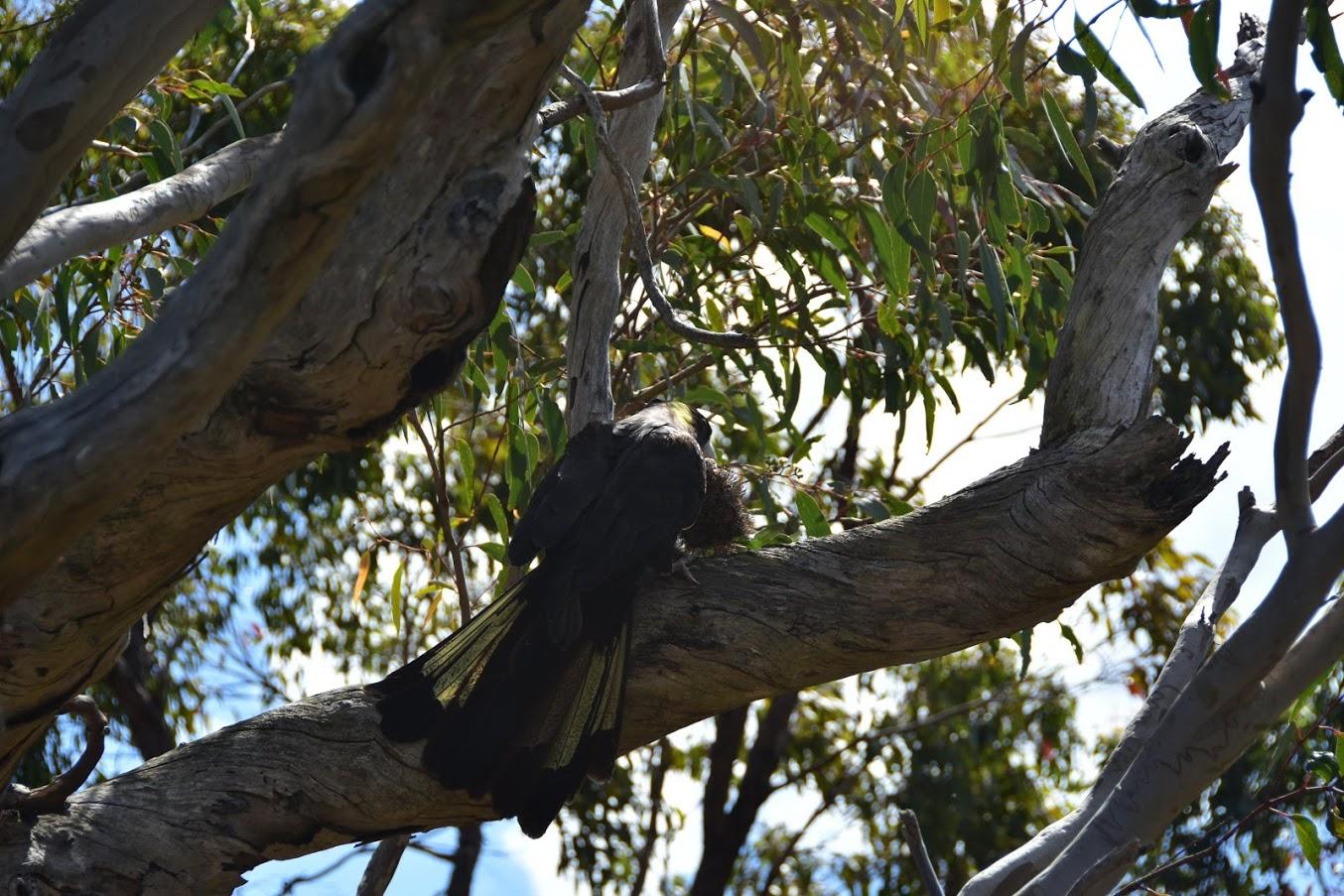
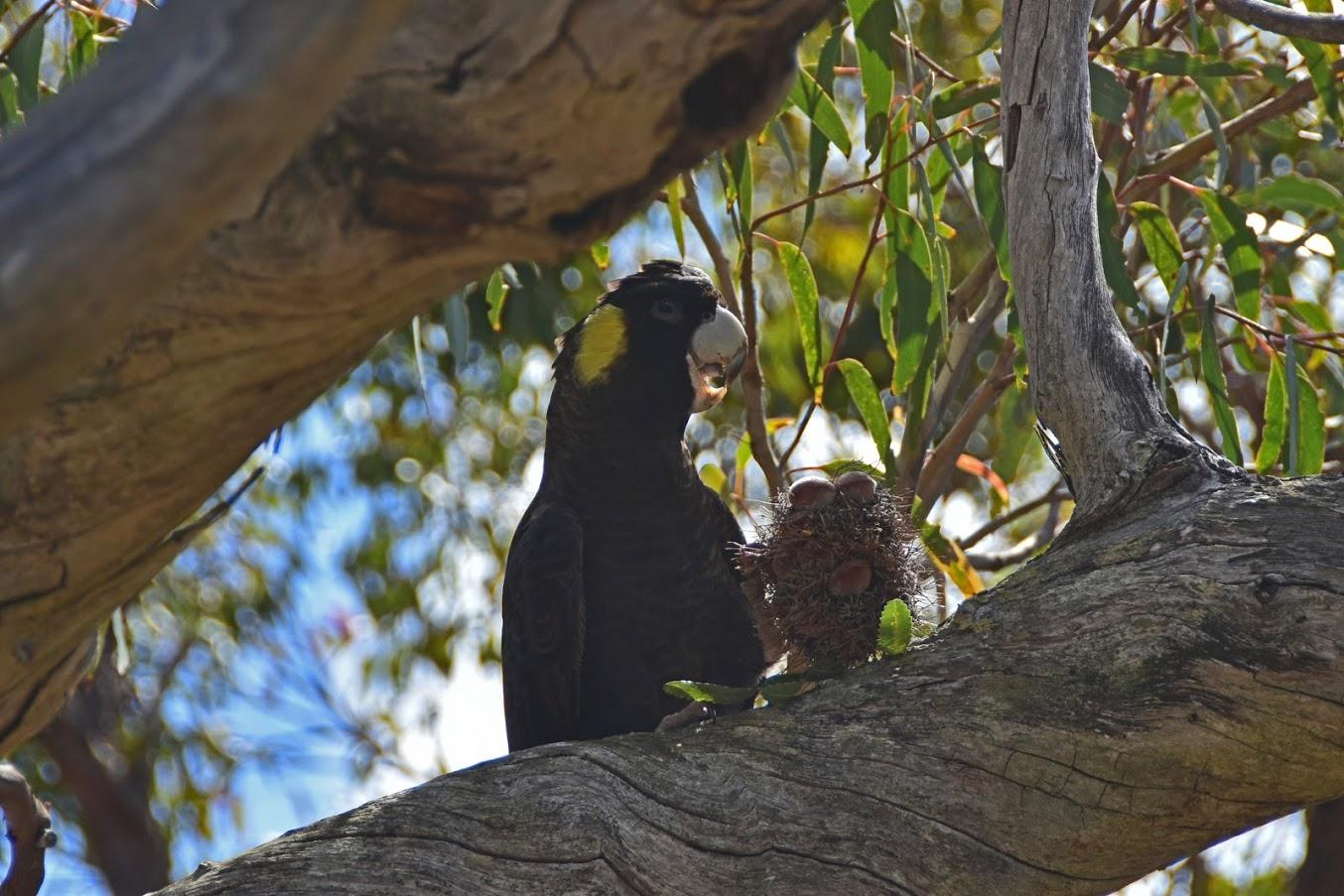
Yellow-tailed black cockatoos are one of two species of black cockatoos found in NSW. The other is the much less common south-eastern glossy black cockatoo, a species in decline, particularly after losing crucial habitat during the severe bushfires of 2019/2020, and listed as vulnerable nationally in August 2022.
The south-eastern glossy black cockatoo is a specialist eater and feeds on she oaks, which is why we will sometimes see them in Pittwater and why we need to stop cutting down their food; the trees.
Glossy Black-cockatoo, Calyptohynchus lathami, at Clareville - photo by Paul Wheeler, this species also visits McKay Reserve, Palm Beach, annually to feed on these trees
Lizard Rock Proposal To Proceed To Gateway Determination
The Sydney North Planning Panel determined on May 23 2023 (published May 29 2023) that the Lizard Rock proposal should proceed towards Gateway Determination (consideration by the Minister). This is the next administrative step towards approval.
If the Minister wishes to proceed, it will then go to community consultation before a final decision is made. Pittwater Online will keep the community updated on when submissions open, should that occur.
Read the decision at: https://www.planningportal.nsw.gov.au/rezoning-reviews/planning-panel-or-commission-decision/lizard-rock-morgan-road-belrose
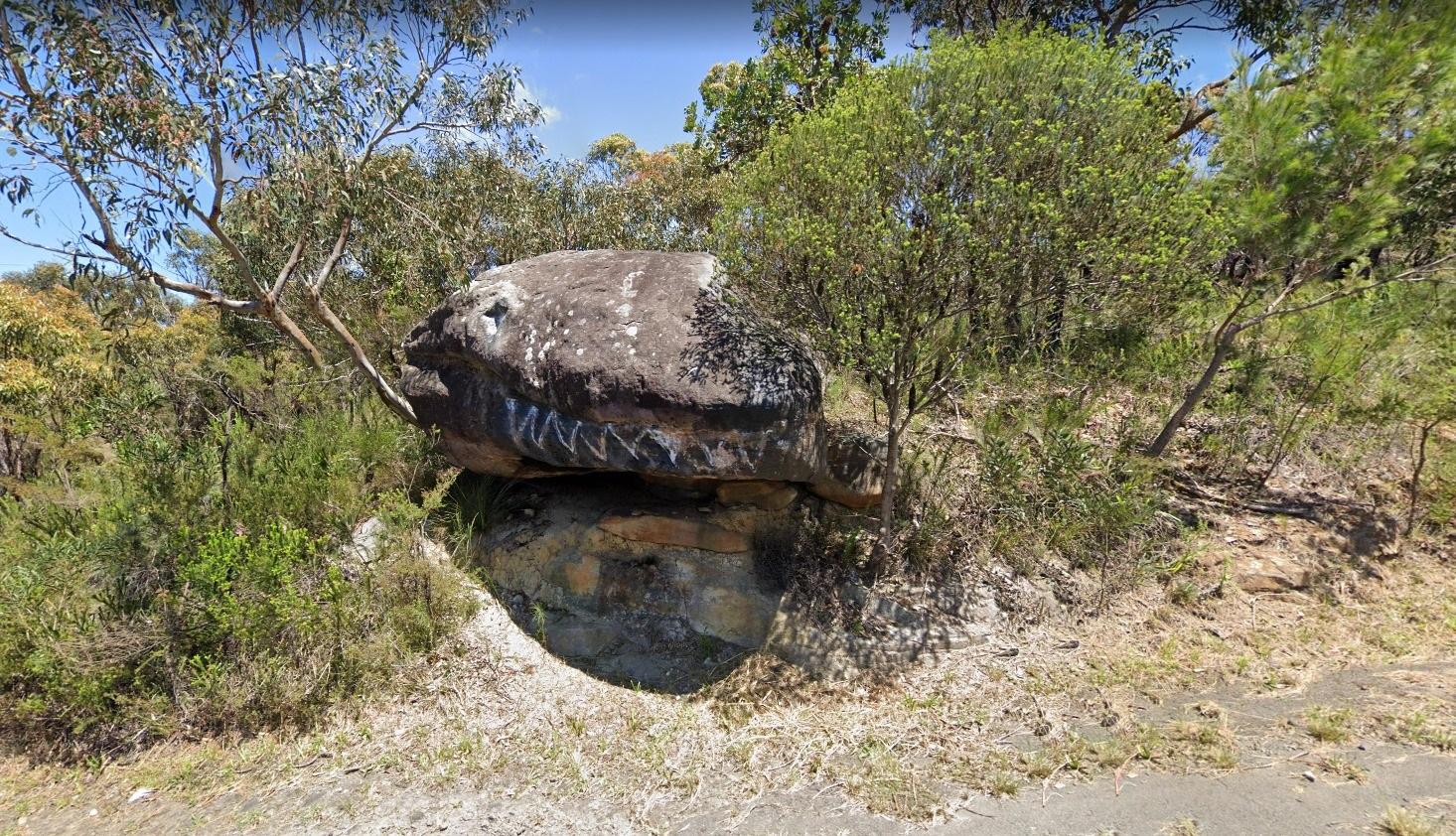
Areas Closed For West Head Lookout Upgrades
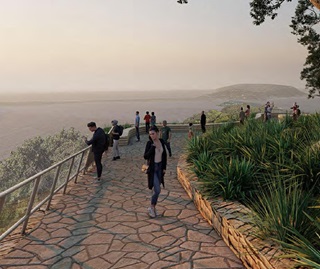 NPWS advise that the following areas are closed from Monday 22 May to Thursday 30 November 2023 while West Head lookout upgrades are underway:
NPWS advise that the following areas are closed from Monday 22 May to Thursday 30 November 2023 while West Head lookout upgrades are underway:
- West Head lookout
- The loop section of West Head Road
- West Head Army track.
Vehicles, cyclists and pedestrians will have access to the Resolute picnic area and public toilets. Access is restricted past this point.
The following walking tracks remain open:
- Red Hands track
- Aboriginal Heritage track
- Resolute track, including access to Resolute Beach and West Head Beach
- Mackeral Beach track
- Koolewong track.
The West Head lookout cannot be accessed from any of these tracks.
Image: Visualisation of upcoming works, looking east from the ramp towards Barrenjoey Head Credit: DPE
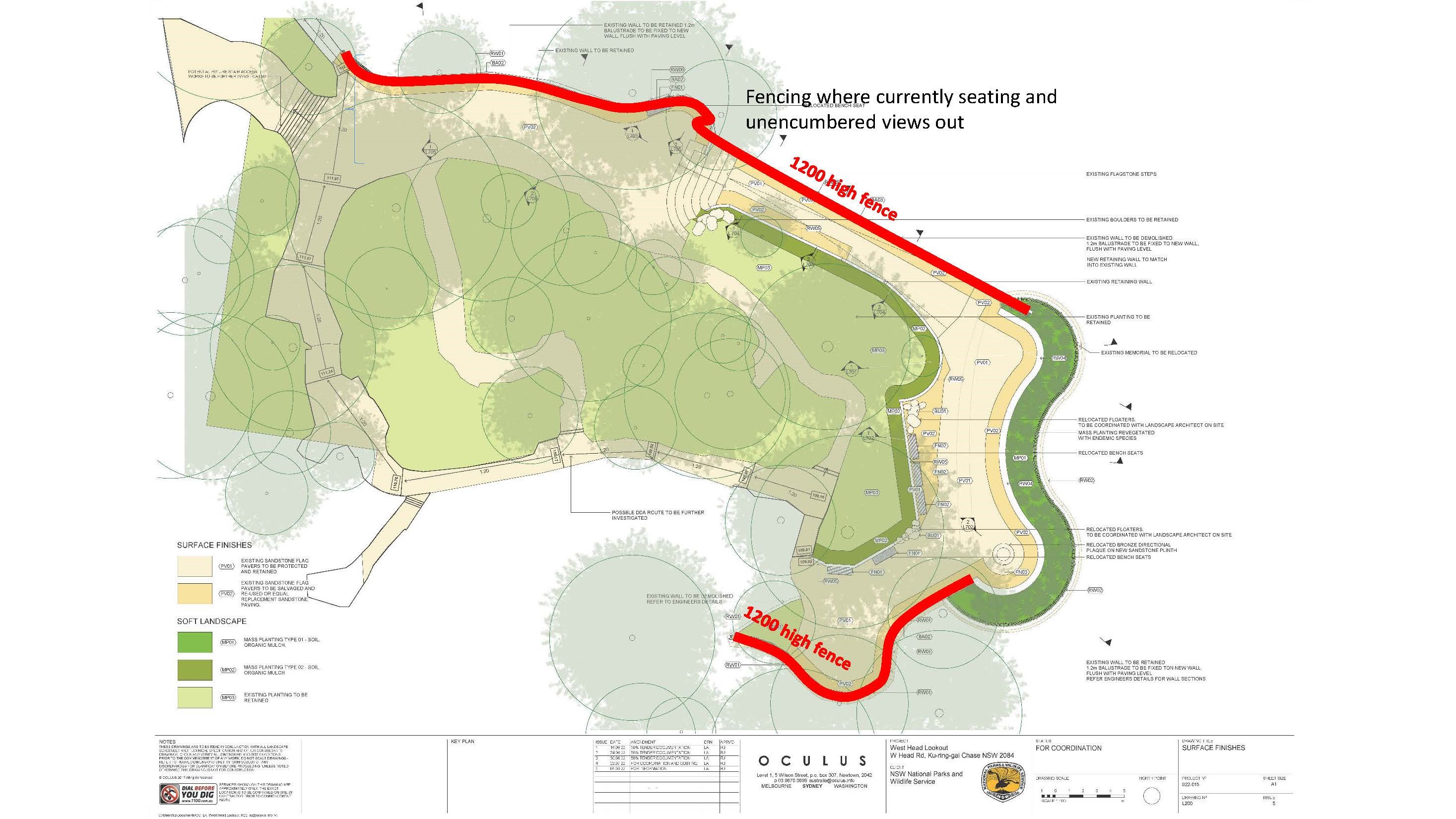
Avalon Dunes Bushcare: July 2023 + Photos From The Field Taken At June 2023 'War On Weeds'
Despite a bit of rain, we continued murdering weeds. Some interesting photos taken on the day here. An Assassin Bug, Breynia berries, Native Grape/Cayratia berries, buds on the climber Clematis (Old Mans Beard), Turkey Rhubarb seedling.
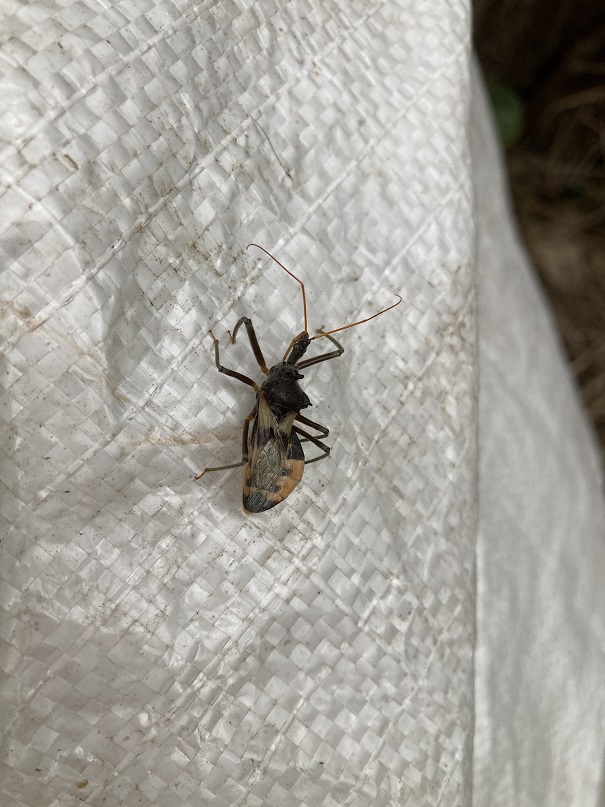
The Assassin Bug is well named. It has a thin piercing mouthpart you can see just left of its long narrow head. It uses this to spike smaller insects and suck out their vital juices for its food. This serves to keep some sort of balance between insect species. This one is an adult, with wings folded over its concave abdomen. Insect Order: Hemiptera.
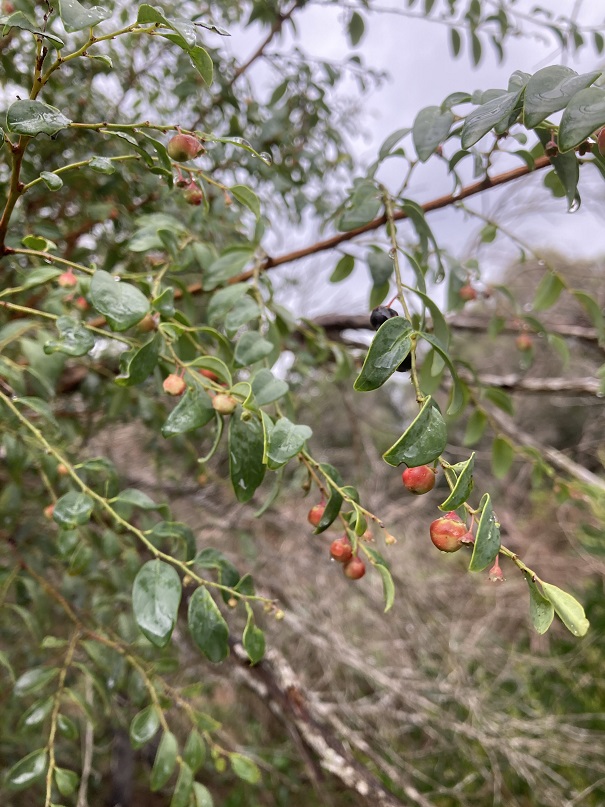
Breynia oblongifolia AKA Coffee Bush (not the real thing) is a small shrub. These berries follow its tiny flowers.
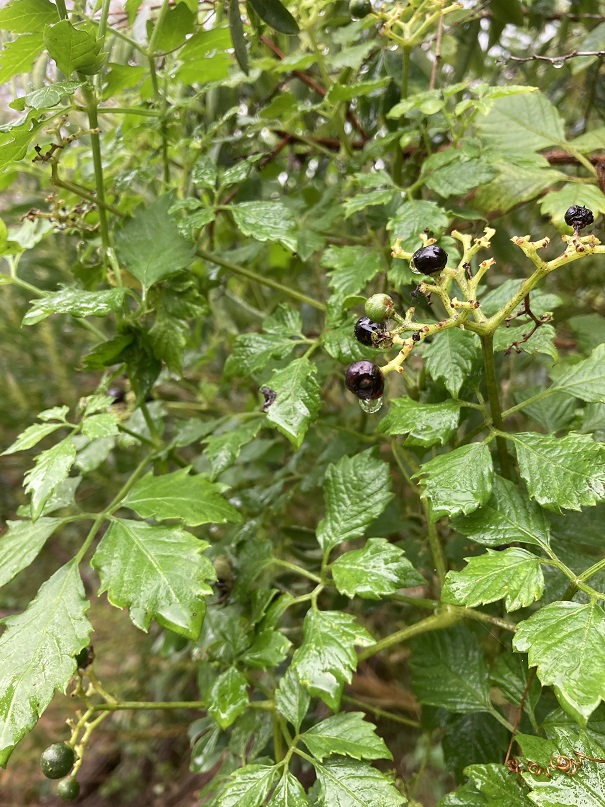
Native Grape, Cayratia clematidea, with berries. A foodplant for several largeish moths around Avalon.
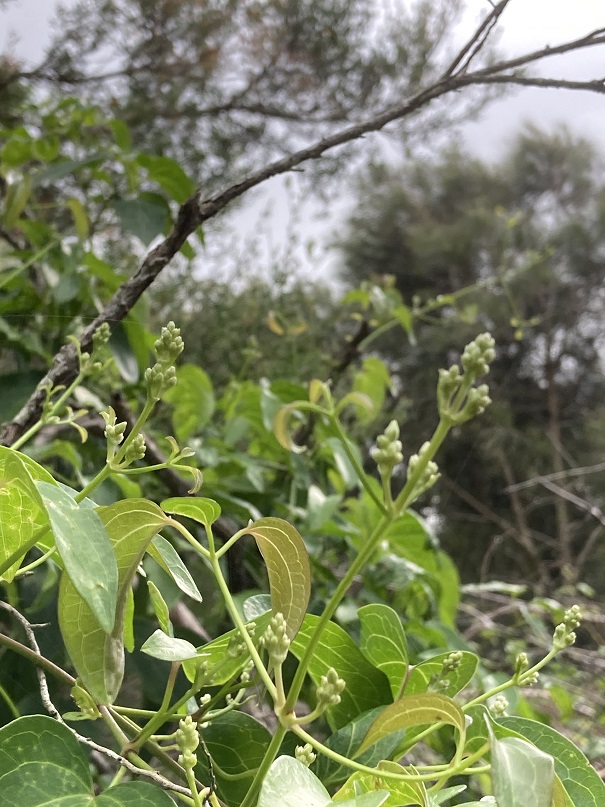
Buds of the climber Clematis. Abundant white flowers in July-August, making the higher parts of the dunes look as if there has been some snow. Its fluffy seeds in late summer earn it the name 'Old Mans Beard'.
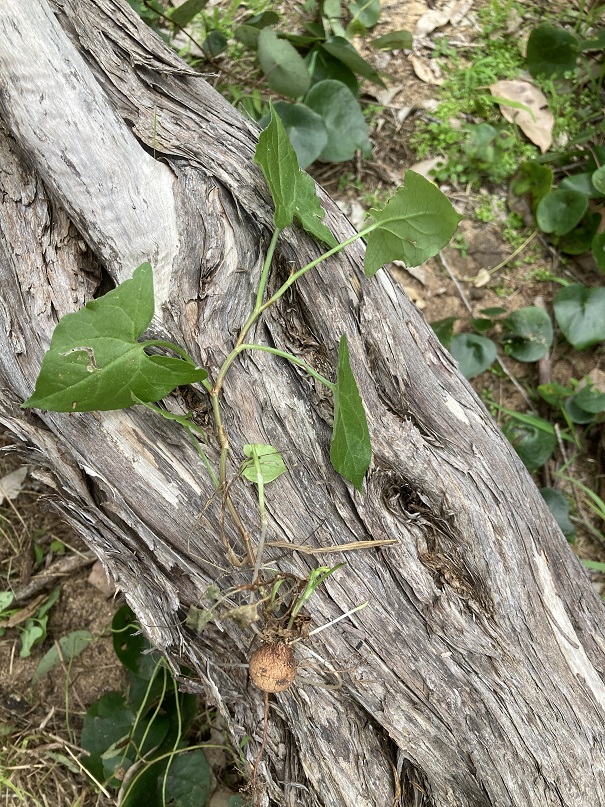
Great to get the bulb of a seedling Turkey Rhubarb.
Join us on Sunday July 2 for another satisfying morning making a difference while being in nature.
We meet on the first Sunday of each month at 8.30am
Facebook page for Avalon Dunes Bushcare where you can keep up to date with progress and find out how to get involved.
Visit: www.facebook.com/AvalonDunesBushcare
Photo: Salt tolerant tree Coast Banksia is in flower now. Unlike most Banksias, it sheds its seeds every summer, not relying on fire to open its seed capsules.
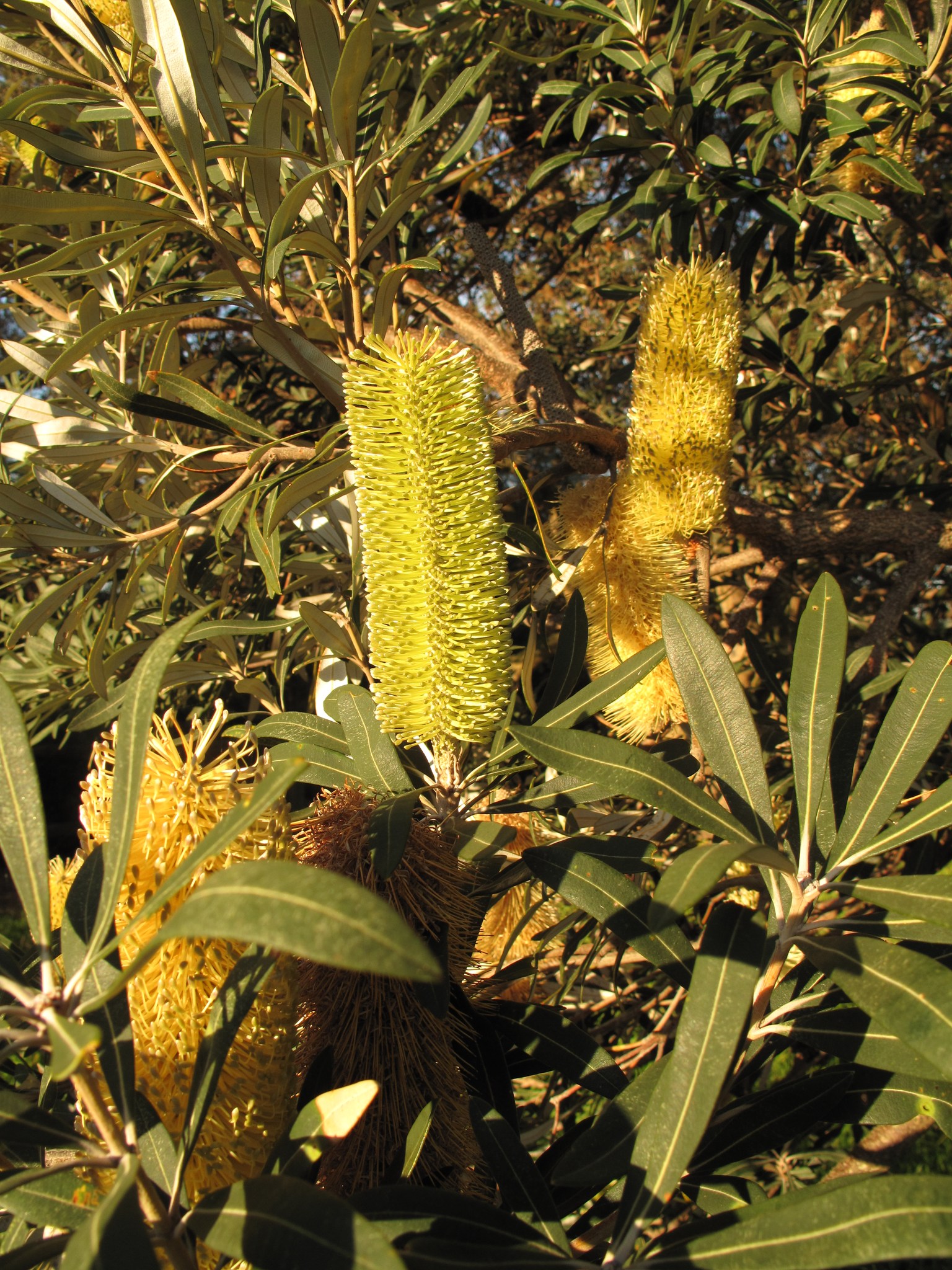
The Bureau Of Meteorology Issues An El Nino ALERT
June 6, 2023
The Bureau of Meteorology has moved from El Niño WATCH to El Niño ALERT, meaning that there is around a 70% chance of an El Niño developing this year.
Bureau of Meteorology Senior Climatologist Catherine Ganter said climate models and indicators now meet the Bureau's El Niño ALERT criteria.
"While the models show it's very likely the tropical Pacific Ocean temperatures will reach El Niño levels during winter, we have seen some movement in the atmosphere towards El Niño conditions," Ms Ganter said.
"While our El Niño ALERT criteria have been met, these changes will need to strengthen and sustain themselves over a longer period for us to consider an El Niño event," she said.
The Bureau's criteria for the definition of El Niño ALERT have been developed as part of a staged system to alert Australians on the increased likelihood of El Niño.
El Niño describes changes in the tropical Pacific Ocean that affect global weather and it occurs on average every 3 to 5 years.
During El Niño, there is a higher chance of drier weather in eastern Australia and it's more likely to be warmer than usual for the southern two-thirds of Australia.
"The Bureau's long-range winter forecast is for drier and warmer conditions across almost all of Australia and the climate conditions in the Pacific Ocean are already factored into our forecasts," Ms Ganter said.
"The long-range forecast for winter also shows an increased chance of below average rainfall for almost all of Australia and the move to El Niño ALERT does not change this forecast.
"The Bureau currently forecasts Australia's rainfall and temperature up to 3 months ahead. We use a climate version of our weather model to make these long-range forecasts and this model uses information about ocean and land temperatures, wind patterns and more.
"This model already takes into account the likely conditions in the Pacific Ocean, but also conditions elsewhere across the globe, such as the tropical Indian Ocean and how they are also likely to influence Australian weather and climate," Ms Ganter said.
El Niño is the warm phase of the El Niño–Southern Oscillation (ENSO), where the climate is often drier than usual in eastern Australia during winter and spring.
ENSO describes a naturally occurring cycle in the climate system, including the location of warmer or cooler than average sea surface temperatures in the central and eastern tropical Pacific Ocean, and its connection with the trade winds and patterns in the atmosphere.
Ms Ganter said even if an El Niño develops, its impact can vary depending on where you are, as well as from event to event.
In Australia, changes during El Niño could include:
- Reduced rainfall for eastern Australia.
- Warmer daytime temperatures for the southern two-third of Australia.
- Increased risk of extreme heat.
- Increased bushfire danger in south-eastern Australia.
- Increased frost risk linked to clear skies at night.
- Decreased alpine snow depths.
- A later start to the northern wet season.
- Reduced tropical cyclone numbers.
More information is available on the Bureau's website:
Climate long-range forecast: bom.gov.au/climate/ahead/
ENSO forecast: bom.gov.au/climate/enso/outlook
Climate Driver Update: bom.gov.au/climate/enso/
More about El Niño and La Niña: www.bom.gov.au/climate/about/australian-climate-influences.shtml?bookmark=enso
NOAA Declares The Arrival Of El Niño
June 8, 2023
The expected El Niño has emerged, according to scientists at NOAA’s Climate Prediction Center, a division of the National Weather Service. In the monthly outlook released today, forecasters issued an El Niño Advisory, noting that El Nino conditions are present and are expected to gradually strengthen into the winter.
El Niño is a natural climate phenomenon marked by warmer-than-average sea surface temperatures in the central and eastern Pacific Ocean near the equator, which occurs on average every 2-7 years. El Niño’s impacts on the climate extend far beyond the Pacific Ocean.
"Depending on its strength, El Niño can cause a range of impacts, such as increasing the risk of heavy rainfall and droughts in certain locations around the world," said Michelle L'Heureux, climate scientist at the Climate Prediction Center.
"Climate change can exacerbate or mitigate certain impacts related to El Niño. For example, El Niño could lead to new records for temperatures, particularly in areas that already experience above-average temperatures during El Nino.”
El Niño’s influence on the U.S. is weak during the summer and more pronounced starting in the late fall through spring. By winter, there is an 84% chance of greater than a moderate strength El Niño, and a 56% chance of a strong El Niño developing. Typically, moderate to strong El Niño conditions during the fall and winter result in wetter-than-average conditions from southern California to along the Gulf Coast and drier-than-average conditions in the Pacific Northwest and Ohio Valley. El Niño winters also bring better chances for warmer-than-average temperatures across the northern tier of the country.
A single El Nino event will not result in all of these impacts, but El Niño increases the odds of them occurring.
The anticipated persistence of El Niño also contributed to the 2023 Atlantic and Eastern Pacific Hurricane Outlooks issued by NOAA last month. El Niño conditions usually help to suppress Atlantic Hurricane activity, while the presence of El Niño typically favours strong hurricane activity in the central and eastern Pacific Basins.
The Climate Prediction Center’s seasonal temperature and precipitation outlooks will continue to take into account current and forecasted El Niño conditions. These seasonal outlooks are updated monthly, with the next update on June 15. The Atlantic Hurricane Season Outlook will be updated in early August.
Scientists have been forecasting the development of El Niño for the last few months and issued the first El Niño Watch on April 13.
EL NIÑO/SOUTHERN OSCILLATION (ENSO)
DIAGNOSTIC DISCUSSION
issued by CLIMATE PREDICTION CENTER/NCEP/NWS
8 June 2023
ENSO Alert System Status: El Niño Advisory
Synopsis: El Niño conditions are present and are expected to gradually strengthen into the Northern Hemisphere winter 2023-24.
In May, weak El Niño conditions emerged as above-average sea surface temperatures (SSTs) strengthened across the equatorial Pacific Ocean [Fig. 1]. All of the latest weekly Niño indices were more than +0.5°C: Niño-3.4 was +0.8°C, Niño-3 was +1.1°C, and Niño1+2 was +2.3°C [Fig. 2]. Area-averaged subsurface temperatures anomalies remained positive [Fig. 3], reflecting the continuation of widespread anomalous warmth below the surface of the equatorial Pacific Ocean [Fig. 4]. For the May average, low-level wind anomalies were westerly over the western equatorial Pacific Ocean, while upper-level wind anomalies were westerly over the eastern Pacific Ocean. Convection was enhanced along the equator and was suppressed over Indonesia [Fig. 5]. Both the equatorial SOI and traditional SOI were significantly negative. Collectively, the coupled ocean-atmosphere system reflected the emergence of El Niño conditions.
The most recent IRI plume indicates the continuation of El Niño through the Northern Hemisphere winter 2023-24 [Fig. 6]. Confidence in the occurrence of El Niño increases into the fall, reflecting the expectation that seasonally averaged Niño-3.4 index values will continue to increase. Another downwelling Kelvin wave is emerging in the western Pacific Ocean, and westerly wind anomalies are forecasted to recur over the western Pacific. At its peak, the chance of a strong El Niño is nearly the same as it was last month (56% chance of November-January Niño-3.4 ≥ 1.5°C), with an 84% chance of exceeding moderate strength (Niño-3.4 ≥ 1.0°C). In summary, El Niño conditions are present and are expected to gradually strengthen into the Northern Hemisphere winter 2023-24 [Fig. 7].
This discussion is a consolidated effort of the National Oceanic and Atmospheric Administration (NOAA), NOAA's National Weather Service, and their funded institutions. Oceanic and atmospheric conditions are updated weekly on the Climate Prediction Center web site (El Niño/La Niña Current Conditions and Expert Discussions). Additional perspectives and analysis are also available in an ENSO blog. A probabilistic strength forecast is available here. The next ENSO Diagnostics Discussion is scheduled for 13 July 2023.
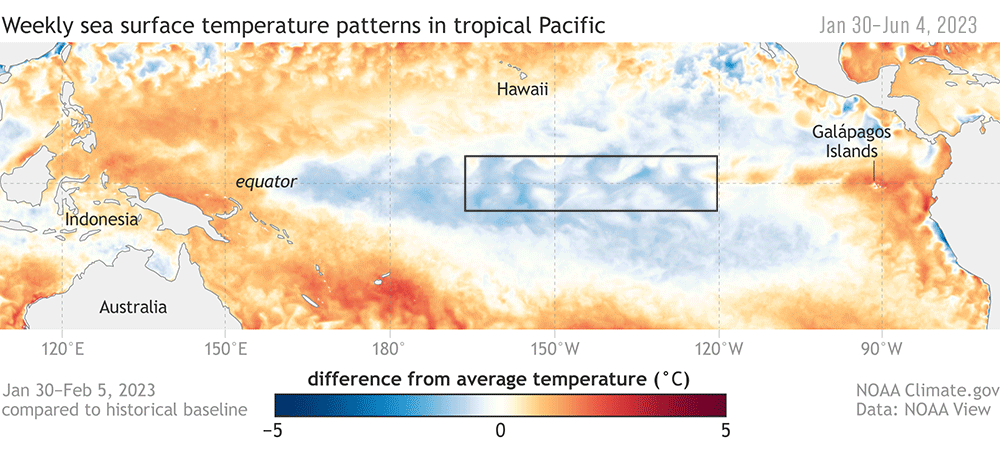
An El Niño looms over Australia’s stressed electricity system – and we must plan for the worst
Dylan McConnell, UNSW Sydney and Iain MacGill, UNSW SydneyThe Bureau of Meteorology this week declared a 70% chance of an El Niño developing this year. It’s bad timing for the electricity sector, and means Australians may face supply disruptions and volatile prices.
El Niño events are associated with increased temperatures and heatwaves. These conditions drive demand for electricity, especially in summer.
These same conditions can also mean some generators don’t produce at full capacity. And unfortunately, the likely El Niño comes as the electricity sector grapples with other significant headwinds.
Australia’s electricity grid may be fine this summer. But given what’s on the horizon, it would be prudent to plan for the worst.
How Does Hot Weather Affect Energy Supplies?
Increased air conditioning use in summer can cause demand to peak, particularly during heatwaves, as the below graph shows.
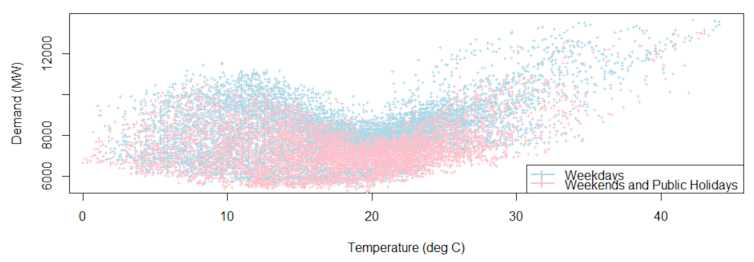
At the same time, electricity generators – including coal, gas, solar and wind – can become less efficient in hot temperatures, and so provide less energy to the system. And the hotter transmission lines get, the less electrical current they can safely carry. This lowers their capacity to transport energy.
When the electricity grid is under stress, this can lead to “load shedding” or blackouts – when power companies deliberately switch off the power supply to groups of customers to prevent the overall system from becoming dangerously unstable.
This happened in Victoria in early 2019, when more than 200,000 customers lost power during a period of extreme heat.
El Niño events are also associated with reduced rainfall. Among other effects on the electricity grid, this can reduce output from hydroelectricity generators (which produce electricity by pumping water through turbines). This occurred in Tasmania in 2016, and contributed to an energy crisis in that state.
Other Headwinds Are Blowing
Aside from facing a likely El Niño, the electricity sector faces other headaches.
Earlier this year, the Australian Energy Market Operator warned electricity demand “may exceed supply” at times over the next decade due to factors such as weather conditions or generator outages.
The market operator pointed to delays to the Snowy 2.0 hydro project and the gas-fired Kurri Kurri Power Station, both in New South Wales.
The Kurri Kurri project has been delayed for a year. It was scheduled to begin operating in December this year – in time for the first summer since the Liddell coal-fired power station closed.
The Australian Energy Market Operator said the electricity system was expected to meet the “reliability standard” in all regions for the next five years. The standard requires at least 99.998% of forecast demand be met each year. Unmet demand can lead to interrupted supply, or blackouts.
But the operator also said delays to the Kurri Kurri project posed risks to reliability in NSW this summer.
Adding to the pressures on the system, Queensland’s Callide C coal-fired power station is still not back to capacity more than two years after an explosion at the site. The station’s owners last week announced the plant would not be fully operational until mid-2024.
Combine all this with a likely El Niño, and the electricity sector may be facing a challenging summer.
El Niño Years Are Not Normal
In August, the Australian Energy Market Operator is due to publish a new assessment of the grid’s expected reliability over the next decade. It may well show reliability standards will be achieved.
On first blush, that sounds like good news. However, the way the assessment is derived may mask the real risk during El Niño periods.
The assessment combines a number of scenarios, which are based on different forecasts of electricity demand. The scenarios based on average weather conditions are given the most weight.
But if an El Niño arrives, this summer will not be average. We’re likely to experience very hot and dry conditions. This may lead to higher demands on the energy system, and a greater likelihood of blackouts.
This won’t be properly reflected in the assessment. So the grid may be deemed reliable even though electricity supplies are under immense pressure.
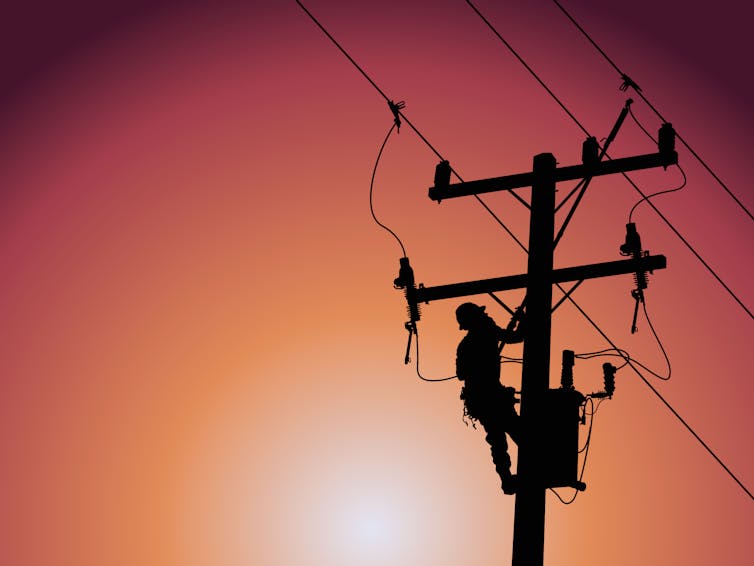
What Can Be Done?
You might find all this news worrying. But there are measures and technologies in place to help reduce the risks.
A mechanism exists that allows the market operator to secure emergency energy reserves. It could mean, for example, calling on a large industrial plant to pause operations to reduce its electricity use, or starting up a standby diesel generator. The operator can start procuring this months ahead of time, and will no doubt be monitoring the situation closely.
In the medium term, the uptake of so-called “consumer energy resources” such as rooftop solar farms and small-scale battery storage shows promise. These technologies are located at homes and businesses. They can reduce demand on the grid at peak times and can potentially be built faster than big projects.
Longer term, we need to build more “stuff”. This includes renewable energy and other “dispatchable” resources – which can provide energy when it’s needed – as well as more transmission infrastructure.
Several federal funding measures – the Capacity Investment Scheme and Rewiring the Nation – might help realise these projects.
The reality is that ageing coal plants are closing – and while they remain open, they’re contributing to reliability challenges in the energy system. Unchecked climate change will also add considerable strain, through natural disasters and more extreme weather.
Unfortunately, investment in renewable and other low-emission technology has been slower than necessary. This has slowed Australia’s emissions reduction efforts and cast questions over the reliability of our energy supplies as an El Niño looms.![]()
Dylan McConnell, Senior Research Associate, Renewable Energy & Energy Systems Analyst, UNSW Sydney and Iain MacGill, Joint director, Collaboration on Energy and Environmental Markets, and Professor, School of Electrical Engineering and Telecommunications, UNSW Sydney
This article is republished from The Conversation under a Creative Commons license. Read the original article.
Time Of Burrugin
Cold and frosty; June-July
Echidna seeking mates - Burringoa flowering - Shellfish forbidden
This is the time when the male Burrugin (echidnas) form lines of up to ten as they follow the female through the woodlands in an effort to wear her down and mate with her. It is also the time when the Burringoa (Eucalyptus tereticornis) starts to produce flowers, indicating that it is time to collect the nectar of certain plants for the ceremonies which will begin to take place during the next season. It is also a warning not to eat shellfish again until the Boo'kerrikin (Acacia decurrens, commonly known as black wattle or early green wattle) blooms.
Eucalyptus tereticornis, commonly known as forest red gum, blue gum or red irongum, is a species of tree that is native to eastern Australia and southern New Guinea. It has smooth bark, lance-shaped to curved adult leaves, flower buds in groups of seven, nine or eleven, white flowers and hemispherical fruit.
Eucalyptus tereticornis was first formally described 1795 by James Edward Smith in A Specimen of the Botany of New Holland from specimens collected in 1793 from Port Jackson by First Fleet surgeon and naturalist John White. The specific epithet (tereticornis) is from the Latin words teres (becoming tereti- in the combined form) meaning "terete" and cornu meaning "horn", in reference to the horn-shaped operculum.
Habitat tree: Sclerophyll Forest.
Food tree: Natural stands are an important food tree for koalas and a wide variety of nectar-eating birds, fruit bats and possums.
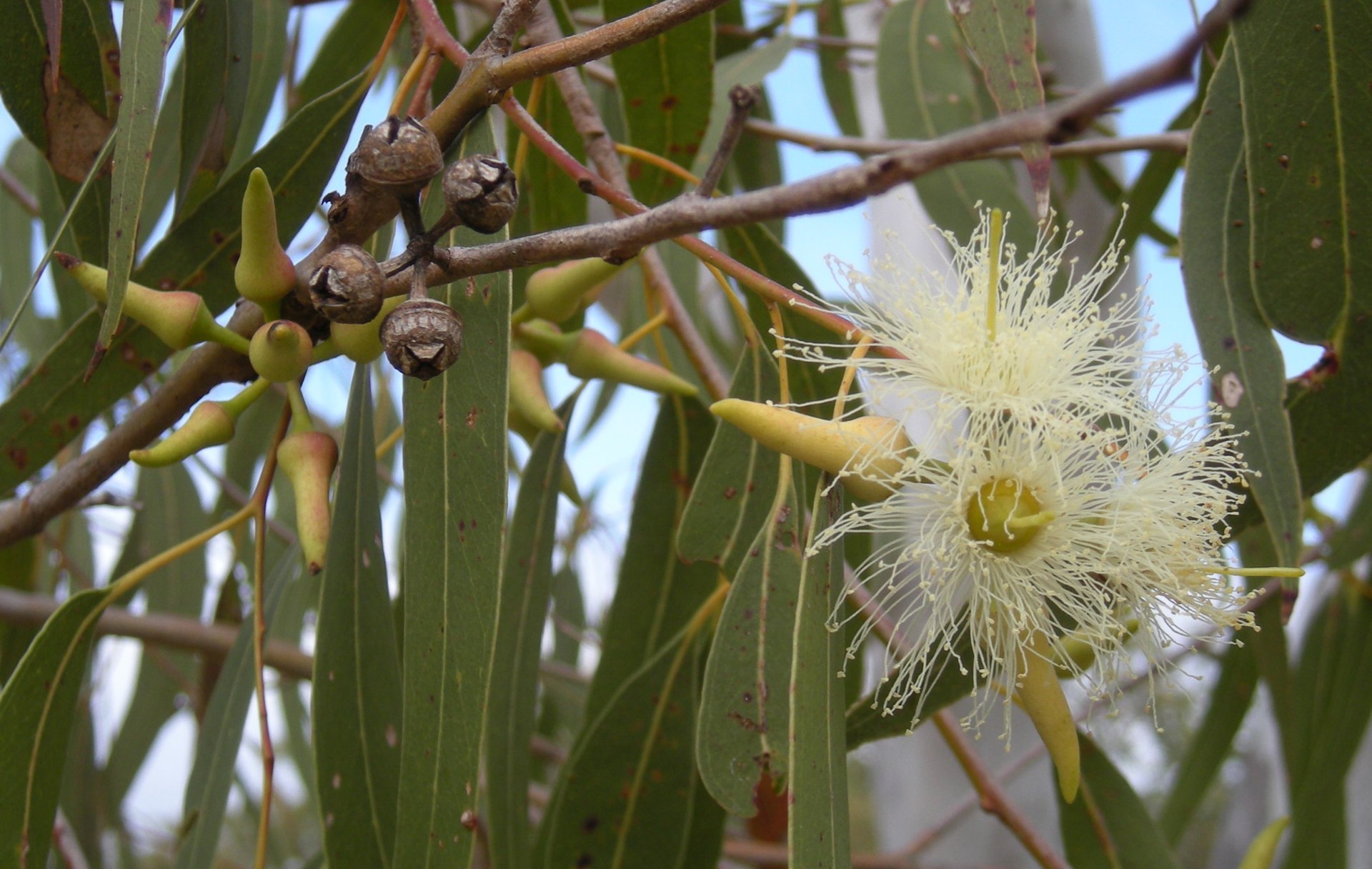
Eucalyptus tereticornis buds, capsules, flowers and foliage, Rockhampton, Queensland. Photo: Ethel Aardvark
Shelly Beach Echidna
Photos by Kevin Murray, taken late May 2023 who said, ''he/she was waddling across the road on the Shelly Beach headland, being harassed not so much by the bemused tourists, but by the Brush Turkeys who are plentiful there.''
Shelly Beach is located in Manly and forms part of Cabbage Tree Bay, a protected marine reserve which lies adjacent to North Head and Fairy Bower.
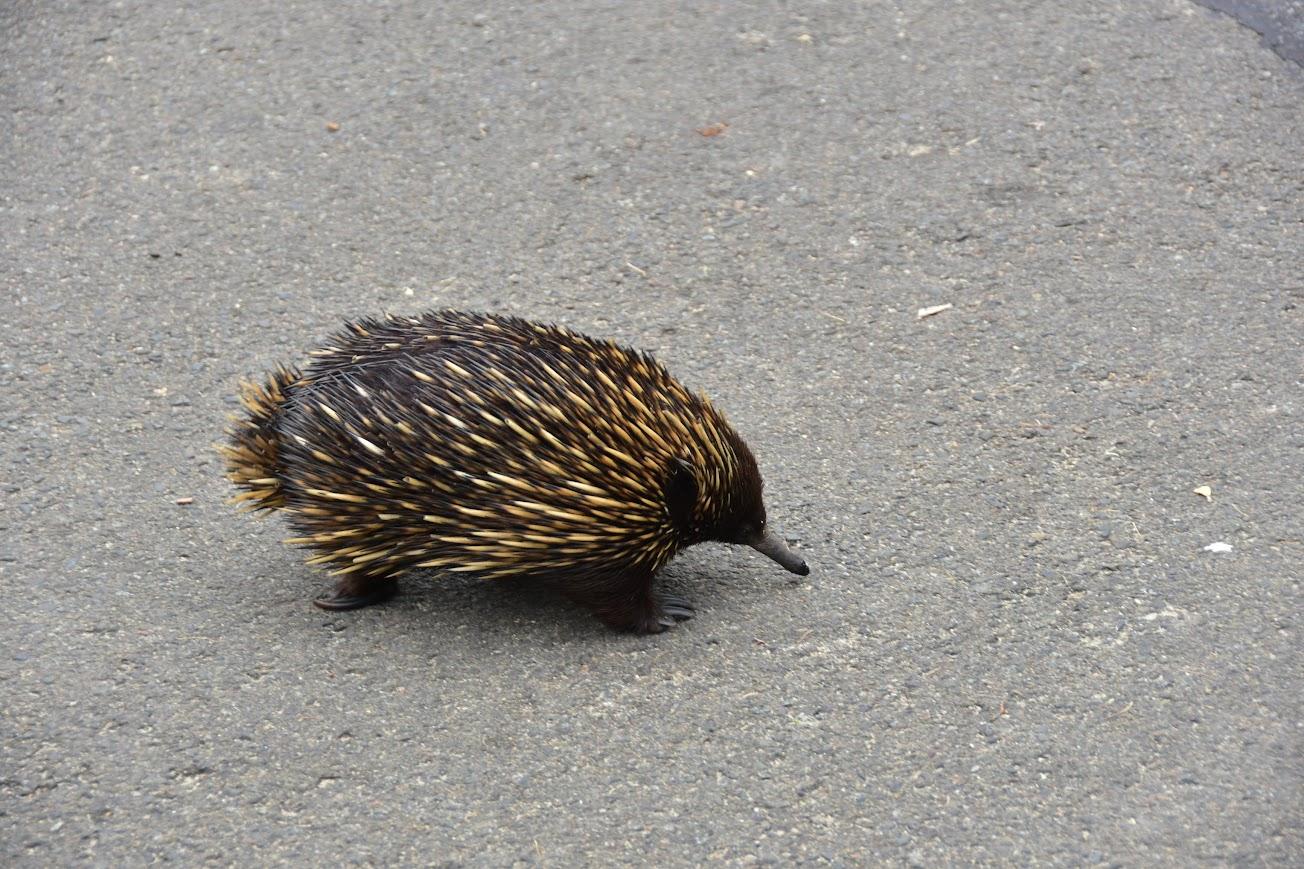
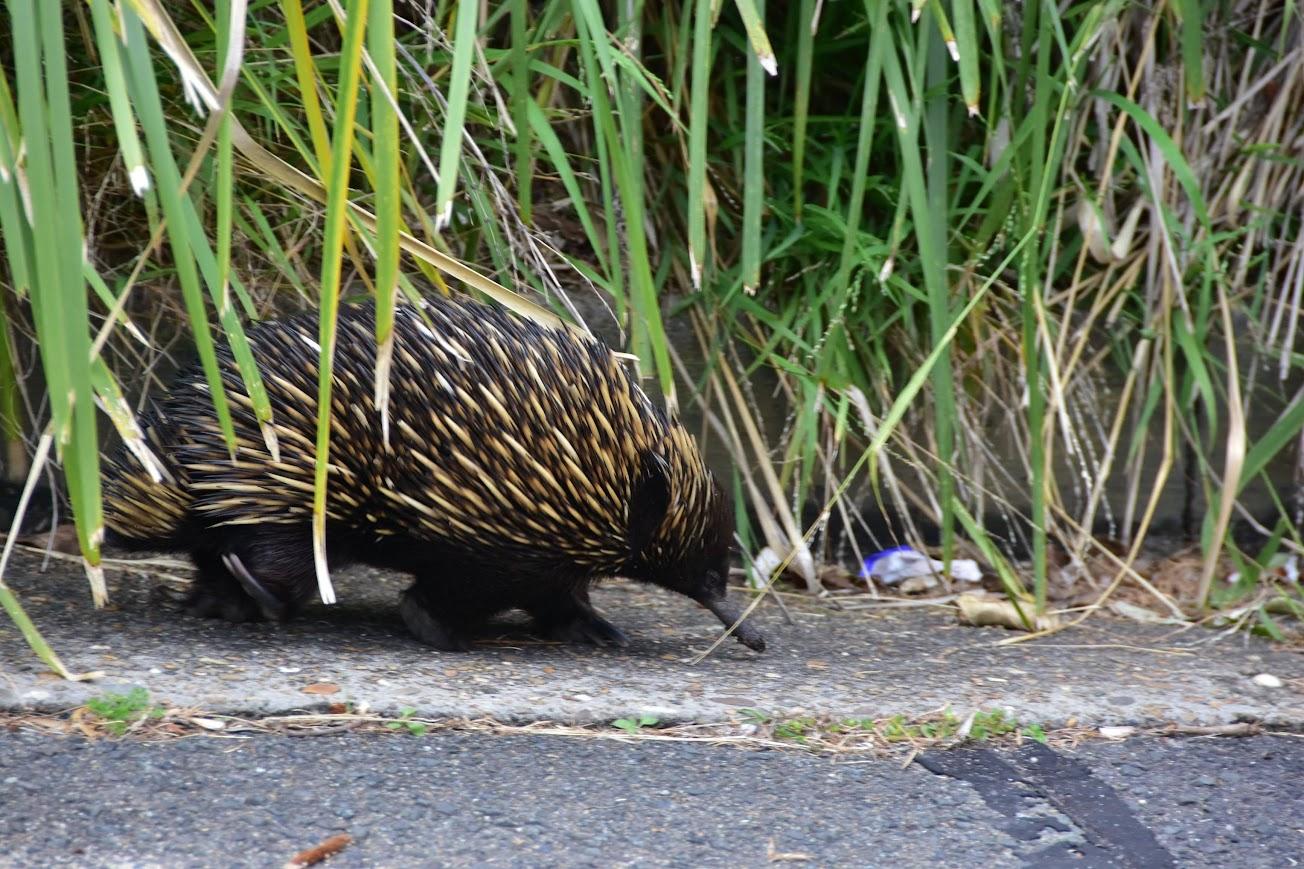
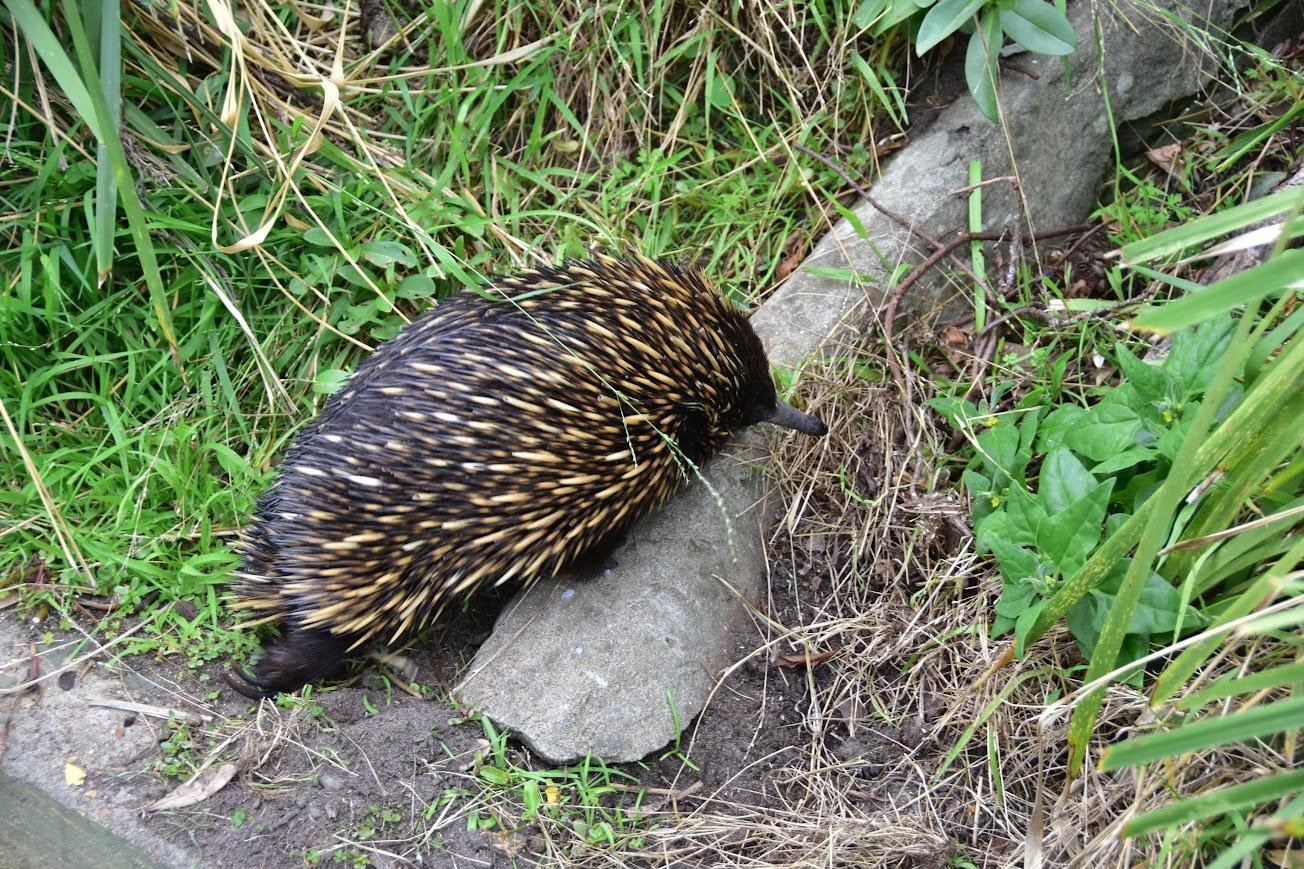
From the D'harawal calendar, BOM
D'harawal
The D'harawal Country and language area extends from the southern shores of Port Jackson (Sydney Harbour) to the northern shores of the Shoalhaven River, and from the eastern shores of the Wollondilly River system to the eastern seaboard.
Winter Solstice In New South Wales: June 22 2023
This year: Thursday, June 22, 2023 12:57 AM. In terms of daylight, this day is 4 hours, 31 minutes shorter than the December solstice. In locations south of the equator, the shortest day of the year is around this date. The earliest sunset is on 12 June or 13 June. The latest sunrise is on 30 June or 1 July.
The December solstice (summer solstice) in Sydney is at 2:27 pm on Friday, December 22, 2023.
The winter solstice is the day of the year that has the least daylight hours of any in the year and usually occurs on 22 June but can occur between 21 and 23 June.
An interesting idiosyncrasy relating to the summer solstice is that it does not feature the day with the earliest sunrise and latest sunset as is commonly expected. Similarly, on the winter solstice, the sunrise is not the latest and the sunset is not the earliest. However, this day does have the least amount of daylight hours.
Because the path of the Earth around the Sun is an ellipse, not a circle, and because the Earth is off-centre on its axis, these combined phenomena can create up to several minutes difference between solar and mean time. Around the date of summer solstice, these effects make the Sun appear to move slightly slower than expected when measured by a watch or clock. As a result, the earliest sunrise occurs before the date of the summer solstice, and the latest sunset happens after the summer solstice. For the same reasons, around the winter solstice, the time of sunrise continues to get later in the days after the solstice. - from/by Geoscience Australia
New Koala Population Found In Coolah Tops Before First Statewide Count Gets Underway
June 8, 2023
A healthy koala population has been discovered in the high-elevation forests of Coolah Tops National Park with the help of thermal drones and sniffer dogs.
The 42 koalas have been identified in Coolah Tops and on adjoining land after a survey was conducted by NSW National Parks and Wildlife Service researchers as part of the NSW Koala Strategy.
This is an exceptional outcome, as there have been only 5 recorded sightings in Coolah Tops National Park in the last 70 years.
Although a few historic koala records exist, and recent audio detections of koala bellows were recorded in the area during spring 2023, nothing was known about whether a population of koalas persisted at Coolah Tops National Park.
The Department of Planning and Environment is now preparing a statewide koala count to establish a population baseline for the endangered species – a first for New South Wales.
A systematic koala count on public land is already underway, in national parks, state forest and other public land throughout eastern and central New South Wales.
The count will be conducted using nocturnal infrared drones, trained koala spotters and sound recorders deployed across 1,000 sites.
Understanding the distribution and size of the current koala population is vital for tracking the recovery of this iconic species into the future.
Last weekend, the Minns Labor Government also protected 4,500 hectares of bushland containing an estimated 30 to 60 koalas west of Port Macquarie.
The bushland is within the traditional lands of the Birpai nation and occupies a critical position between 2 known koala populations at Comboyne and South Kempsey.
NSW Environment Minister Penny Sharpe said:
'These are 3 great wins in the fight to secure our koala population in New South Wales.'
'The Minns Labor Government is focused on saving our koala population in New South Wales. To save our koala population we need to know where the koalas are, how many koalas are out there, because without this information, everything else is just guesswork.'
'We’ve started protecting koala-preferred habitat from logging or grazing, we’re using cutting-edge technology to confirm koala numbers, and we will create the Great Koala National Park in our first term in government.'
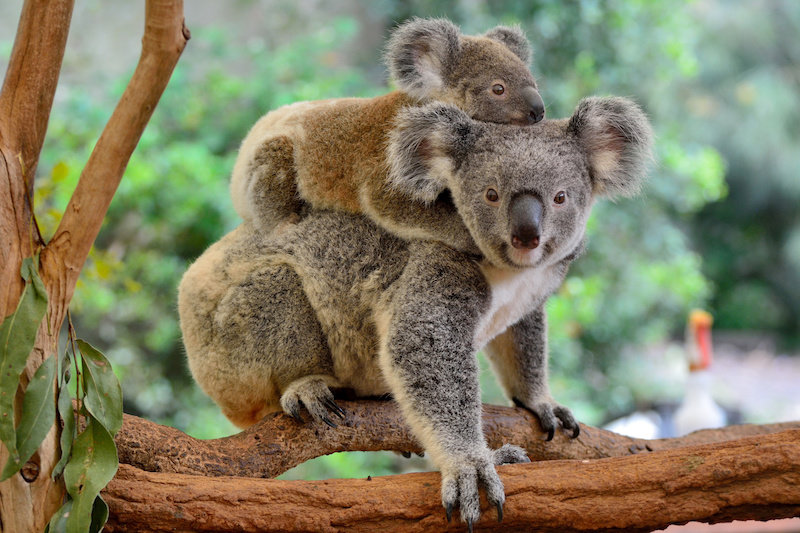
Protect Mona Vale's Bongin Bongin Bay - Establish An Aquatic Reserve
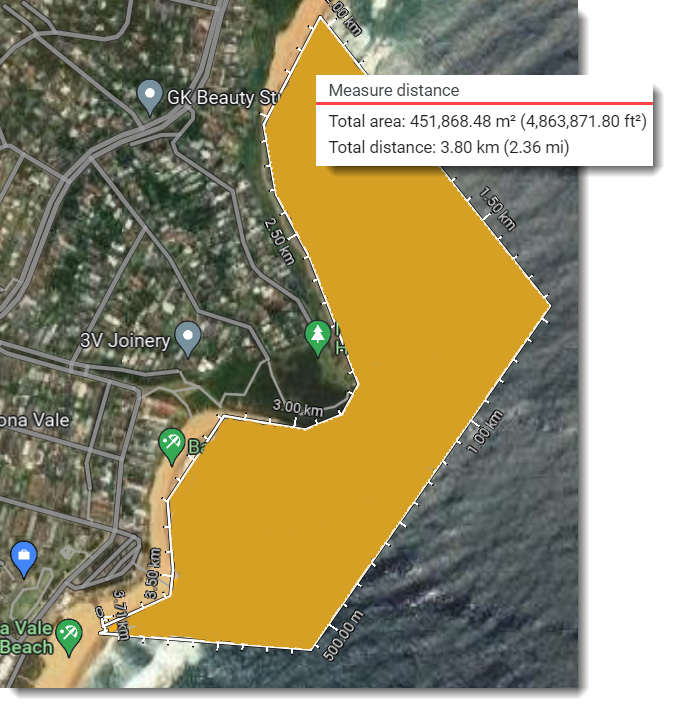
Friends Of Bongin Bongin Bay (Mona Vale Basin) Update: May 2023

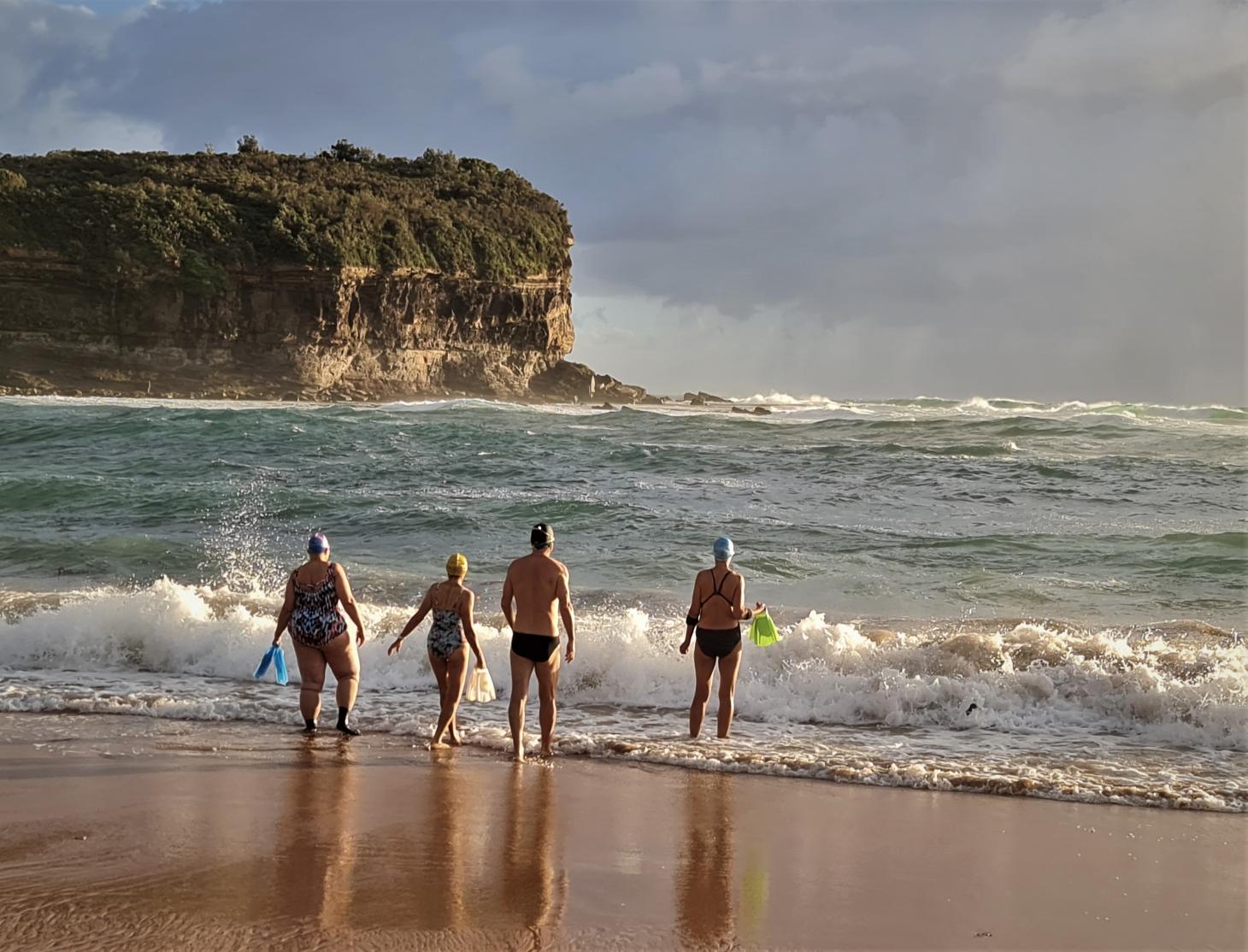
Northern Beaches Clean Up Crew: June 25 Winnererremy Bay, Mona Vale
Come and join us for our family friendly June clean up, in Winnererremy Bay on the Sunday June 25th at 10am. We meet in the grass area close to 7 Eric Green Drive. We have gloves, bags, and buckets, and grabbers. We're trying to remove as much plastic and rubbish as possible before it enters the water. Some of us can focus on the bush area and sandy/rocky areas, and others can walk along the water and even clean up in the water (at own risk).
We will clean up until around 11.15, and after that, we will sort and count the rubbish so we can contribute to research by entering it into a marine debris database. The sorting and counting is normally finished around noon, and we'll often go for lunch together at our own expense. We understand if you cannot stay for this part, but are grateful if you can. We appreciate any help we can get, no matter how small or big.
No booking required - just show up on the day - we will be there no matter what weather. We're a friendly group of people, and everyone is welcome to this family friendly event. It's a nice community - make some new friends and do a good deed for the planet at the same time. For everyone to feel welcome, please leave political and religious messages at home - this includes t-shirts with political campaign messages. Message us on our social media or send us an email if you are lost.
All welcome - the more the merrier. Please invite your friends too!
All details in our Facebook event or on our website.
Northern Beaches Clean Up Crew Facebook page: www.facebook.com/NorthernBeachesCleanUpCrew
Northern Beaches Clean Up Crew website: www.northernbeachescleanupcrew.com
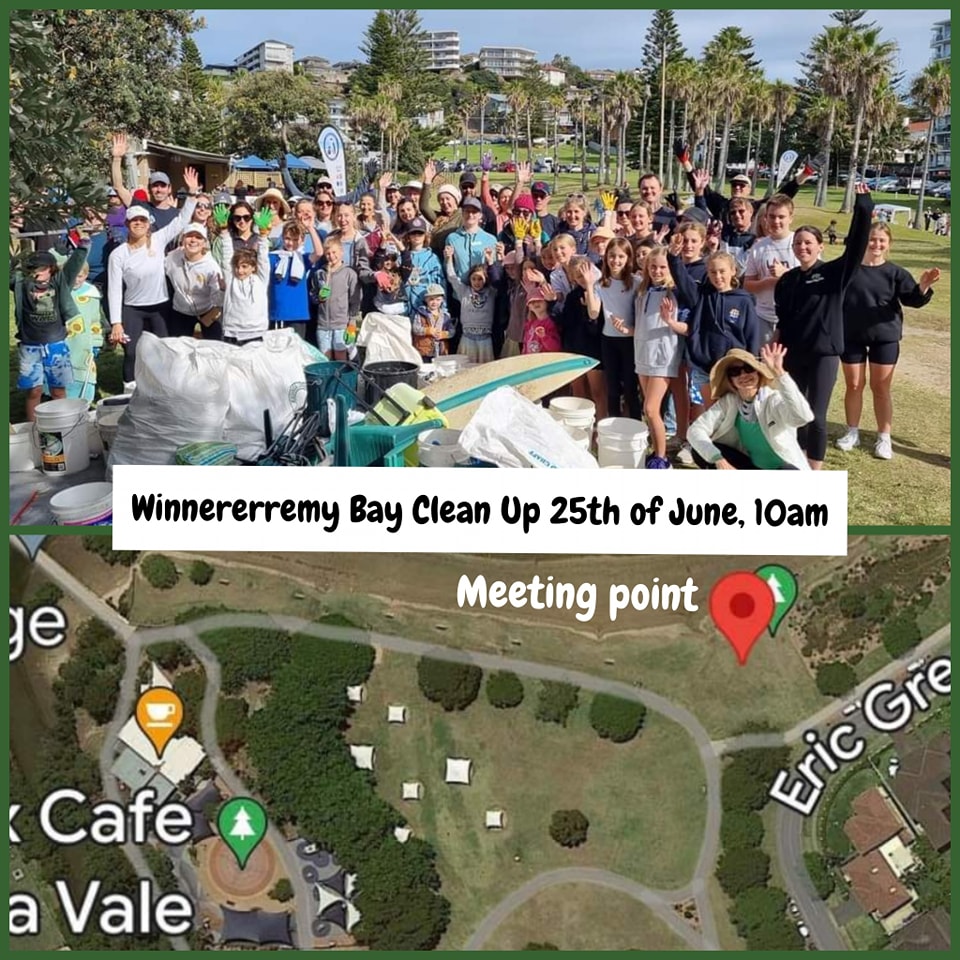
Freshwater Beach And Surrounds Clean Up
Done on Sunday May 28 2023
A huge thank you to everyone and cleaned up Freshwater Beach today. More than 100 people came and we are so happy and grateful to everyone who cares and helps making our beaches and local environment a better and cleaner place for all beings.
We had thousands of Styrofoam balls, about 30 single use coffee cups, nearly 90 plastic bottles, 164 glass bottles, 146 aluminium cans, 11 kilos of cardboard/paper, several surf boards, 127 cigarette butts, 3 broken plastic chairs, thousands of pieces of soft plastic and 22 balls among many of the items that we picked up.
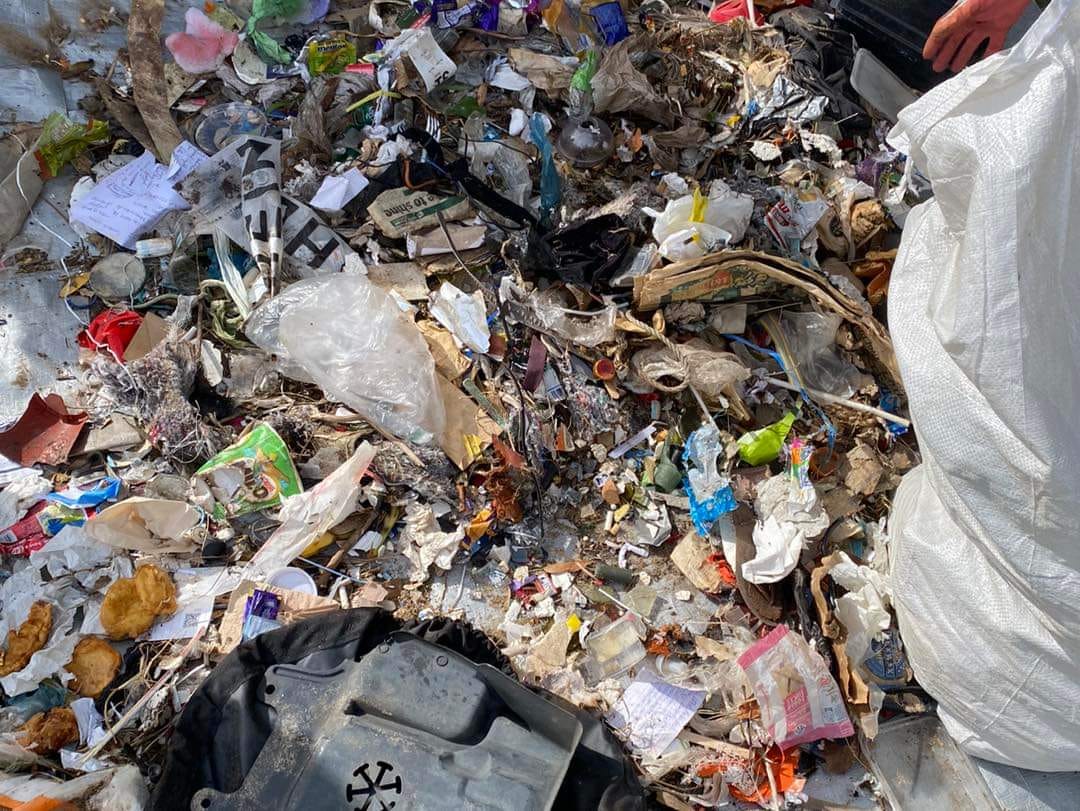
PNHA Guided Nature Walks 2023
Our walks are gentle strolls, enjoying and learning about the bush rather than aiming for destinations. Wear enclosed shoes. We welcome interested children over about 8 years old with carers. All Welcome.
Sunday June 25: Birdwatching and Bushland along Mullet Creek in Ingleside Chase Reserve
Swamp forest and coastal wetlands are rich habitat for fauna such as Swamp Wallaby and Diamond Python. Over 150 bird species have been recorded for the area. Red-Browed Finch is one.
Bring your binoculars and keep your ears pricked for bird calls. The track is mostly level, but with an optional steep climb near the Irrawong waterfall.
Meet: 8.30am near 31 Irrawong Rd North Narrabeen. Ends about 10.30.
So we know you’re coming please book by emailing: pnhainfo@gmail.com and include your phone number so we can contact you if weather is doubtful.
The whole PNHA 2023 Guided Nature Walks Program is available at: http://pnha.org.au/test-walks-and-talks/
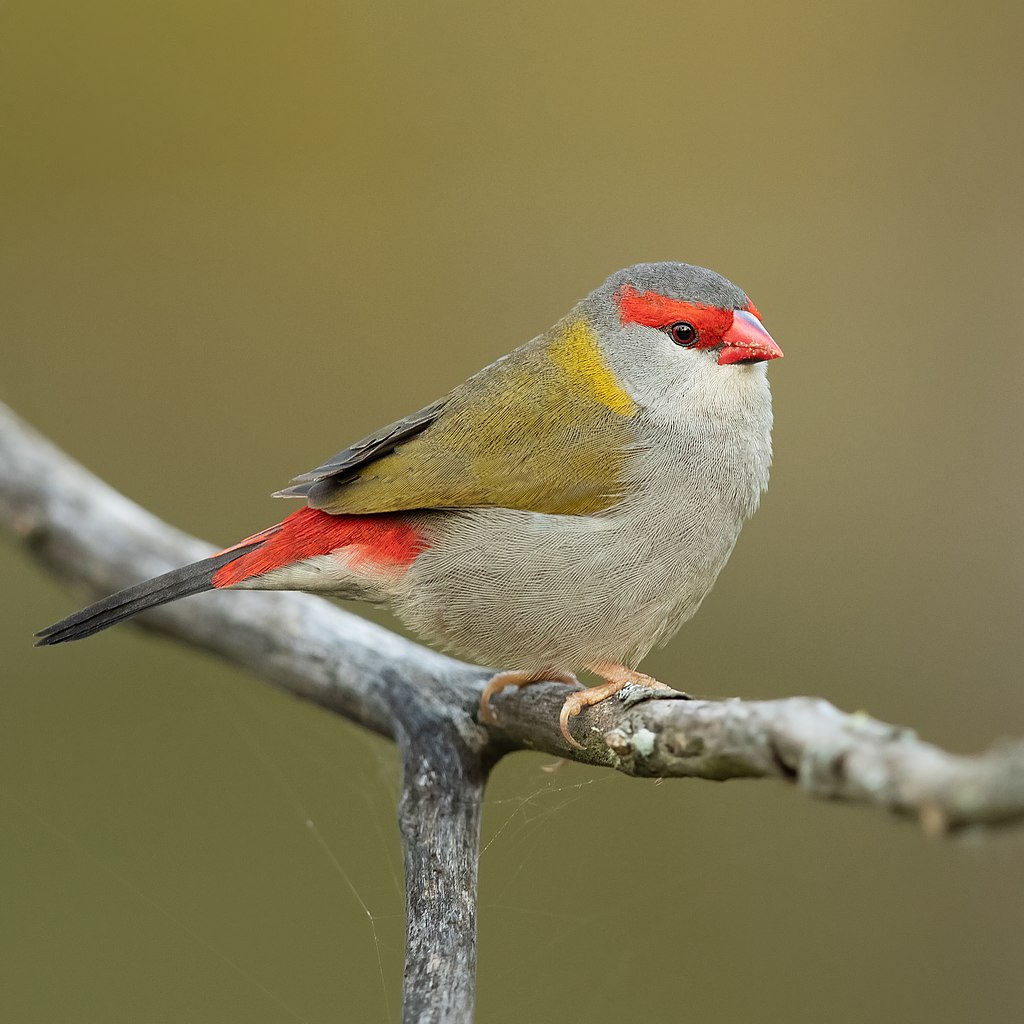
Red-browed finch (Neochmia temporalis). Photo: J J Harrison
Chemical CleanOut: June 2023
Mona Vale Beach Car Park: Sat 24, Sun 25 June 2023 - 9am-3:30pm
Surfview Road, Mona Vale
Only household quantities accepted. Maximum container size of 20kg or 20L per item.
*Up to 100L of paint (in 20L containers) now accepted at all Sydney, Hunter and Illawarra events.
Accepted:
Fluoro globes and tubes, Gas bottles and fire extinguishers, Household cleaners, Batteries, Paint*, Oils, Garden chemicals, Poisons, Smoke detectors.
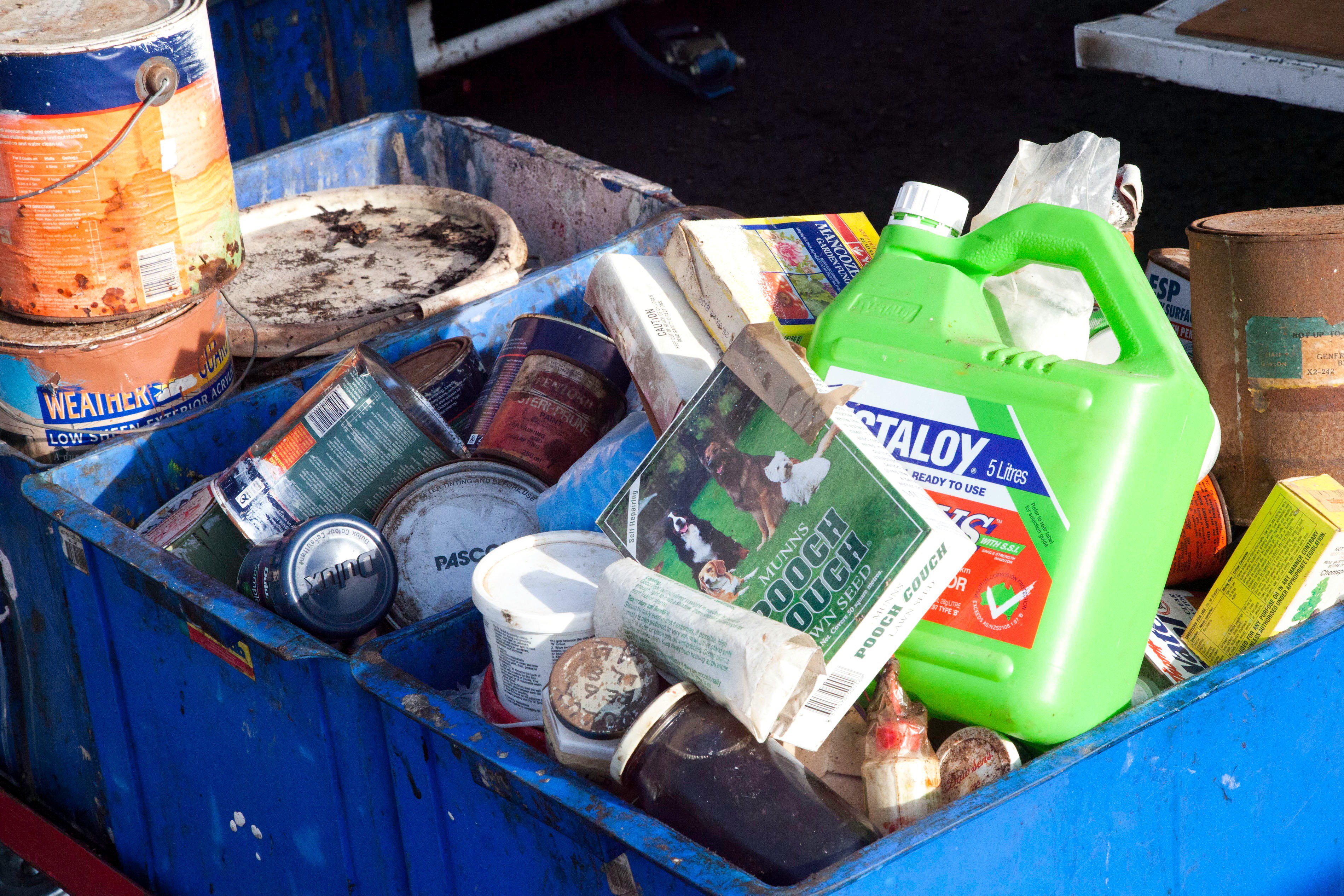
Permaculture NB: June To July 2023 Events
Permaculture Northern Beaches (PNB) is an active local group on Sydney's Northern Beaches working for ecological integrity and assisting you on a pathway to sustainability.
PNB holds monthly permaculture-related public meetings on the last Thursday of each month at the Narrabeen Tramshed Community & Arts Centre, Lakeview Room, 1395A Pittwater Road, Narrabeen. Buses stop directly at the centre and there is also car parking nearby. Doors open at 7:15 pm and meetings take place monthly from February to November.
Everyone is welcome!
We also hold a range of workshops, short courses, film and soup nights, practical garden tours, permabees (working bees), beehive installations, eco-product making sessions and much more.
CELEBRATING WORLD OCEANS DAY
Thursday, June 29, 2023: 7:30pm – 9:00pm
Narrabeen Tramshed Arts and Community Centre, Lakeview Room
1395A Pittwater Road, Narrabeen
Join us in World Oceans’ month to learn more about the Blue planet we live on.
Two great speakers will tell us the wonders and threats facing our oceans.
Australia Marine Conservation Society works on the big issues that risk our ocean wildlife - protecting critical ocean ecosystems with marine reserves around the nation, including Ningaloo and the Great Barrier Reef. As well as issues such as over-fishing and supertrawlers, and protecting threatened and endangered species like the Australian Sea Lion.
Surfrider Foundation is actively working to stop drilling and exploration for oil and gas off our coast (PEP2). The organisation works to protect our oceans, beaches and waves through a powerful activist network.
$5 entry by donation to pay for room hire. Organic teas and coffee are available at the night + swap table - bring plants, seeds, food, books and permaculture items to swap and share.
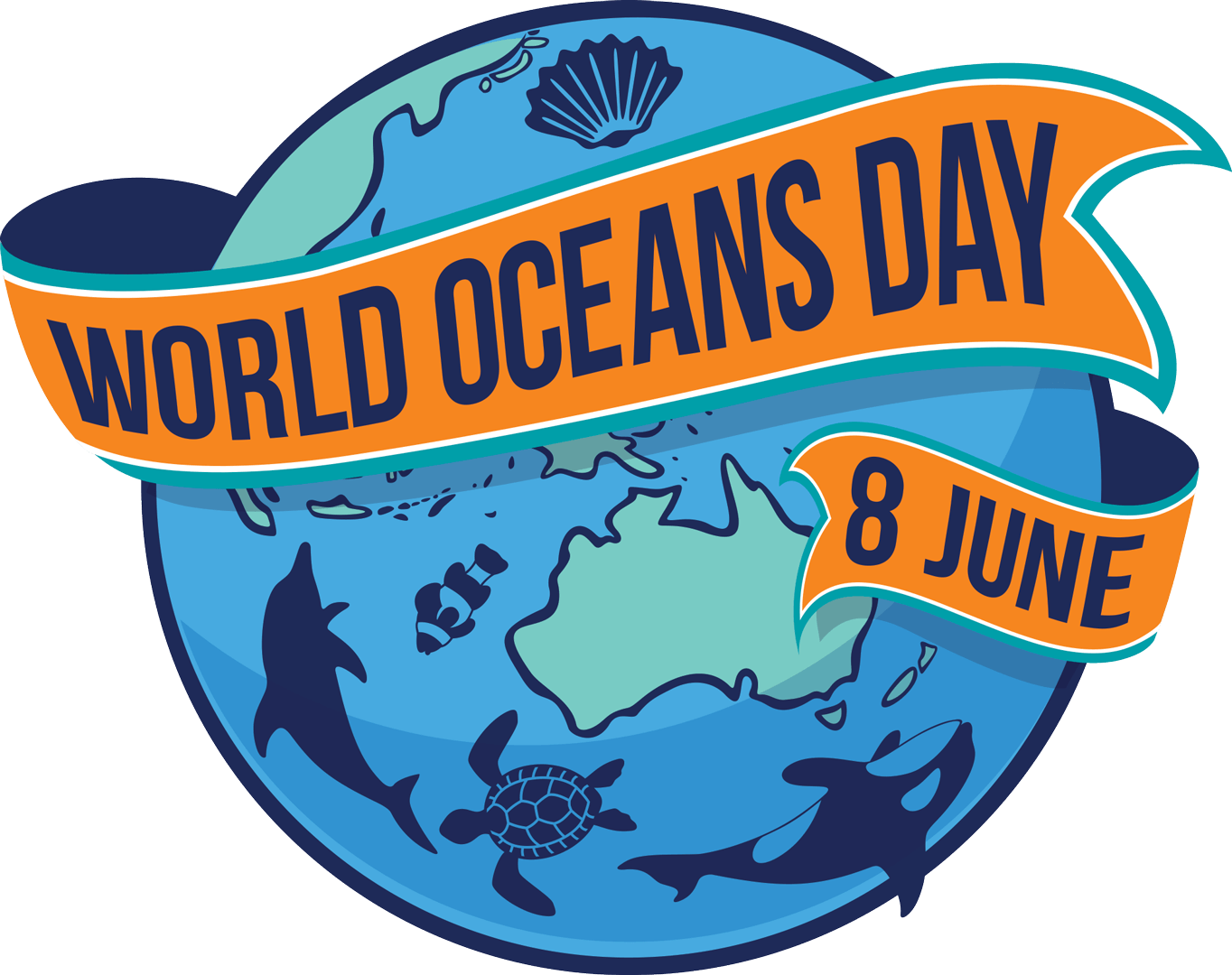
SEED SAVING CIRCLE
Saturday, July 8, 2023: 11:00am – 1:00pm
Balgowlah Community Garden
100 Griffiths Street, Balgowlah
Gather your seeds in winter for the coming spring. Share and swap seeds that are grown organically and locally. These seeds will be the best adapted you can find for the Northern Beaches climate and soils as many have been grown over generations.
Tap into the knowledge and the databank of seeds at Balgowlah Community Garden and PNB + share permaculture knowledge. This is an invaluable resource for the local community. Be part of the change - grow your own seeds and food.
Bring your non-alcoholic drinks and food to share on the day. The seed circle will be outdoors but under cover so dress weather-wise.
PLASTIC FREE JULY
Saturday, July 1, 2023 – Monday, July 31, 2023
Permaculture Northern Beaches is a part of the Plastic Free July challenge - Join Us!
The plastic bottles, bags and takeaway containers that we use for just a few minutes use a material that is designed to last forever. Every bit of plastic ever made still exists!
These plastics:
- Break up, not break down – becoming permanent pollution
- Are mostly made into low-grade products for just one more use or sent to a landfill
- End up in waterways and the ocean – where scientists predict there will be more tons of plastic than tons of fish by 2050
- Transfer to the food chain – carrying pollutants with them
- Increase our eco-footprint – plastic manufacturing consumes 6% of the world’s fossil fuels
Be part of the solution, by taking up these habits:
- Refusing plastic bags and packaging (choose your own alternatives)
- Reducing packaging where possible (opt for refills, remember your reusable shopping bags)
- Refusing plastics that escape as litter (e.g. straws, takeaway cups, utensils, balloons)
- Recycling what cannot be avoided by the use of alternatives.
Register to join 100,000 Australians and a million+ people worldwide stepping up in Plastic Free July www.plasticfreejuly.org
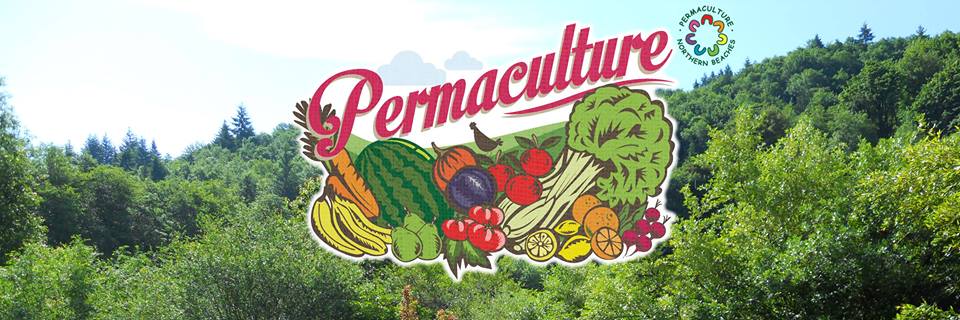
Bushcare In Pittwater
Where we work Which day What time
Avalon
Angophora Reserve 3rd Sunday 8:30 - 11:30am
Avalon Dunes 1st Sunday 8:30 - 11:30am
Avalon Golf Course 2nd Wednesday 3 - 5:30pm
Careel Creek 4th Saturday 8:30 - 11:30am
Toongari Reserve 3rd Saturday 9 - 12noon (8 - 11am in summer)
Bangalley Headland 2nd Sunday 9 to 12noon
Bayview
Winnererremy Bay 4th Sunday 9 to 12noon
Bilgola
North Bilgola Beach 3rd Monday 9 - 12noon
Algona Reserve 1st Saturday 9 - 12noon
Plateau Park 1st Friday 8:30 - 11:30am
Church Point
Browns Bay Reserve 1st Tuesday 9 - 12noon
McCarrs Creek Reserve Contact Bushcare Officer To be confirmed
Clareville
Old Wharf Reserve 3rd Saturday 8 - 11am
Elanora
Kundibah Reserve 4th Sunday 8:30 - 11:30am
Mona Vale
Mona Vale Beach Basin 1st Saturday 8 - 11am
Mona Vale Dunes 2nd Saturday +3rd Thursday 8:30 - 11:30am
Newport
Bungan Beach 4th Sunday 9 - 12noon
Crescent Reserve 3rd Sunday 9 - 12noon
North Newport Beach 4th Saturday 8:30 - 11:30am
Porter Reserve 2nd Saturday 8 - 11am
North Narrabeen
Irrawong Reserve 2nd Saturday 2 - 5pm
Palm Beach
North Palm Beach Dunes 3rd Saturday 9 - 12noon
Scotland Island
Catherine Park 2nd Sunday 10 - 12:30pm
Elizabeth Park 1st Saturday 9 - 12noon
Pathilda Reserve 3rd Saturday 9 - 12noon
Warriewood
Warriewood Wetlands 1st Sunday 8:30 - 11:30am
Whale Beach
Norma Park 1st Friday 9 - 12noon
Western Foreshores
Coopers Point, Elvina Bay 2nd Sunday 10 - 1pm
Rocky Point, Elvina Bay 1st Monday 9 - 12noon
Friends Of Narrabeen Lagoon Catchment Activities

Gardens And Environment Groups And Organisations In Pittwater
Report Fox Sightings
%20(1).jpg?timestamp=1675893929686)
New Marine Wildlife Rescue Group On The Central Coast
A new wildlife group was launched on the Central Coast on Saturday, December 10, 2022.
Marine Wildlife Rescue Central Coast (MWRCC) had its official launch at The Entrance Boat Shed at 10am.
The group comprises current and former members of ASTR, ORRCA, Sea Shepherd, Greenpeace, WIRES and Wildlife ARC, as well as vets, academics, and people from all walks of life.
Well known marine wildlife advocate and activist Cathy Gilmore is spearheading the organisation.
“We believe that it is time the Central Coast looked after its own marine wildlife, and not be under the control or directed by groups that aren’t based locally,” Gilmore said.
“We have the local knowledge and are set up to respond and help injured animals more quickly.
“This also means that donations and money fundraised will go directly into helping our local marine creatures, and not get tied up elsewhere in the state.”
The organisation plans to have rehabilitation facilities and rescue kits placed in strategic locations around the region.
MWRCC will also be in touch with Indigenous groups to learn the traditional importance of the local marine environment and its inhabitants.
“We want to work with these groups and share knowledge between us,” Gilmore said.
“This is an opportunity to help save and protect our local marine wildlife, so if you have passion and commitment, then you are more than welcome to join us.”
Marine Wildlife Rescue Central Coast has a Facebook page where you may contact members. Visit: https://www.facebook.com/profile.php?id=100076317431064
- Ph: 0478 439 965
- Email: marinewildlifecc@gmail.com
- Instagram: marinewildliferescuecc

Watch Out - Shorebirds About
.JPG.opt1460x973o0,0s1460x973.jpg?timestamp=1663629195339)
Possums In Your Roof?: Do The Right Thing

Aviaries + Possum Release Sites Needed

Tackling The Risks To The Reef: Gillnet Fishing To End In QLD - Establishing A 'Net-Free' North
June 5, 2023
The Albanese and Palaszczuk Labor Governments have announced critical funding to better protect threatened species that call the Great Barrier Reef home.
Over $160 million will be delivered to significantly reduce net fishing and other high risk fishing activities impacting the Reef. This includes ensuring the Great Barrier Reef is gillnet free by mid-2027.
Destructive gillnet fishing injures and kills threatened dugongs, turtles, dolphins and protected shark species.
As part of these reforms, the Albanese Government will request the Palaszczuk Government to declare threatened hammerhead sharks a no-take species for commercial fishers within Queensland waters.
The funding will also be used to:
- Create net-free zones including in the northern third of the Great Barrier Reef and parts of the Gulf of Carpentaria to better protect threatened species that move between the Reef and the Gulf.
- Accelerate implementation of the Sustainable Fisheries Strategy
- Introduce legislation to mandate the use of independent data validation on commercial fishing vessels to ensure we balance sustainable fisheries with protecting threatened species.
The Federal Labor government states it has wasted no time acting to protect our precious reef, including legislating more ambitious emissions reduction targets and investing more than $1.2 billion to protect and restore the Great Barrier Reef.
Federal Minister for the Environment and Water, Tanya Plibersek stated;
“The Great Barrier Reef is one the most beautiful places on Earth. We want to better protect it for our kids and grandkids.
“We know one of the most immediate threats to health of Reef is unsustainable fishing practices. It causes damage throughout the Reef, as threatened marine life like dugongs, turtles and dolphins are caught in nets and drown.
“The removal of gillnets in net-free zones on the Reef has already helped boost local fish populations. We want to see this happen right across the Reef.”
Queensland Minister for Agricultural Industry Development and Fisheries, Mark Furner stated;
“This is an investment in the future of the reef and a more sustainable future for its commercial fishing industry.
“Protecting good jobs in the fishing industry is crucial for the livelihoods of thousands of Queenslanders who depend on the state’s seafood supply chain.
“By transitioning to more sustainable fishing practices and taking measures to maintain fish stocks, we can ensure the long-term viability of good jobs in the fishing industry for our children and our grandchildren.”
Queensland Minister for Environment, Leanne Linard said;
“The implementation of these new protections underscores the commitment of the Palaszczuk Government to ensure the reef's long-term survival.
“The Great Barrier Reef is home to thousands of species and holds immense cultural significance to Indigenous people of the Queensland coast and the Torres Strait, who have maintained a deep connection with these waters for thousands of years.
“In keeping with its recognition as a UNESCO World Heritage site, the reef must be protected, not just for Queenslanders, but for all the people of the world.”
Special Envoy to the Great Barrier Reef, Senator Nita Green stated;
“Establishing a ‘Net-free North’ is an important step required to protect the Great Barrier Reef as an ecosystem and an economic asset.
“The Reef supports 64,000 jobs including thousands in regional Queensland. By working together with partners in science, tourism, agriculture and Traditional Owners we can continue to protect the Great Barrier Reef for generations to come.”
More information:
- All hammerhead sharks will be made a no-take species for commercial fishers in all Queensland waters, noting they are already no-take for recreational fishers.
- Buy-out and remove all N2 and N4 licences by 31 December 2023.
- Buy-out, remove and condition a limited number of N1 licences by 31 December 2023.
- Phase out the remaining limited N1 licences to make the Reef gillnet free by 30 June 2027.
- With residual funds, protect the Reef from other forms of commercial fishing through a voluntary commercial fishing licence buy-out.
- Accelerate implementation of the Sustainable Fisheries Strategy by introducing legislation to mandate independent data validation.
- Establish a “net-free north” from Cape Bedford to the tip of Cape York.
- Establish additional gillnet free zones in the Gulf of Carpentaria and other locations of high ecological value.
Restoring Barrier Reef Islands
June 8, 2023
The Federal Government announced on World Oceans Day 2023 it is investing $7.4 million to protect and restore Lady Elliot Island and Pine Islet on the Great Barrier Reef.
Lady Elliot Island is the southernmost island of the Great Barrier Reef and is one of the jewels in the crown of the Reef. The island and reef support hundreds of nesting seabirds and turtles. An investment of $1.9 million will restore the native cay vegetation, helping to build resilience against climate change.
Pine Islet is around 120 kilometres off the coast of Mackay and is home to asbestos contaminated buildings which are deteriorating and collapsing. An investment of $5.5 million will support the asbestos management plan, enabling the removal of asbestos and asbestos contaminated soil from the island.
Traditional Owners will also be supported to manage revegetation work.
Special Envoy for the Great Barrier Reef, Senator Nita Green visited Lady Elliot Island on World Oceans Day 2023 to announce these projects.
Minister for the Environment and Water, the Hon Tanya Plibersek stated;
“The Great Barrier Reef is one the most beautiful places on Earth. We want to better protect it for our kids and grandkids.
“The Federal Labor government is acting to protect our precious reef, including legislating more ambitious emissions reduction targets and investing a record $1.2 billion to protect and restore the Great Barrier Reef.
“This announcement will support the great work being done to protect and restore two of our Great Barrier Reef islands, Lady Elliot Island and Pine Islet.
“Through these island restoration and revegetation projects, critical habitat will be rebuilt and maintained on the islands, helping to protect our precious native species.”
Special Envoy for the Great Barrier Reef, Senator Nita Green said;
“This is a practical example of our government’s commitment to the protection of the Great Barrier Reef as one of Australia’s precious places.
“Lady Elliot Island and Pine Islet are important ecosystems on the Reef and our investment will help ensure their biodiversity values are preserved.
“We are working hard to build resilience and future-proof the Reef in the face of climate change, because doing so will also protect the 64,000 jobs it supports.”
Also announced the same day was $4.5 million in community projects to better protect our oceans and the precious species that call them home.
''Earlier this week we decided on a final marine park design to triple the size of the Macquarie Island Marine Park as part of our commitment to ocean conservation. But we know we need to also invest in practical solutions to tackle issues affecting marine creatures like climate change, light pollution and being caught as bycatch in fishing gear.'' Minister for the Environment and Water, Tanya Plibersek stated
''Too many marine animals, including threatened species like sawfish, dugongs and turtles, are being injured and killed in fishing nets. That’s why we’re delivering $2.8 million for seven projects to prevent animals being caught as bycatch. Funded projects include a new alternative mesh that will reduce the numbers of sawfish becoming entangled in nets in Queensland and a new system to design and trial purpose-built nets that help to retrieve entangled seabirds in Western Australia.
Climate change is the greatest risk to marine turtle recovery, with rising sea levels causing the ‘drowning’ of turtle nests. Beaches where turtles are nesting are also getting hotter, this rise in sand temperature is influencing the sex of hatchlings, resulting in more females than males. That’s why we’re investing over $1.5 million for four projects including protecting Olive Ridley turtles with shaded cages in Cape York and using Traditional Owner knowledge to improve management of the Flatback turtle on the Uunguu Coast in Western Australia.
We’re also announcing over $210,000 for five projects to help ‘switch off’ light pollution near threatened species’ coastal habitat. Light pollution can prevent species such as green turtle hatchlings from reaching the ocean and short-tailed shearwater fledglings from taking their first flight. Projects funded include the installation of light shields and filters and restoration of dunes to improve nesting habits and create natural light buffers.
This is on top of what we’re already doing to protect our oceans and those who call them home. We have:
- Tripled the size of the Macquarie Island Marine Park.
- Invested $1.2 billion in the Great Barrier Reef to improve water quality, remove pests and increase traditional owner management.
- Committed to protecting 30% of our oceans by 2030. Including the new Macquarie Island Marine Park, 48% of our oceans are marine parks and 22% are highly protected.
- Delivered an ambitious global high seas treaty to regulate the conservation and sustainable use of international waters.
- Negotiated for a strong new global agreement on plastic pollution, as part of our goal to see a plastic free Pacific in our lifetimes and invested $15 million to tackle deadly ghost nets in our northern waters.
- Doubled the funding for the Australian Institute of Marine Science, ensuring that our scientists can continue to lead the world with their research.
- Committed to phasing out gillnets in the Great Barrier Reef by 2027.
- Committed to developing a Sustainable Ocean Plan.
- Invested in restoring valuable blue carbon ecosystems.
Minister for the Environment and Water, Tanya Plibersek said;
“I want to better protect our precious oceans but there are serious pressures facing our oceans, pressures we need to acknowledge and confront.
“Oceans are soaking up a quarter of the world’s carbon emissions, and they’re capturing 90% of the heat generated by greenhouse gases.
“And they have become the unfortunate endpoint of our society’s addiction to plastics pollution.
“These problems require global action, but there is work that communities can do on the ground right now to protect our precious marine creatures.
“That’s why we’re delivering over $4.5 million in grants to Traditional Owners, local councils, researchers and businesses to help threatened turtles adapt to climate change, prevent light pollution and stop marine life being caught as bycatch in fishing gear.”
Community Ideas To Deliver The Murray-Darling Basin Plan
May 29, 2023
The Australian Government is inviting communities to share their views about how to best deliver the Murray-Darling Basin Plan.
The Government is committed to delivering the Plan in full, including 450 GL to enhance environmental outcomes. But we know communities and industry have previously felt left out of the conversation.
Delivering the plan includes achieving all water recovery targets. It means putting our rivers on a healthier and more sustainable path, while continuing to support Basin communities who help feed our nation.
The Government is working with Basin states and territories to do this.
Individuals and groups are welcome to make a submission that considers questions including:
- What ideas or concepts can help fully implement the Murray–Darling Basin Plan?
- Will these ideas recover water and deliver environmental outcomes?
- Are there ideas that will make a particular difference to your community?
- What are the challenges or risks to implementing these ideas?
To have your say, and find out more about the Plan, visit the consultation webpage: https://consult.dcceew.gov.au/ideas-to-deliver-the-basin-plan
The consultation closes July 3rd 2023
Minister for the Environment and Water Tanya Plibersek stated;
“We know that climate change has made the implementation of the Plan more important than ever.
“The Albanese Labor Government is committed to delivering the Murray–Darling Basin Plan in full. I’m pleased that all Basin states and territories are also committed to doing this.
“After years of delay and sabotage by the Liberals and Nationals, we want to get this right.
“I’ve said all options are on the table to deliver the Plan. I welcome innovative and practical ideas for how we can deliver a sustainable Basin for the communities, farmers, businesses and First Nations groups who rely on it.”
Australia And New Zealand Make Statement At Inaugural Climate And Finance Dialogue
June 8, 2023
The Australian government has signed a Joint Statement with New Zealand (PDF 199 KB) following a meeting between Treasurers and Climate Change Ministers. The Statement agrees to accelerate climate action by identifying shared economic opportunities to navigate a successful transition to net zero.
The Joint Statement was signed at the inaugural Australia–New Zealand 2+2 Climate and Finance Dialogue. The Dialogue was attended by Australian Treasurer Dr Jim Chalmers, Australian Minister for Climate Change and Energy Chris Bowen, New Zealand Minister of Finance Grant Robertson and New Zealand Minister of Climate Change James Shaw.
Ministers discussed the need for accelerated climate action to stay within a 1.5-degree temperature rise limit, and to harness the significant economic opportunities that the clean energy transformation offers Australia and New Zealand.
Australia and New Zealand recognised climate change as the single greatest threat to the Pacific and committed to working together and with Pacific partners to ensure the regions’ resilience and prosperity.
The Dialogue focused on navigating shared economic challenges and opportunities presented by the transition to net zero, identifying areas for collaboration to navigate a successful transition.
“Australia and New Zealand have a long history of collaboration, but now is the time to extend that cooperation to issues affecting the Pacific region, including urgent action on climate change.” said Minister Bowen.
“Partnering with our closest neighbours will help us to seize the economic opportunities to collaborate on cheaper, cleaner energy and climate action as the world accelerates towards net zero.
“Climate change is the single greatest threat to our Pacific family, and longstanding leadership on the international stage continues to be critical.
“Now that Australia is back at the table, we are working with our Pacific partners to help the region cut emissions in this critical decade and ensure no-one is left behind.”
Ministers agreed to:
- Hold the Australia-New Zealand 2+2 Climate and Finance Dialogue annually and establish a joint working group to support policy implementation.
- Establish a Net Zero Government Working Group to support decarbonising public services, climate-related disclosures, and sustainable procurement.
- Co-ordinate efforts to stimulate production and supply of electric and zero emission vehicles into the Australasian market, including accelerating the uptake of zero emissions vehicles in government fleets, and explore the potential for collaboration on vehicle manufacturing and improving charging infrastructure.
- Work to align sustainable finance frameworks and tools across the Tasman to enhance interoperability and support businesses operating across the economic region.
- Work together to develop adaptation indicators and monitoring frameworks.
- Support the development of internationally aligned Guarantee of Origin Schemes, including dedicated conversations to explore the adoption of Australia's GO Scheme in New Zealand.
Macquarie Island Marine Park To Triple In Size
June 5, 2023
Macquarie Island Marine Park is set to triple in size thanks to a decision by the Environment Minister, Tanya Plibersek, on a final marine park design to place an extra 385,000 square kilometres of Australia’s oceans under high protection.
Minister Plibersek will now recommend to the Governor-General, for his consideration in Executive Council, the proclamation to expand the Macquarie Island Marine Park.
This is a huge win for world ocean protection. The expanded design will see the Macquarie Island Marine Park grow from 162,000 square kilometres to 475,465 square kilometres. Ninety-three per cent or 385,000 square kilometres of the park – an area larger than Germany – will be completely closed to fishing, mining and other extractive activities, making a globally significant contribution to the health and resilience of our oceans.
Halfway between Hobart and Antarctica, Macquarie Island and the surrounding waters are home to some of the world’s most iconic species including the endemic royal penguin, rockhopper penguin, subantarctic fur seal, southern elephant seal, black-browed albatross and the grey petrel.
Following two months of public consultation, the Government has signed off on the marine park design. Over 14,700 submissions were received through the process, with over 99% in support.
The Minister’s decision announced today incorporates minor adjustments to the Patagonian Toothfish fishing zone in response to feedback provided by the sustainable commercial fishing industry that operate around Macquarie Island. The expanded marine park will not impact their existing operations.
This decision means our marine parks will make up over 48 per cent of Australian oceans.
Minister for the Environment and Water Tanya Plibersek stated;
“I want to protect our oceans for our kids and grandkids. This announcement is part of our mission to conserve Australia’s special places, particularly those that are home to threatened species.
“Macquarie Island is an exceptional place. It’s a remote wildlife wonderland – a critical breeding ground for millions of seabirds, seals and penguins.
“It is the only place on earth where royal penguins breed, with their distinctive yellow mohawk crests. It’s a place where endangered albatross come to rest their giant wings after foraging for food at sea.
“Australians understand that the health of our nation is bound up with the health of our natural world. As Minister for the Environment, I am determined to protect more of what’s precious, to repair more of what’s damaged, and to manage nature better for the future.”
Background:
The development of a new management plan for the Macquarie Island Marine Park, and the other 13 marine parks in the South-east region, is underway.
Macquarie Island Marine Park lies offshore from the isolated subantarctic Macquarie Island about 1500 km south-east of Tasmania and extends far out into the Southern Ocean.
Macquarie Island was inscribed on the World Heritage List in 1997 on the basis of its outstanding natural values. The listing includes the in-shore waters of the Tasmanian park, the Macquarie Island Nature Reserve, and some of the waters in the Macquarie Island Marine Park that surround this.
Seamless Stewardship Launched
June 7 2023
Minister for the Environment and Water Tanya Plibersek has helped launch the Seamless scheme, led by the industry's peak body, the Australian Fashion Council (AFC), which received $1 million from the previous federal government to set up the scheme.
Signing up is voluntary and imposes a 4 cent per garment levy on the signatories' sales, with the money to be put towards initiatives such as sustainable design, the resale of used items, and textile recycling.
So far six brands have signed up; Big W, David Jones, Lorna Jane, Rip Curl, RM Williams and The Iconic.
The AFC says it needs 60 per cent market adoption to raise $36 million per year, making its current membership far below what is needed.
In a speech delivered at the launch of Seamless in Sydney Environment Minister Tanya Plibersek told the rest of the fashion industry it had 12 months to sign up or else face regulation directly.
On June 8th the Federal Environment Minister stated
''BIG W, Lorna Jane Active, David Jones, THE ICONIC, R.M.Williams and Rip Curl. Yesterday, these six brands signed onto the industry-led scheme to end clothing waste.
It’s about changing fashion in Australia from relying on disposability to valuing reuse.
Designing clothes to last, made out of quality materials so they can be reused, repaired, and eventually recycled.
These brands have committed to paying a levy to fund better design and better sorting and recycling.
Now, it’s up to other brands to sign on and make it successful within twelve months or I’ll step in and regulate. We have to stop this waste.''
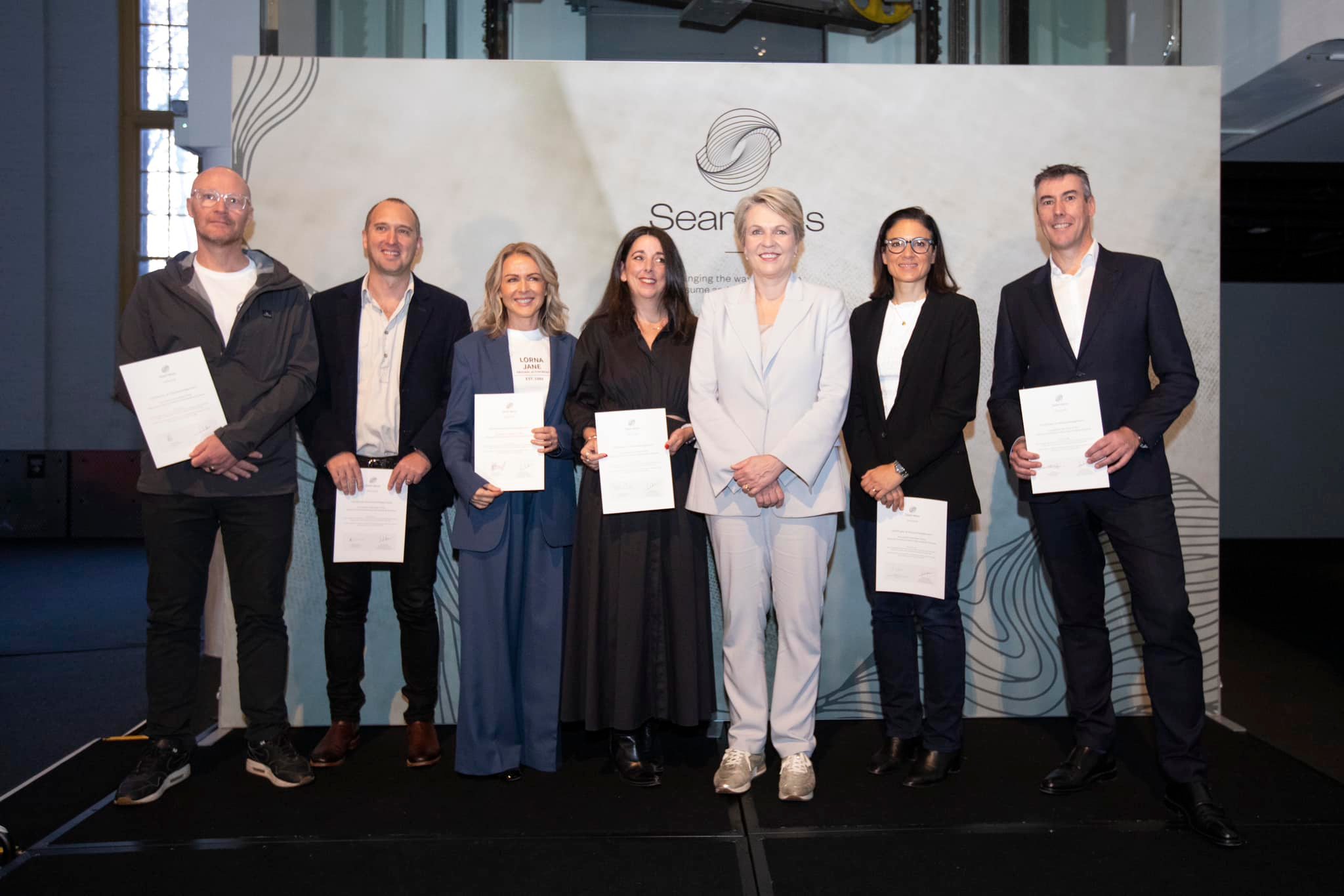
Environment Minister Tanya Plibersek at the launch of Seamless
Background
The Australian Fashion Council has led a Consortium to create a national stewardship scheme called Seamless, that aims to make Australian fashion and clothing truly circular, and significantly reduce the 200,000 tonnes of clothing that currently goes to Australian landfill each year.
WHY WE NEED A RESPONSE
On average, every Australian buys 56 items of clothing yearly, most of which are made from non-sustainable, non-durable materials. Also, Australia has no systematic resources for the collection of unwearable clothing. As a result, clothing waste has become one of the largest contributors to Australia’s waste problem.
THE PATHWAY TO CHANGE
No single organisation can address these issues alone, so the Australian Fashion Council has led a Consortium to design a scheme that aims to make Australian fashion truly circular by transforming outdated business models, driving innovation, changing citizen behaviour and recycling clothing in high value applications.
A STEWARDSHIP APPROACH
Seamless is a clothing stewardship scheme which recognises that the fashion and clothing brands who place clothes on the market are responsible for the entire life of that garment, from design through to recycling or sustainable disposal.
LED BY FOUNDATION MEMBERS
The pioneering and progressive brands that are the foundation members of Seamless are BIG W, David Jones, Lorna Jane, Rip Curl, R.M. Williams and THE ICONIC. Each organisation will play an important part in the 12-month transition phase while Seamless is established.
Whitehaven’s New Maules Creek Expansion Must Not Proceed Community States
June 5, 2023
Lock the Gate Alliance has condemned Whitehaven's plan to expand its Maules Creek coal mine, saying it highlights the company’s total disregard for the damage coal is inflicting on local communities and the climate.
Whitehaven began contacting locals late last week and quietly uploaded expansion plans on its website.
Based on Whitehaven’s map - which does not include an exact size - the expansion would bring the mine closer to Maules Creek village, including a local school, and would carve out more of Leard State Forest.
Leard Forest was the site of mass community protests, which involved now Senator David Pocock, when Whitehaven began constructing the coal mine there in 2014.
The expansion would mean Maules Creek coal mine would operate until 2043 - nine years more than the existing operation. Whitehaven would mine 126 million tonnes of coal in total if the expansion goes ahead.
The application comes as Whitehaven faces fresh scrutiny over emissions produced at its Narrabri mine, with media reporting it is polluting three times more than originally expected.
Boggabri farmer Sally Hunter said, "Whitehaven knows increasingly ambitious greenhouse gas reduction targets both domestically and in customer countries mean the end is nigh for coal.
“Rather than sensibly introducing a diversification plan to support local workers, the company is going hell for leather to rip what it can out of the ground before the market finally crashes, leaving everyone high and dry.
“Failing to prepare for the inevitable risks leaving economies in places like Boggabri and Narrabri destitute when the crash comes. It’s time for government intervention to prevent vampires like Whitehaven from sucking our region dry.”
Maules Creek resident Ros Druce said, “Whitehaven has proved over the years it has callous disregard for the local community and has racked up a list of fines and criminal offences .
“So far, no penalty has been significant enough to make this repeat offender change its ways.
“The Minns Government must take action against Whitehaven where the Perrottet Government failed. At the very least, Whitehaven must not be rewarded with permission to build any new coal projects or expansions.”
Despite conducting a Community Consultative Committee meeting on Wednesday May 24th, Whitehaven did not mention its expansion plans, instead quietly uploading them to the website a week later.
Regional QLD Council Wants Gasfield Approval Revoked
June 5, 2023
A council in regional Queensland that hosts the highest number of coal mines of any local government in the state wants the Palaszczuk Government to “revoke” its recent approval of Blue Energy’s planned 530 well gasfield.
The Palaszczuk Government approved the company’s environmental authority in March. However, Isaac Regional Council has since requested the approval be revoked, due to Blue Energy’s lack of social impact assessment, workforce analysis, lack of engagement with the regional council and broader local community, and the likely damage the project would inflict on the region’s roads.
The submission shows the council fears the gasfield will threaten the social fabric of the community. It also notes Blue Energy failed to provide sufficient information about how the project would impact the local housing market, traffic network, and existing workforce.
Last year, the traditionally resource-supportive council passed a motion condemning Adani’s behaviour, which operates its Carmichael coal mine in the local government area, alleging non compliance with the company’s infrastructure and employment conditions.
Lock the Gate Alliance Queensland coordinator Ellie Smith said the council’s submission showed locals were fed up with mining companies who didn’t give a stuff about the community they operated in, and the Palaszczuk Government’s environmental laws let them get away with it.
“You would have thought Blue Energy would have learnt the importance of a social licence after locals kicked it out of the Wide Bay. Clearly, this hasn’t happened,” she said.
“Isaac Regional Council has borne the brunt of some of the most negative social and environmental impacts of Queensland’s coal industry. It's clear the council is now saying enough is enough to both the Palaszczuk Government and to companies that try to barge in and damage the social fabric and existing infrastructure of the region.
“It’s typical of coal seam gas companies to try to run roughshod over the community in which they want to operate. It has caused heartache and community destruction on the Darling and Western Downs.
“We strongly commend Isaac Regional Council for making such a determined stand against this gasfield. We urge the Palaszczuk Government to heed these concerns, and revoke Blue’s environmental authority as part of its internal review.”
Mackay Conservation Group climate campaigner Imogen Lindenberg said, “In addition to the social damage they cause, coal seam gas projects like what Blue Energy wants to build inflict massive environmental destruction.
“They produce millions of tonnes of wastewater and also contribute to climate change, which is harming the Great Barrier Reef.
“Here in Mackay, we’re particularly vulnerable to climate change driven extreme weather, such as more severe cyclones, flooding, and bushfires.
“The Queensland Palaszczuk Government should listen to concerned community groups and councils and revoke the environmental authority for this disastrous project.”
Lock the Gate Alliance is separately writing to Federal Environmental Minister Tanya Plibersek, requesting that she call in Blue Energy’s gasfield for assessment under the EPBC Act.
The Isaac Council’s submission and revocation request was made available to all groups who made submissions against Blue Energy’s gasfield proposal, including Lock the Gate Alliance.
Background
Federal and Queensland governments have spent $5 million on a pre-feasibility study for a new gas pipeline to link the north Bowen Basin, where Blue wants to build its gasfield, to the pipeline network further south.
Blue Energy’s application did not state how many CSG wells it would require. It proposed 530 multiwell pads, with between two and six wells on each pad. State Government approval has now been given for 530 wells.
The gasfield would drain more than 19 billion litres of water over 20 years.
Fifty-three water bores lie within 10km of this project that farmers rely on for stock and home use.
Greenhouse gas emissions are at an all-time high and Earth is warming faster than ever – report

Greenhouse gas emissions are at an all-time high, with yearly emissions equivalent to 54 billion tonnes of carbon dioxide. Humanity has caused surface temperatures to warm by 1.14°C since the late 1800s – and this warming is increasing at an unprecedented rate of over 0.2°C per decade. The highest temperatures recorded over land (what climate scientists refer to as maximum land surface temperatures) are increasing twice as fast. And it’s these temperatures that are most relevant to the record heat people feel or whether wildfires spawn.
These changes mean that the remaining carbon budget for 1.5°C – the amount of carbon dioxide global society can still emit and keep a 50% chance of holding temperature rise to 1.5°C – is now only around 250 billion tonnes. At current emission levels, this will run out in less than six years.
These are the findings of a new report that I have published with 49 other scientists from around the world. It tracks the most recent changes in emissions, temperatures and energy flows in the Earth system. Data that can inform climate action. For example, by informing how fast emissions need to fall to meet international temperature goals. The first report, in what is to become a series of annual reports, has captured the pace at which Earth is heating up.
We are launching an initiative called Indicators of Global Climate Change which brings all the necessary ingredients together to track human-induced warming year by year for the first time. We track emissions of both greenhouse gases and particulate pollution and their warming or cooling influences to determine their role in causing surface temperature change.
We use rigorous methods based on those established in the comprehensive United Nations Intergovernmental Panel on Climate Change (IPCC) assessments. IPCC assessments are trusted as a reliable source of information by governments and their climate policy negotiators. Yet, they are published around eight years apart.
In a rapidly changing world where policies can shift quickly, this leaves an information gap: trusted indicators on the state of the climate have been missing from annual UN climate negotiations.
Climate Data For All To Use
In this first report, we collected evidence on all greenhouse gas emissions and their changes during the pandemic. From this, we built the evidence to quantify the temperature change caused by human activity. This tells us how close the world is to breaching the long-term goal of holding temperatures to within 1.5°C set by the Paris agreement, and how quickly we are approaching it.
In this first report, we explained how much things have changed since the last comprehensive assessment by the IPCC (the sixth assessment report, or AR6) which evaluated data up to 2019.
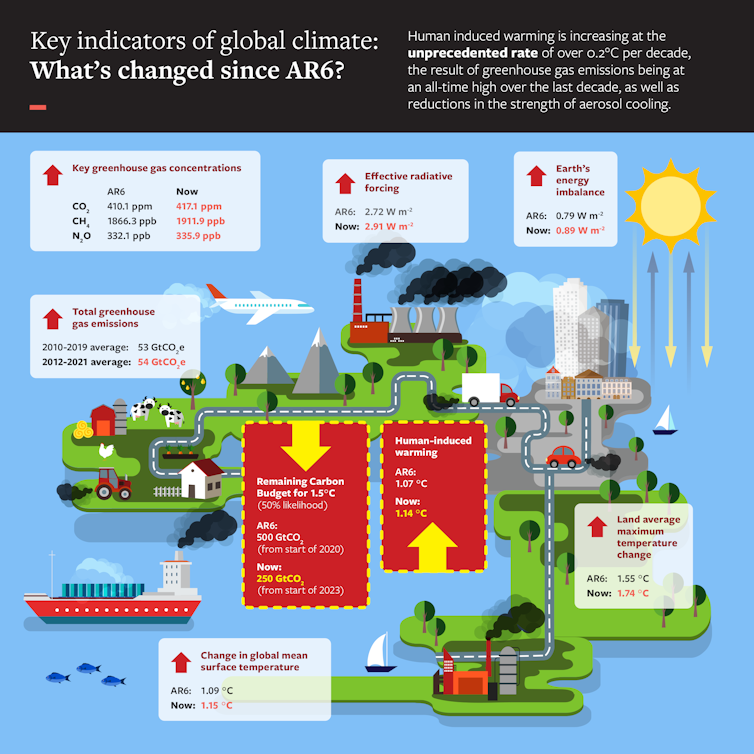
To evaluate how much of the observed temperature changes are caused by human activity, we needed to track how these activities alter energy flows within the Earth system. Emissions of greenhouse gas accumulate in the atmosphere, trapping heat, while polluting particles, such as sulphate aerosols produced from burning coal, tend to cool the Earth by reflecting more sunlight. In recent years, greenhouse gases have risen strongly but pollution has fallen around the world. Both these trends compound to warm the climate. We assessed that this is causing the highest-ever rate of global warming – over 0.2°C per decade.
In future years, we would like to involve a wider scientific community and especially make it possible to track climate extremes, such as heatwaves, floods and wildfires, like those currently sweeping through Canada. We mark our intention for doing this in this first year by tracking how daily maximum temperatures have increased over land. These are rising twice as fast as the average temperature – and are already 1.74°C above where they were in the 1800s.
We are hoping this data is used by the main users of IPCC information – namely, government climate negotiators – so they understand the scale of action needed. We also want a much wider audience to have access to timely and trustworthy climate data in a fully transparent way, where the scientific methods are documented for the public record, so we are building an open data dashboard that anyone can access to see the data.
We want to build trust in our exercise and so we present this data without advocating for particular policies. We adopt the IPCC mantra of being “policy relevant” but not “policy prescriptive”. We want to let the data speak for itself, giving policymakers the agency to understand the pace of climate change and necessary actions.
As we produce a series of these reports over the coming years, depending on the choices made throughout society, we may track continued high rates of emissions or warming, or a rapid emission decline, with warming levels beginning to stabilise. Whatever happens, the global climate science community will be watching and reporting.

Don’t have time to read about climate change as much as you’d like?
Get a weekly roundup in your inbox instead. Every Wednesday, The Conversation’s environment editor writes Imagine, a short email that goes a little deeper into just one climate issue. Join the 20,000+ readers who’ve subscribed so far.![]()
Piers Forster, Professor of Physical Climate Change; Director of the Priestley International Centre for Climate, University of Leeds
This article is republished from The Conversation under a Creative Commons license. Read the original article.
Has time been called on the native forest logging deals of the 1990s? Here’s what the Albanese government can do
Peter Burnett, Australian National UniversityVictoria recently announced an end to native forest logging in December 2023, six years earlier than previously announced. Western Australia is ending it from January 2024. The Greens and independent federal MPs are now calling on the Albanese government to end native forest logging nationally.
These developments are already destabilising the federal government’s environmental law reform agenda, and could even derail it.
While the states regulate forestry, the Commonwealth does have constitutional powers to intervene. But it could then face legal claims for compensation, as well as fierce opposition from the logging industry and unions.
Ultimately, though, the government’s hand may be forced.
Decades Of Disputes Coming To A Head
The disputes over forestry in Australia go back to the early 1970s. That was when environmentalists began fighting the clearing of native forests to make way for federally funded softwood plantations and the exporting of native timber woodchips.
Later forest battles in the 1980s, including over World Heritage nominations, brought forests such as the Daintree in Queensland and the Lemonthyme in Tasmania to public attention.
Prime Minister Paul Keating struck a deal with the premiers in 1992. All governments committed to the National Forest Policy Statement and to regional forest agreements (RFAs). They agreed to cooperate to conserve the forest environment while encouraging the forestry industry.
Later that decade the Howard government negotiated ten regional agreements, covering forests in New South Wales, Victoria, Western Australia and Tasmania. Queensland negotiated its own RFA-like deal for its south-east region. Logging there is due to end from 2024.
Each agreement would last 20 years, but be reviewed every five. These agreements were exempt from the Commonwealth’s shiny new Environment Protection and Biodiversity Conservation (EPBC) Act. The rationale was that the agreements had already gone through their own environmental approval process.
Agreements Face Fresh Scrutiny
Fast-forward to 2023. The regional forest agreements have all been reviewed and rolled over for up to 20 years.
All is not sweetness and light, however. The agreements have been heavily criticised for setting a lower environmental bar than the EPBC Act, made worse by being poorly implemented and enforced.
In 2021, when the WA government announced it would end native forest logging, it cited environmental reasons and declining timber yields.
Then, last November, Victorian environment groups managed to win two Supreme Court cases. Essentially, they won on the ground that the state-owned VicForests was not following ecological protocols put in place for regional forest agreements.
This brought logging to a temporary halt, now made permanent after this year. No doubt the extra cost of complying with the protocols was a major factor in the decision.
Federally, a review in 2020 of the EPBC Act by Professor Graeme Samuel recommended regional forest agreements be subject to proposed new National Environmental Standards. These standards are now the centrepiece of the Albanese government’s Nature Positive Plan reforms.
The government committed to “work towards” bringing the forestry agreements under the new standards. But it has yet to spell out the detail. The future of forestry in NSW, Tasmania and Queensland remains unclear.
What Could The Feds Do?
What can the Commonwealth actually do? Can it at least raise the environmental bar for native forest logging to the same standard as for everything else, if not more?
The states directly regulate forestry and are in the forestry business themselves. The easiest way to raise environmental standards then would be for the remaining forestry states to take their own action. However, the prospects of that happening are unclear.
A 2022 plan by the then Perrotet government to end native forest logging in NSW was blocked by the junior Coalition partner, the Nationals. Queensland’s review of its native timber industry remains ongoing after two years. Tasmania remains committed to its forest industry.
Even though the Commonwealth has preferred to pull strings from a distance, through national policy and regional forest agreements, it does have constitutional powers up its sleeve. These powers include the capacity to protect biodiversity directly in implementing the international Convention on Biological Diversity.
Problems Are Less A Matter Of Powers Than Politics
The problems lie more on the policy side. With the non-Victorian forestry agreements renewed for 20 years, the industry will cry foul if new environmental standards take more forest acreage out of play. They also have a card up their sleeves. The agreements provide for the Commonwealth to pay compensation if it passes legislation to increase environmental protection in the forests.
On the other hand, a standard for forests that made little difference to current forestry, or which took effect only after agreements expire, would be unacceptable to environment groups.
Then there is the crossbench push to override regional forest agreements and ban native forest logging across the nation. Given its liking for small-target approaches, it’s hard to see the Albanese government coming at something with such sweeping implications, including for union members, despite agitation from Labor’s own environment ginger group, LEAN.
Then again, the government might not have much choice.
In Victoria, the courts forced the state government’s hand. For the Albanese government, it may be the Senate, where the crossbench has the power to hold the government’s entire environmental reform package to ransom.
It seems time is being called on the forest settlement of the 1990s. The government could use the time between now and next year’s Senate debate on its reform package to work up a new approach. It could be built around forest restoration, conservation and Indigenous empowerment, as experts are proposing.
If it doesn’t, we are headed for quite a stoush.![]()
Peter Burnett, Honorary Associate Professor, ANU College of Law, Australian National University
This article is republished from The Conversation under a Creative Commons license. Read the original article.
More than 60 billion leaf litter invertebrates died in the Black Summer fires. Here’s what that did to ecosystems
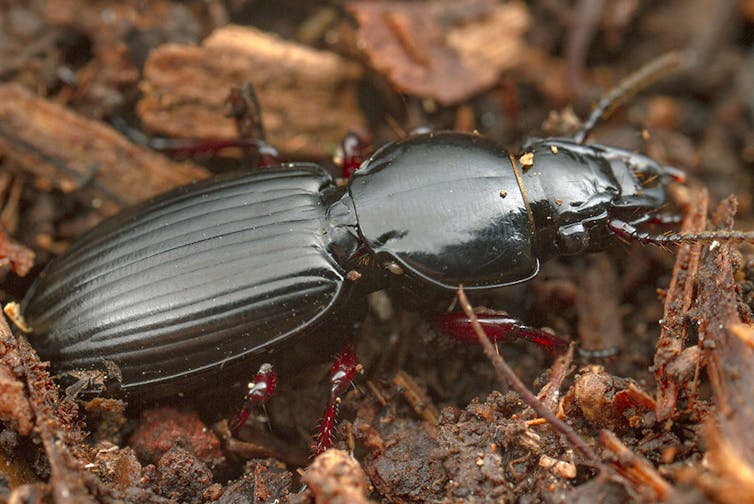
The Black Summer megafires engulfing south-eastern Australia in 2019–2020 were so intense they burned habitats rarely exposed to fire, such as southern warm temperate rainforest.
These rainforests range from East Gippsland in Victoria up to just south of Sydney. Usually, they stay moist enough to prevent major fires. But in that unprecedented summer of fire, 80,000 hectares burned. Our new research estimates more than 60 billion invertebrates in the soil and leaf litter died too.
While our hearts went out to the burned koalas and kangaroos, this was a silent tragedy. These tiny creatures are enormously important in ecosystems. They eat dead leaves, create rich soil, and provide a key food source for bandicoots and lyrebirds. Many species have very small ranges, putting them at real risk of decline or even extinction from fire.
As renowned naturalist E. O. Wilson once said, invertebrates are the “the little things that run the world”. But because they are small and out of sight, we still underestimate their significance in ecosystems and their contribution to Australia’s biodiversity. They’re all but forgotten when ecological disasters strike.

How Did We Find Out How Many Invertebrates Died?
In warm temperate rainforests, there’s a layer of moist leaf litter which is home to an abundance of ancient lifeforms. These include the macroinvertebrates big enough to see with the naked eye, such as velvet worms, snails, land hoppers, millipedes, slaters and beetles.
Many of these groups include species with very small ranges, putting them at particular risk from bushfire and other changes to their environments.
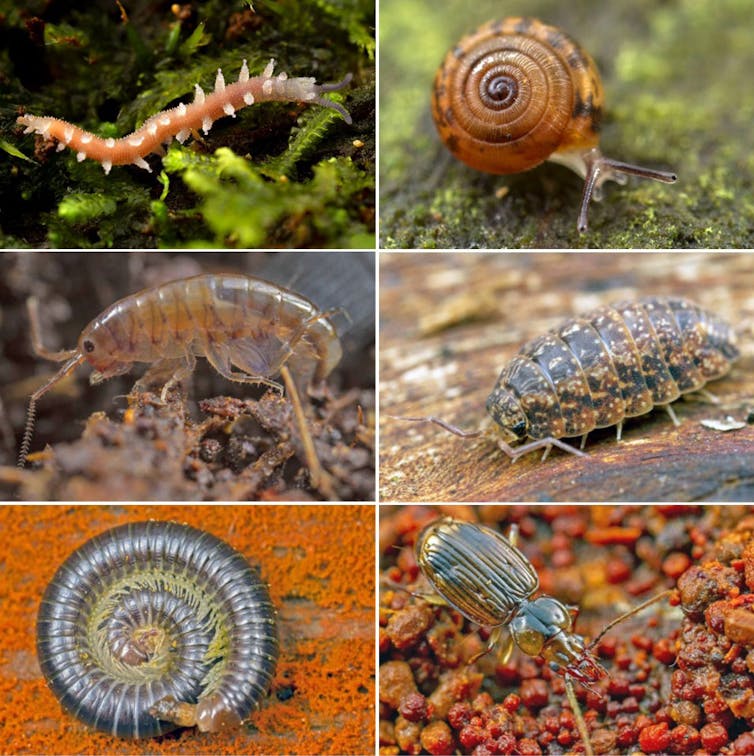
The fires incinerated much of the leaf litter and its inhabitants. To find out the toll on these creatures, a year after the fires we set out to collect leaf litter samples from 52 temperate rainforest sites ranging from Buchan in East Gippsland, Victoria, to Nowra in New South Wales, across the lands of the Kurnai, Bidawal and Yuin people. Then we compared sites subject to medium and high severity fires with those that had escaped the fire.
Back in the lab, we ran the samples through Tullgren funnels, which sort leaves from creatures, then counted the macroinvertebrates. We excluded the tiny springtails and mites, which are hugely abundant mesoinvertebrates. We found every hectare of unburnt rainforest had 2.5 million litter macroinvertebrates, while severely burnt forests had a quarter as many.

If we look at all temperate rainforest burned at different severities across the south-east that means 60 billion tiny deaths. But of all the forest that burned during that summer, rainforests made up only about 1%. The total loss might be closer to 6 trillion individuals. Then to get to truly extraordinary numbers, we can include mites and springtails which account for around 95% of individual invertebrates. That would give us an estimate of 120 trillion.
Why Are These Tiny Creatures So Important?
Invertebrates account for fully 99% of all animal species and most of the weight of animals on the planet. Renowned Australian scientist Baron Robert May is famously quoted as saying “to a good approximation, all species are insects”. Even now, an estimated 70% of all Australian invertebrate species remain undescribed. Many will go extinct before we have time to document them.
Although we know little of the ecology of most invertebrate species, collectively we know they play crucial roles in ecosystems. Losing this rich food source is likely to slow the recovery of key ecosystem engineers such as lyrebirds and bandicoots, which turn over large volumes of dirt in search of them.
When we try to replant forests without invertebrates, many plants and trees struggle. That’s why conservationists are using leaf litter transplants to move vital invertebrates from healthy forests to new ones.
These critters are a vital way nutrients cycle through our forests by breaking down leaves and other organic matter. Globally, they’re directly responsible for converting about 40% of all leaf litter into soil. By turning over leaves or shredding them into pieces, they make it possible for microbes to help decompose organic matter. Without this work, leaf litter would begin to pile up, setting the scene for more fires.
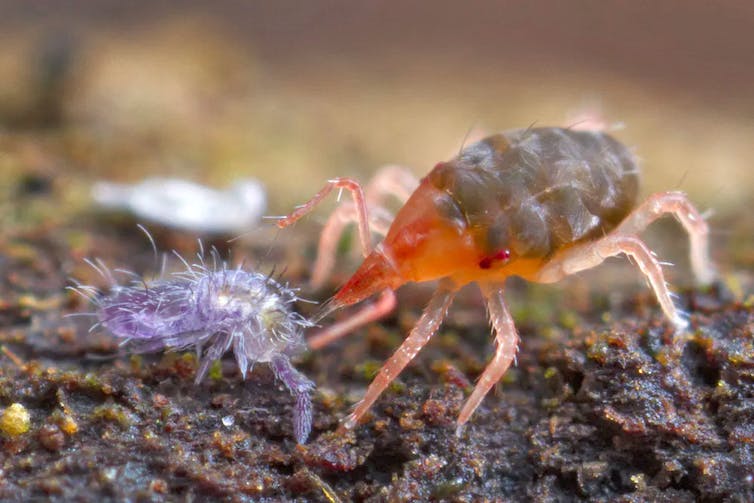
When we lose billions or trillions of invertebrates, we may see the area become more susceptible to future fires.
More frequent fires means slower decomposition, which means leaf litter builds up more rapidly. This might be a direct effect of the loss of invertebrates due to fire.
We found the most damaging fires were those where almost all of the canopy was burned. These intense treetop fires killed off three to four times as many invertebrates as fires where only half of the canopy burned.
That’s good news, as it suggests species can tolerate fires, as long as some litter habitat is left. Recovery efforts should focus on the sites where the most canopy burned.
In the wake of fires, rainforest species risk getting pushed out by surrounding eucalyptus trees, which are better at tolerating fire – and encourage more fires by dropping large volumes of litter.
You might think bugs can easily bounce back as the rainforest regrows. But recolonisation doesn’t always happen. Land hoppers, millipedes and isopods (slaters) can be extremely abundant in leaf litter, but none of them can fly to a new location. The dry forest between two sheltered rainforest gullies is so hostile to invertebrates like land hoppers that they can die in minutes when removed from their moist homes.
What Can We Do?
The future holds more fire, as the world heats up. How can we protect these vital invertebrates? One method is to make their habitats better connected wherever possible. Another is to rewild with minibeasts, seeding severely burnt sites with healthy litter invertebrates from nearby unburnt rainforests.
While we can calculate the numbers of individuals lost to fire, we don’t know much about whether the fires caused extinctions because many species are still unknown to science.
We can no longer overlook these minibeasts and the vital roles they play in ecosystems. We would miss them if they were gone. ![]()
Heloise Gibb, Professor, La Trobe University and Nick Porch, Senior Lecturer in Environmental Earth Science, Deakin University
This article is republished from The Conversation under a Creative Commons license. Read the original article.
Warm is the new norm for the Great Barrier Reef – and a likely El Niño raises red flags
Scott F. Heron, James Cook University; Jodie L. Rummer, James Cook University, and Jon C. Day, James Cook UniversityThe Bureau of Meteorology this week declared a 70% chance of an El Niño developing this year. This raises concern for the health of the Great Barrier Reef, which is under continuing threat from climate change.
Recent summers have shown the devastating damage heat stress can wreak on the reef. We must act urgently to protect this underwater marvel – through this likely El Niño, and beyond.
We are coral reef and climate scientists, and policy experts. We’ve seen how the Great Barrier Reef is nearing its tipping point. After this point, it will become unrecognisable as a functioning ecosystem.
But the scale of climate threat is beyond the tools currently used to manage the Great Barrier Reef. New measures and sustained effort are needed – at local, national, and international scales – if we’re serious about saving this natural wonder.
International Treasure Under Threat
The Great Barrier Reef is internationally renowned for its biodiversity, including more than 450 species of coral, 1,600 species of fish and 6,000 species of molluscs.
It is also an economic workhorse, contributing about A$6 billion to the Australian economy and providing some 64,000 full-time jobs. Many industries and coastal communities in Queensland rely on a healthy Great Barrier Reef.
But Australia’s reefs are in trouble and climate change is the biggest threat – bringing heatwaves, severe cyclones and more acidic oceans.
The background temperature of the Great Barrier Reef has warmed by 0.8℃ since 1910. This warming can couple with ocean temperature variability, such as from El Niño and its counterpart, La Niña. But because the Great Barrier Reef is already struggling under climate change, an El Niño could mean even more pressure.
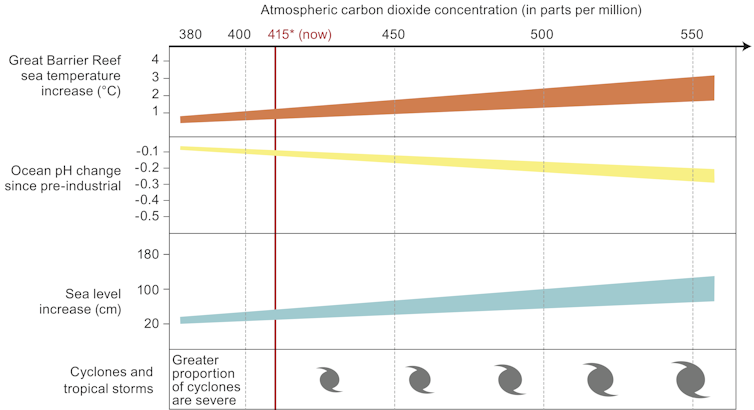
The Bathtub Is Filling
We hope this analogy helps explain the situation.
Imagine a bathtub. The water inside it represents global sea-surface temperature. When the bathtub was only half-full, temporary heat variability (from El Niño) caused splashes, but they were contained in the tub.
Now fast-forward to the present day. For more than a century, humans have been heating the planet by burning fossil fuels. The background temperature has risen and the bathtub is now almost filled to the brim. Add a splash of heat from El Niño and the bath spills over.
These splashes bring consequences: more mass bleaching of coral and, in severe cases, widespread coral death.
El Niño and La Niña have become more variable in recent decades. This has meant more frequent and stronger events – bigger splashes in the bathtub – that pose a grave threat to the Great Barrier Reef’s health and biodiversity.
All the while, the bathtub keeps filling.
The World Meteorological Organisation reported that the next five years will be the warmest since records began. And 2023 will almost certainly be among the ten warmest years on record.
Earth’s average temperature is predicted to exceed 1.5℃ of warming in at least one of the next five years. This would produce a big splash – but it doesn’t represent the bathtub level reaching the brim.
Under the global climate accord known as the Paris Agreement, nations are pursuing efforts to limit the average global temperature increase to 1.5℃ above pre-industrial levels. Background warming beyond 1.5℃ is widely considered by climate scientists as dangerous. We’re entering an era in which hot and more frequent splashes are imminent – and the survival of coral reefs is becoming increasingly threatened.
Clearly, the global warming we’re seeing now is unprecedented. We must turn off the tap.

An Inadequate Tool Kit
Unless global emissions are drastically reduced, frequent severe bleaching is projected this century for all 29 World Heritage-listed coral reefs.
This would cause untold ecological damage. It would also reduce the reefs’ ability to support human communities that depend on them.
Coral bleaching is not the only threat to the Great Barrier Reef. Other pressing problems include poor water quality from land-based runoff, crown-of-thorns starfish and unsustainable fishing and coastal development.
So how do we deal with all of this? A range of management actions exists.
Banning fishing in some areas and limiting exploitation elsewhere has benefited conservation, while also enhancing fisheries.
But other actions have had mixed success. And not all available tools are being applied effectively.
For example, “special management areas” were intended to restrict human use of the Great Barrier Reef for conservation or management purposes. But their use has been limited. And emergency implementations of these areas, allowed under the law, have never been used.
Crucially, none of the available actions were designed to respond to climate threats. The reality is, the scale of climate disturbance is beyond the available management tools.
What Are We Waiting For?
The scientific evidence is unequivocal. We must work at local, national, and international scales to help the Great Barrier Reef better cope with climate change. The likely arrival of an El Niño makes this task ever more urgent.
Australian and international governments must take immediate and decisive action on emissions reduction. This includes banning new coal and gas projects and rapidly shifting to renewable energy. Communities reliant on fossil-fuel industries should be helped to transition to new livelihoods.
Reef management agencies need to tackle climate threats more effectively – at a scale commensurate with the problem. This requires a new way of managing key areas. That could mean, for example, temporarily closing off parts of the Great Barrier Reef affected by coral bleaching to give them a reprieve from other stressors such as fishing and tourism.
And individuals must also ensure our everyday choices – in transport, consumption and elsewhere – help tackle the climate threat.
It’s time for us all to double-down and ensure the survival of the Great Barrier Reef, and the planet. There is no room for complacency. So what are we waiting for?![]()
Scott F. Heron, Associate Professor in Physics, James Cook University; Jodie L. Rummer, Professor of Marine Biology, James Cook University, and Jon C. Day, PSM, Adjunct Senior Research Fellow, College of Science and Engineering, James Cook University
This article is republished from The Conversation under a Creative Commons license. Read the original article.
Building activity produces 18% of emissions and a shocking 40% of our landfill waste. We must move to a circular economy – here’s how
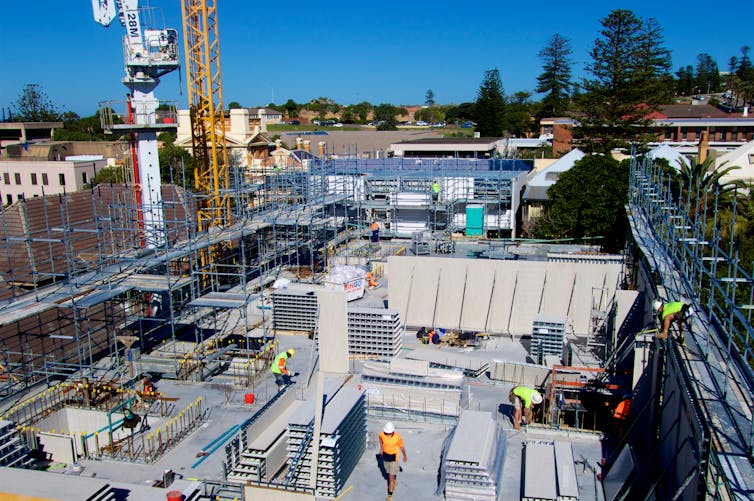
Architecture, engineering and construction employ 1.2 million people in Australia and account for 9% of GDP. But our biggest services sector also produces roughly 40% of landfill waste and accounts for 18.1% of Australia’s carbon footprint. The sector must change its practices fast for Australia to meet its commitments to cut emissions under the Paris Agreement.
A circular economic model can help solve the environmental challenges created by our built environment – water, waste and power systems, transport infrastructure and the buildings we live and work in. A circular economy involves sharing, leasing, reusing, repairing, refurbishing and recycling materials and products for as long as possible.
Circular economy principles have gained recognition from all levels of government in Australia. But there’s a big gap between acknowledgement and action. Progress towards systemic change has been very limited.
A new report by university and industry experts lays out a roadmap to a circular economy. Those working in the sector reported the top three barriers as: a lack of incentives, a lack of specific regulations, and a lack of knowledge. The top three enablers were: research and development of enabling technologies, education of stakeholders, and evidence of the circular economy’s added value.
So What Are The World Leaders Doing?
Extensive research for the report drew on real-world experiences, including a survey and interviews with stakeholders. The report offers practical recommendations to drive the transformation to a circular economy, with examples from global front-runners.
The first recommendation is to learn from these nations. Most are in Europe.
A leading example is the Netherlands’ “Cirkelstad”. This national platform connects key players in the transition to a circular economy in major cities. It provides a database of exemplary projects, research and policies, as well as training and advice.
Cirkelstad highlights the importance of broad collaboration, including research organisations. One outcome is the City Deal initiative. It has brought together more than 100 stakeholders with the shared goal of making circular construction the norm. They include government bodies, contractors, housing associations, clients, networks, interest groups and knowledge institutions.
We rarely see such collaboration in Australia. Connections between government, research and industry practices have been weak. Our universities compete fiercely.
In Denmark and Sweden, rigorous regulations have been effective in promoting circular practices. Denmark has incentives for the use of secondary materials such as recycled brick. It also promotes designs that make buildings easy to disassemble.
In Sweden, contractors must give priority to using secondary materials in public projects. Suppliers are evaluated based on their environmental impacts
In Canada, Toronto is notable for its proactive approach. Measures include a cap on upfront carbon emissions for all new city-owned buildings.
Test beds and pilot projects have proven effective, too. A good example is the UK’s Waste House.
Waste House was built using more than 85% waste material from households and construction sites. Yet it’s a top-rated low-energy building. The project is an inspiration for architects and builders to challenge conventional construction methods and embrace circular practices.
Much of the focus of Finland’s circular economy initiatives is on construction and urban planning. Various policy tools and incentives encourage the use of recycled or renewable materials in construction. The renovation of Laakso hospital in Helsinki is a notable example.
Strategic zoning of public spaces can also be used to bolster circular economy activities. An example is the repurposing of urban land for activities such as waste sorting.
How Can Australia Create A Circular Economy?
Australia has been slow to adopt such measures. There are voluntary schemes, such as Green Star, that include emission caps for buildings. However, Australia lacks specific, well-defined requirements to adopt circular economy practices across the built environment sector.
Our report’s recommendations include:
- develop metrics and targets to promote resource efficiency
- adopt measurable circular procurement practices for public projects
- provide incentives for circular practices
- establish technical codes and standards that foster the use of secondary products.
The report finds funding for collaborative projects is badly needed too. Regrettably, the Australian built environment is not seen as a research funding priority. But more funding is essential to foster the innovation needed to make the transition to a circular economy.
Innovation can help us reconcile the public demand for spacious homes with sustainable construction practices. We can achieve this through a mix of strategies:
- moving towards modular construction techniques
- creating incentives to adopt circular design principles
- making adaptive reuse of existing structures a priority
- designing multi-functional spaces that makes the most of resources.
Integrating circular economy principles into education and training at universities and schools can embed a culture of innovation. Equipping students with this knowledge and skills will enable the next generation to drive change in our built environment.
Currently, there are few Australian-based training programs that focus on the circular economy. And available courses and programs overseas are costly.
There is also a need to promote inclusivity in the built environment sector. Circular solutions must incorporate cultural considerations.
By embracing the above strategies, Australia can foster a harmonious balance between cultural values, environmental sustainability and efficient resource use.
Collectively, these initiatives will lay the foundation for a circular economy in the built environment sector. The growing need for housing and infrastructure underscores the urgency of achieving this goal in Australia. Ultimately, consumers, industry and the environment will all benefit.![]()
M. Reza Hosseini, Senior Lecturer in Construction, Deputy Director, Mediated Intelligence in Design (MInD) Research Lab, Deakin University and Tuba Kocaturk, Deputy Head, School of Architecture & Built Environment, and Director, Mediated Intelligence in Design (MInD) Research Lab, Deakin University
This article is republished from The Conversation under a Creative Commons license. Read the original article.
‘Too small and carefree’: endangered animals released into the wild may lack the match-fitness to evade predators
Natasha Harrison, The University of Western Australia; Adrian Wayne, The University of Western Australia; Jaana Dielenberg, Charles Darwin University, and Nicola Mitchell, The University of Western AustraliaBreeding threatened mammals in fenced, predator-free areas is a common conservation strategy in Australia. The method is designed to protect vulnerable species and breed animals for release into the wild.
But our research – involving a cute, digging mammal known as a woylie – suggests the strategy may put animals at a distinct disadvantage once they’re fending for themselves.
We found animals bred in fenced conservation areas, known as “havens”, lost traits they need to detect and escape predators. It’s likely this made them less able to survive in the wild.
This unintended downside could jeopardise the survival of endangered species such as woylies. It shows we must increase investment in managing wild populations of threatened species, and help animals in havens get accustomed to predators.
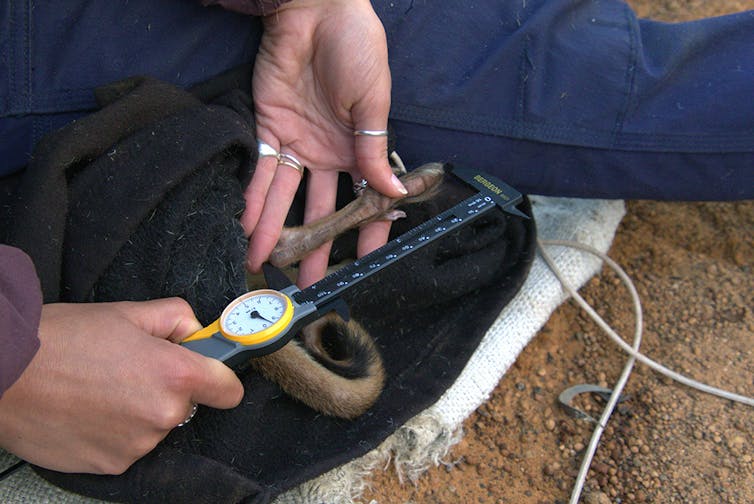
Saving Our Disappearing Mammals
Woylies (also known as brush-tailed bettongs) are small marsupials that jump around like kangaroos. They improve soil health through their prolific digging; a single woylie can turn over about five tonnes of soil each year.
These animals were once abundant across much of Australia’s southern and semi-arid areas. They are now endangered, due to habitat loss and being killed by introduced predators such as cats and foxes.
Since Europeans arrived in Australia, one in ten native mammals have become extinct. Many more once-abundant species have fallen to critically low numbers.
Given the vulnerability of many mammals to introduced predators, conservation havens have been established around Australia – both inside fences on the mainland, and on offshore islands.
Nationally, more than 120 havens now exist. They protect about 200 threatened mammal populations from introduced predators.
In many ways, havens have been a huge success. Populations of woylies and many other mammals have greatly increased inside havens and at least 13 extinctions have been avoided.
However, havens cover only around 0.1% of the country. For conservation to be effective, animals must be returned to areas where the species once lived, where they can perform their important roles in nature.
But do animals bred in havens have what it takes to survive outside the fence? Our research examined this question.
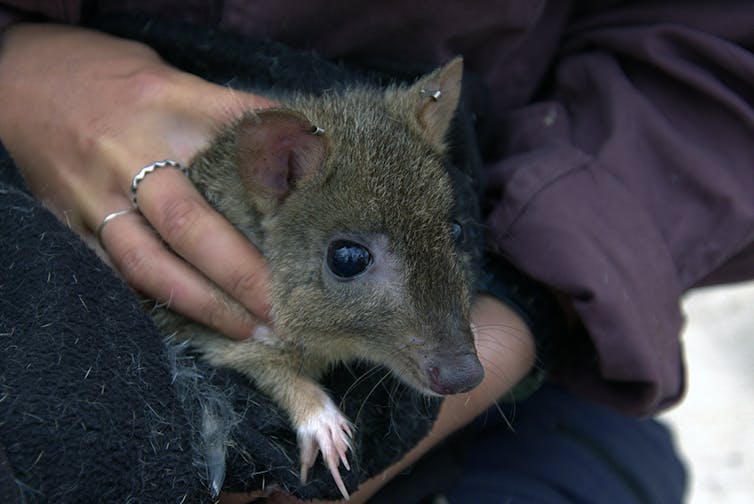
Life Outside The Fence
We examined ten-years of monitoring data collected from woylie populations inside and outside of a haven in Western Australia, and compared the two groups.
Inside the haven, where there were no predators, competition for food was the biggest pressure. Bold, carefree woylies ate before more cautious individuals which likely discouraged cautious behaviour.
What’s more, in just four generations, woylies born inside havens became successively smaller than previous generations and their feet became shorter.
Why? We suspect it’s because food supply was limited and the animals didn’t need to escape from predators – which meant there was less benefit in being big. At this stage, we don’t know if the changes were the result of natural selection (in other words, survival of the fittest) or what’s known as “phenotypic plasticity” – changes in an organism in response to their environment.
The data showed protected woylies also became less reactive and fearful. It meant humans (and potential predators) could get relatively close to the animals before they fled.
Woylies in havens also had a dampened response to other natural anti-predator responses, such as ejecting young from their pouch to distract predators while they escape. (This may sound brutal, but it’s a survival strategy also used by other marsupials such as quokkas and potoroos.)
The loss of anti-predator traits has also been observed in populations of other species in havens, including the boodie, brushtail possum and eastern bettong.
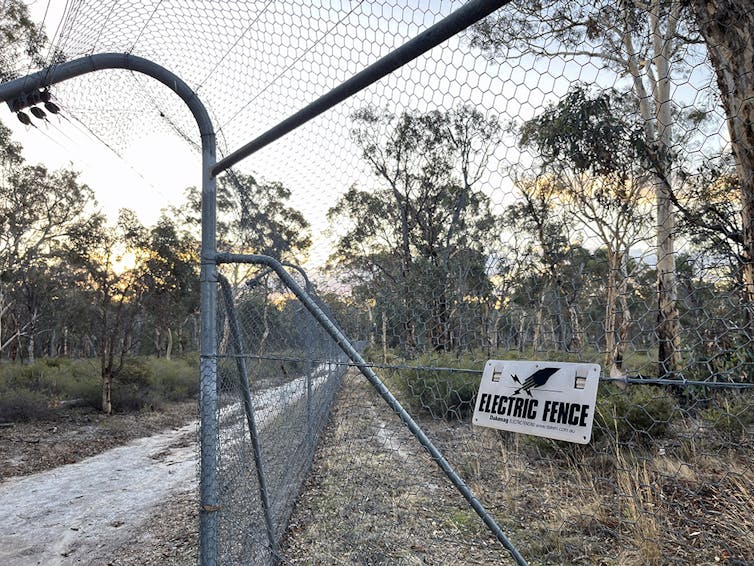
What Does This All Mean?
The study revealed important insights into how quickly animal populations can lose anti-predator defences. This presents a problem for programs that reintroduce species to their former areas.
Havens have stopped rapid population declines and extinctions, and enabled some species – including woylies – to multiply quickly. But our study shows they’re not a silver bullet over the long term.
Other strategies outside havens are needed. Importantly, we must ensure native animals have good quality habitat. This should include sufficient food, and safe places to sleep and hide from predators.
Our study also highlights the value in regular monitoring of threatened species, to allow a robust comparison of anti-predator traits through time.
The findings suggest animals in havens may need to be exposed to low levels of predators to reinstate survival traits. Our future research will investigate this strategy. We will assess how quickly woylies can regain their anti-predator traits and what predator levels woylie populations can withstand.
We hope our findings will help conservation managers develop better ways to protect Australia’s threatened mammal species over the long term – so we can not only prevent extinctions, but restore species to their former roles in nature. ![]()
Natasha Harrison, PhD Candidate, The University of Western Australia; Adrian Wayne, Adjunct Senior Research Fellow, The University of Western Australia; Jaana Dielenberg, University Fellow, Charles Darwin University, and Nicola Mitchell, Associate Professor in Conservation Physiology, The University of Western Australia
This article is republished from The Conversation under a Creative Commons license. Read the original article.
Treated wastewater in Victoria is still contaminated, study finds. So are we and the environment safe?
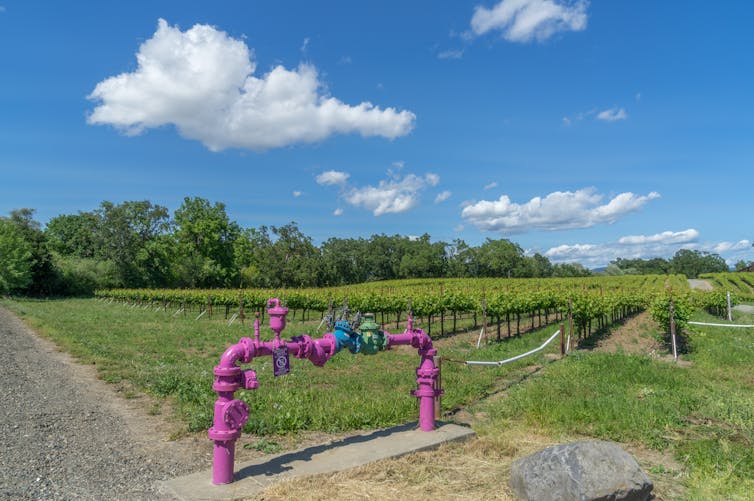
Wastewater is a by-product of humanity produced all day, every day. At home, wastewater is the used water that disappears when you flush the toilet, empty the sink or drain the washing machine.
Industrial processes also produce wastewater. Around the world, 359 billion cubic metres of wastewater is produced each year – equal to 144 million Olympic-sized swimming pools.
In Australia, some of this water is treated and reused. This so-called “recycled” water is used, for example, to wash cars, water crops and gardens. Treated water is also released back into rivers as “discharge”, which is regulated under an operator’s licence.
So is treated wastewater safe? Our research, published today, found wastewater treatment removes a lot of particles, but some contaminants remain. While it’s not enough to affect human health, effects on the environment are less clearly established.
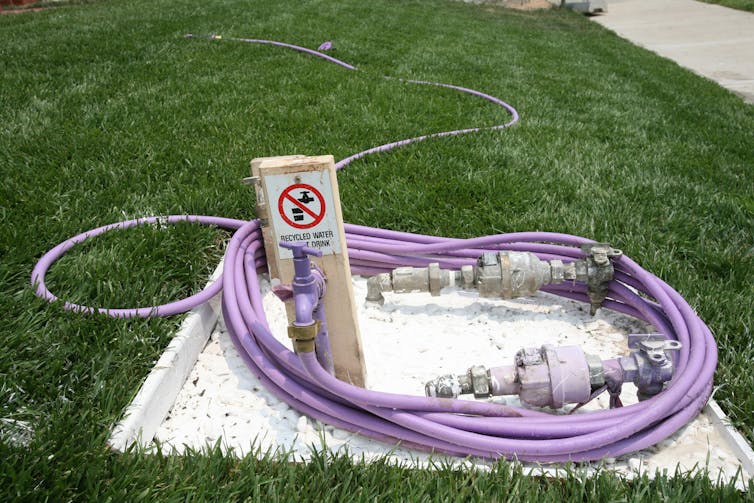
Making The Most Of Our Water
Water is a precious, finite resource. There is no such things as “new” water. Our planet’s water dates back 4.5 billion years and is constantly recycled by Earth’s systems.
As Earth’s population grows and the climate dries, we need all the water we can get.
In light of this challenge, the state of Victoria has a plan to better use treated wastewater. Other Australian states and territories have similar plans.
Wastewater comes from homes, businesses, industrial sites and farms, as well as any stormwater or groundwater that enters the sewer system.
Specialised treatment plants process this wastewater. A combination of technologies is used to achieve the treatment objectives, based on the character of raw wastewater and use of the treated wastewater. These processes include primary, secondary and tertiary treatment.
Wastewater treatment seeks to remove:
organics (proteins, hydrocarbons, oils and fats)
suspended solids (small particles)
bacteria (such as E. coli).
In Victoria, as elsewhere in Australia, wastewater must meet strict standards. Water corporations achieve this by implementing stringent procedures and processes, and monitoring water quality.
But even after treatment, some contaminants can remain. These can be divided into “emerging” and “legacy” contaminants.
Emerging contaminants include pharmaceuticals, pesticides, phthalates (used to make plastic more durable), industrial chemicals and chemicals in personal care products.
They’re described as “emerging” because of the limited information we have about them, the risks they pose and the dose-response effects, especially at low, ultra-trace concentrations.
Legacy contaminants include, for example, PFAS, trace metals and insecticides such as DDT.
So should we be concerned about contaminants in treated wastewater? Our new research examined this question.
What Did The Study Find?
EPA scientists partnered with the Victorian Department of Energy, Environment and Climate Action and 13 state water corporations to investigate emerging contaminants in wastewater. As a science-based regulator, EPA undertakes problem-based research on pollution and waste to protect the health of Victoria’s community and environment. It uses data and evidence from studies like these to guide future actions.
We collected 230 samples of treated and untreated water at a range of wastewater treatment plants. We analysed these for the presence of 414 emerging and legacy contaminants.
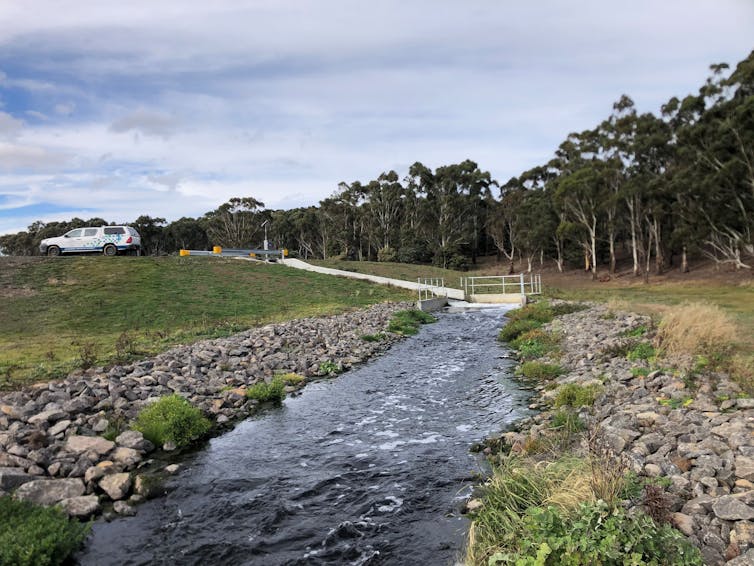
We detected 180 contaminants in treated and untreated water. These included:
- 48 chemicals found in pharmaceuticals and personal care products
- 5 endocrine-disrupting chemicals
- 21 per- and polyfluoroalkyl substances (PFAS)
- 34 herbicides
- 8 insecticides
- 7 fungicides
- 12 industrial compounds
- 7 phenols
- 28 disinfection byproducts.
None of the contaminant levels in treated water exceeded human health guidelines for drinking water and water used for recreation.
As you might expect, concentrations of most emerging contaminants were lower in treated than untreated water. However, some contaminants remained in treated water. Examples included antidepressant venlafaxine and anticonvulsant medication carbamazepine.
So which treatment method is best? Based on our study, it’s one that combines all of the following:
an “activated sludge” process, which can be aerobic or anaerobic – if aerobic, air is needed and is introduced into the “mixed liquor” by aeration devices or by natural diffusion
extended aeration using a mechanical device to aerate the water
disinfection with ultraviolet light, which uses UV radiation to break down the DNA of pathogens
microfiltration, a membrane process that removes particles larger than 0.1 micron
reverse osmosis, which is another membrane process and removes most of the salt and large molecules, producing water with very low dissolved content
disinfection with chlorination, zonation or UV disinfection.
But treatment that combines all the above processes is relatively rare. It’s used by only four out of 200 wastewater treatment plants in Victoria. These plants produce the highest grade of recycled water.
What Does This Mean For The Environment?
None of the contaminants we detected in treated wastewater breached human health guidelines. However, we should not forget the environment.
Pharmaceutical pollution, in particular, is a pressing global issue. A recent study detected pharmaceuticals in 258 rivers in 104 countries across all continents. Pharmaceutical chemicals break down quickly in the environment, but are continually being replenished.
According to the World Health Organization, trace quantities of pharmaceuticals in drinking water are very unlikely to pose risks to human health. But information about the potential environmental effects remains limited.
You Can Make A Difference
Environmental authorities regulate how businesses and industry use, store and dispose of their waste. However, your actions at home – no matter how small – can mean fewer contaminants make it to wastewater treatment plants.
Actions you can take include:
take medicines only as directed and return unwanted and expired medicines to a pharmacy
choose chemical-free cleaning products
minimise pesticide use in your garden and bug sprays in your home
if you have a wastewater management system at home, such as for greywater or blackwater, maintain it regularly and avoid using powerful chemicals.
Next Steps
Further research is under way involving the Victorian EPA, water corporations and research institutions. It aims to build our understanding of what, if and how emerging contaminants are present in soil and taken up by crops irrigated with recycled water.
Ultimately, the work will reduce the potential risks to people and the environment posed by wastewater, by ensuring official advice is current and evidence-based.
The report’s authors are EPA Scientists Minna Saaristo, Simon Sharp, Shanli Zhang and Mark P. Taylor.![]()
Mark Patrick Taylor, Victoria's Chief Environmental Scientist, EPA Victoria; Honorary Professor, School of Natural Sciences, Macquarie University
This article is republished from The Conversation under a Creative Commons license. Read the original article.
Arctic Ocean could be ice-free in summer by 2030s, say scientists – this would have global, damaging and dangerous consequences

The Arctic Ocean could be ice-free in summer by the 2030s, even if we do a good job of reducing emissions between now and then. That’s the worrying conclusion of a new study in Nature Communications.
Predictions of an ice-free Arctic Ocean have a long and complicated history, and the 2030s is sooner than most scientists had thought possible (though it is later than some had wrongly forecast). What we know for sure is the disappearance of sea ice at the top of the world would not only be an emblematic sign of climate breakdown, but it would have global, damaging and dangerous consequences.
The Arctic has been experiencing climate heating faster than any other part of the planet. As it is at the frontline of climate change, the eyes of many scientists and local indigenous people have been on the sea ice that covers much of the Arctic Ocean in winter. This thin film of frozen seawater expands and contracts with the seasons, reaching a minimum area in September each year.

The ice which remains at the end of summer is called multiyear sea ice and is considerably thicker than its seasonal counterpart. It acts as barrier to the transfer of both moisture and heat between the ocean and atmosphere. Over the past 40 years this multiyear sea ice has shrunk from around 7 million sq km to 4 million. That is a loss equivalent to roughly the size of India or 12 UKs. In other words, it’s a big signal, one of the most stark and dramatic signs of fundamental change to the climate system anywhere in the world.
As a consequence, there has been considerable effort invested in determining when the Arctic Ocean might first become ice-free in summer, sometimes called a “blue ocean event” and defined as when the sea ice area drops below 1 million sq kms. This threshold is used mainly because older, thicker ice along parts of Canada and northern Greenland is expected to remain long after the rest of the Arctic Ocean is ice-free. We can’t put an exact date on the last blue ocean event, but one in the near future would likely mean open water at the North Pole for the first time in thousands of years.

One problem with predicting when this might occur is that sea ice is notoriously difficult to model because it is influenced by both atmospheric and oceanic circulation as well as the flow of heat between these two parts of the climate system. That means that the climate models – powerful computer programs used to simulate the environment – need to get all of these components right to be able to accurately predict changes in sea ice extent.
Melting Faster Than Models Predicted
Back in the 2000s, an assessment of early generations of climate models found they generally underpredicted the loss of sea ice when compared to satellite data showing what actually happened. The models predicted a loss of about 2.5% per decade, while the observations were closer to 8%.
The next generation of models did better but were still not matching observations which, at that time were suggesting a blue ocean event would happen by mid-century. Indeed, the latest IPCC climate science report, published in 2021, reaches a similar conclusion about the timing of an ice-free Arctic Ocean.
As a consequence of the problems with the climate models, some scientists have attempted to extrapolate the observational record resulting in the controversial and, ultimately, incorrect assertion that this would happen during the mid 2010s. This did not help the credibility of the scientific community and its ability to make reliable projections.
Ice-Free By 2030?
The scientists behind the latest study have taken a different approach by, in effect, calibrating the models with the observations and then using this calibrated solution to project sea ice decline. This makes a lot of sense, because it reduces the effect of small biases in the climate models that can in turn bias the sea ice projections. They call these “observationally constrained” projections and find that the Arctic could become ice-free in summer as early as 2030, even if we do a good job of reducing emissions between now and then.

There is still plenty of uncertainty around the exact date – about 20 years or so – because of natural chaotic fluctuations in the climate system. But compared to previous research, the new study still brings forward the most likely timing of a blue ocean event by about a decade.
Why This Matters
You might be asking the question: so what? Other than some polar bears not being able to hunt in the same way, why does it matter? Perhaps there are even benefits as the previous US secretary of state, Mike Pompeo, once declared – it means ships from Asia can potentially save around 3,000 miles of journey to European ports in summer at least.
But Arctic sea ice is an important component of the climate system. As it dramatically reduces the amount of sunlight absorbed by the ocean, removing this ice is predicted to further accelerate warming, through a process known as a positive feedback. This, in turn, will make the Greenland ice sheet melt faster, which is already a major contributor to sea level rise.
The loss of sea ice in summer would also mean changes in atmospheric circulation and storm tracks, and fundamental shifts in ocean biological activity. These are just some of the highly undesirable consequences and it is fair to say that the disadvantages will far outweigh the slender benefits.

Don’t have time to read about climate change as much as you’d like?
Get a weekly roundup in your inbox instead. Every Wednesday, The Conversation’s environment editor writes Imagine, a short email that goes a little deeper into just one climate issue. Join the 20,000+ readers who’ve subscribed so far.![]()
Jonathan Bamber, Professor of Physical Geography, University of Bristol
This article is republished from The Conversation under a Creative Commons license. Read the original article.
Giant tree-kangaroos once lived in unexpected places all over Australia, according to major new analysis

Kangaroos are an enduring symbol of Australia’s uniqueness. To move, they do what no other large mammals do: they hop along on oversized hind legs. So you may be surprised to learn that some kangaroos live in trees, and are among the most endearing and threatened of all marsupials.
Today, biologists recognise ten tree-kangaroo species, all in the genus Dendrolagus. Two species inhabit tropical forest in far northern Queensland. The other eight live in New Guinea.
Studying them is difficult because their habitats are hard to access, they live high in trees and are increasingly rare due to human impacts.
The evolutionary history of tree-kangaroos is even more obscure. In a new study published today in Zootaxa, we pull together all the evidence on fossil tree-kangaroos and show giant tree-kangaroo species were widespread across Australia, and lived in habitats that were a long way from tropical forest – their modern-day home.

Tree-Kangaroos From The Treeless Plain
In 2002, a team of explorers found three new caves in the middle of the arid Nullarbor Plain of south-central Australia. The cave floors were littered with the bones of the extinct marsupial “lion” Thylacoleo carnifex and short-faced kangaroos, as well as those of several mammals, birds and reptiles that still live in drier parts of Australia.
Given the high diversity of herbivores, we concluded the Nullarbor had to have been more than just arid shrubland some 200–400 thousand years ago, even if it was still very dry. This is because a few shrubs would not have been enough for such a range of herbivores to live on.
In this light, it was hard to believe when we discovered partial skeletons of two new species of giant tree-kangaroo in 2008 and 2009. They belong to the extinct genus Bohra, first named in 1982 on the basis of leg bones found in the Wellington Caves in New South Wales.
Like the picture on a jigsaw box, we used the Nullarbor skeletons as a guide to search for isolated pieces in museum collections. We discovered more than 100 teeth and bones belonging to a total of at least seven species of extinct tree-kangaroos.
These come from fossil sites extending from southern Victoria to central Australia to the New Guinea highlands, and range in age from 3.5 million (late Pliocene) to a few hundred thousand years old (middle Pleistocene).
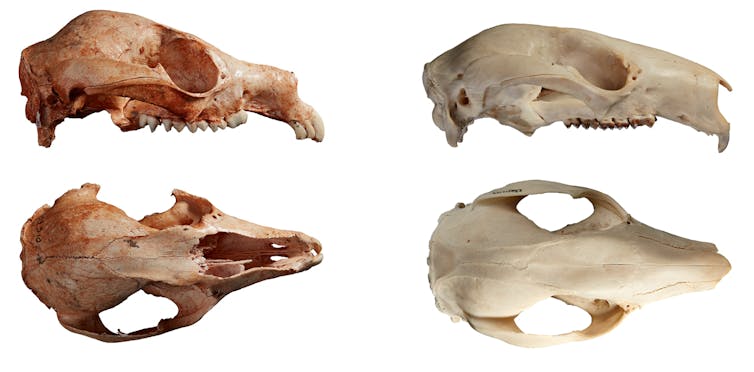
A Big Leap Forwards – And Then Upwards
Anatomical and molecular evidence shows that, among living marsupials, kangaroos are most closely related to possums. No one is sure exactly when the kangaroo ancestor made the descent to the forest floor, due to big gaps in the Australian fossil record.
Similarly, we do not know whether the distinctive “bipedal” hopping mode of locomotion originated in the trees or on the ground – but we do know it became the enduring hallmark of the kangaroo family. They have longer hind legs and longer feet than their possum ancestors, and the foot bones lock together in such a way as to limit sideways foot movement.
Combined with high tendon elasticity and a large muscular tail, these adaptations make kangaroos among the most energy-efficient movers on the planet.
The foot bones of tree-kangaroos reveal three stages in the evolutionary “reversal” of these adaptations. Pliocene species of Bohra evolved a broader heel bone and upper ankle joint, allowing them greater mobility. Later, Pleistocene species of Bohra evolved a smoother joint at the front of that heel bone, giving them the ability to roll the soles of their feet inward to wrap around tree trunks and limbs.
As well as shorter feet, modern tree-kangaroos (Dendrolagus) have shorter hindlimbs, in conjunction with powerful forelimbs and claws for grasping and climbing. They can even walk with their hind legs while climbing, whereas ground-dwelling kangaroos only move their hind legs alternately while swimming.
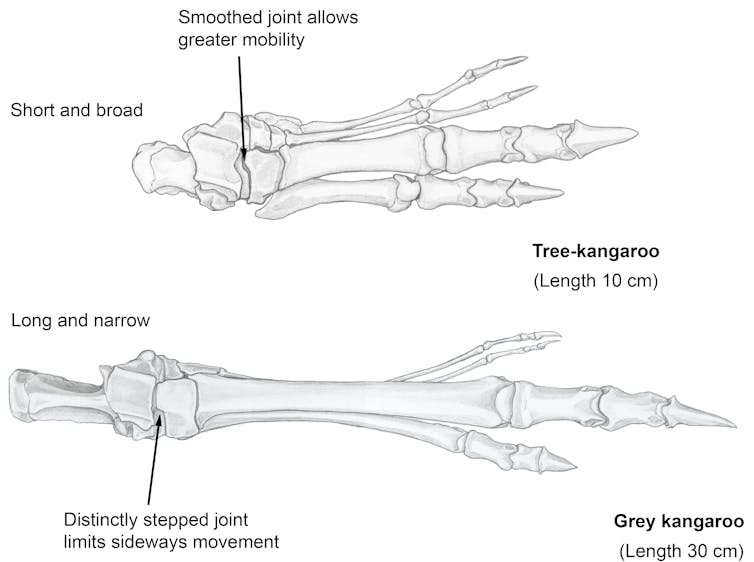
Why Return To The Trees?
As Australia dried out over the past 10 million years, more open vegetation became widespread. This trend was interrupted by a greenhouse phase 5–3.5 million years ago. We speculate that the temporary expansion of forest habitats during this period would have opened new ecological niches that early tree-kangaroos evolved to exploit.
By the time climatic drying returned, tree-kangaroos had become established members of the Australian fauna, with species adapting to expanding woodland and savannah habitats.
As some larger monkeys do today, species of Bohra probably divided their time between living in trees and on the ground, whereas modern tree-kangaroos spend most of their time in the canopy.
So, although we might now think of tree-kangaroos as quintessential rainforest animals, this is because the Bohra species that lived in other habitats have become extinct.
Despite everything we can learn about evolution from studies of modern species, the fossil record holds the potential to flip the script with one discovery. ![]()
Gavin Prideaux, Professor, Flinders University and Natalie Warburton, Associate Professor in Anatomy, Murdoch University
This article is republished from The Conversation under a Creative Commons license. Read the original article.
The vast majority of Melburnians want more nature in their city, despite a puzzling north-south divide
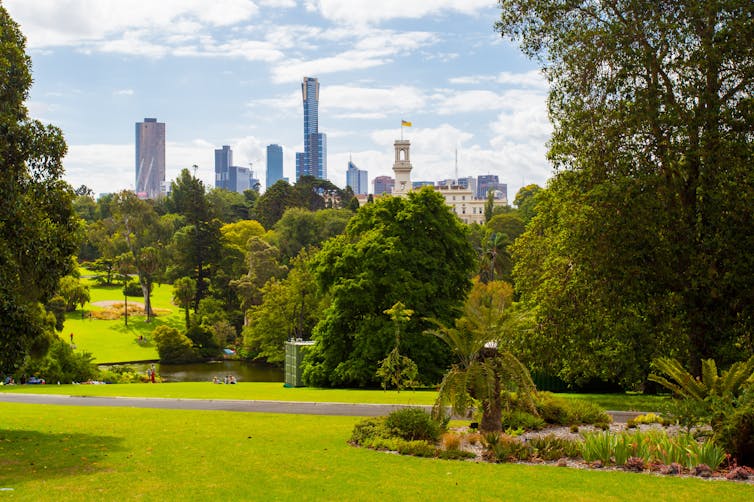
When we were asked to survey people in Melbourne about their relationship with nature, little did we know our findings would reinforce a well-known cultural divide between those living north and south of the Yarra River. Residents of neighbourhoods to the south were overall less connected to nature.
But perhaps a more important finding was that people in Melbourne overwhelmingly supported the creation of more space for nature in the city.
The City of Melbourne commissioned the study and is already applying its findings in programs that aim to foster residents’ connection with nature.
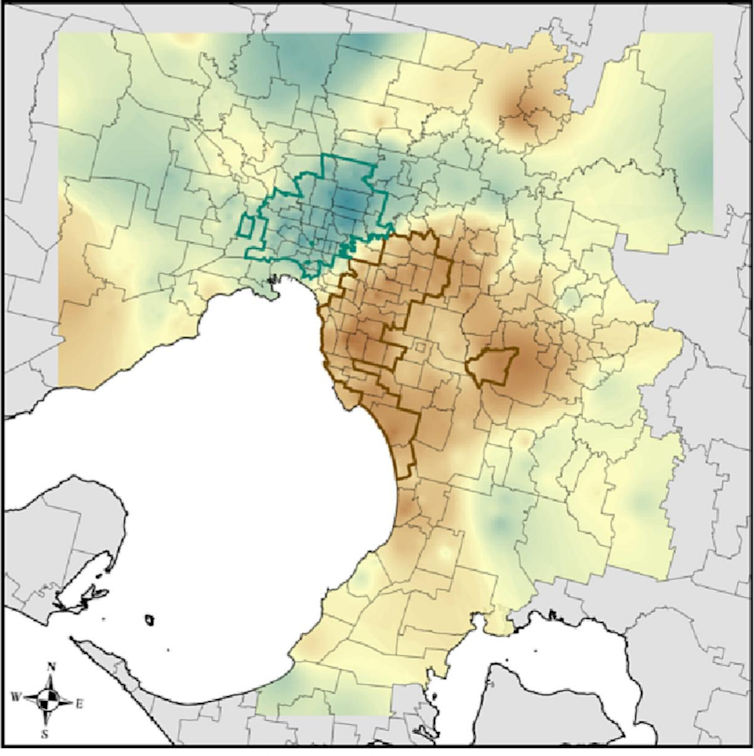
What Did The Study Find?
In our survey of nearly 1,600 residents, commuters and visitors to Melbourne, 86% wanted the city to create more space for nature. Their reasons included:
- to promote mental and physical wellbeing
- to conserve native plants and wildlife in the city
- civic pride
- a belief that if Melbourne could create more nature it would help attract more visitors and help the city’s post-pandemic recovery.
Nearly 75% of respondents had a high connection to nature. More than 75% said they were concerned about climate change and the destruction of nature.
These figures should give heart to anyone promoting greening or conservation actions in the city – the public has your back.
Retirees and university students who had lived most of their lives within the greater Melbourne area had the lowest connection to nature. Despite there generally being more tree cover and beach access south of the Yarra, residents of those areas tend to have a lower connection to nature than those to the north.
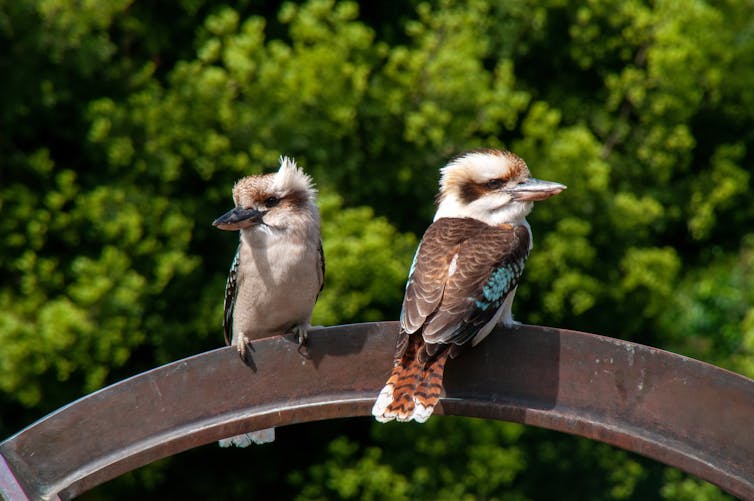
Why Promote People’s Connection With Nature?
The City of Melbourne commissioned the study as part of its Nature in the City Strategy. Its aim, in part, is to “create a more diverse, connected and resilient natural environment” and “connect people to nature”.
The strategy set this target: “By 2027, more residents, workers and visitors encounter, value and understand nature in the city more than they did in 2017.”
Connection to nature is the extent to which an individual identifies with nature. It stems from a belief that we all have a natural affinity for nature, known as biophilia.
Nature anywhere can offer respite from stresses and be a source of inspiration, creativity and spiritual connection. But individuals have varying levels of connection to nature, which may change during their lifetime.
If you have high level of connection you may feel a real kinship with nature. It’s an important part of your life. People with high connection to nature are more likely to support environmental policies, take part in conservation activities and have higher wellbeing.
Those who feel less connected are less likely to engage with nature. Their wellbeing can suffer as a result.
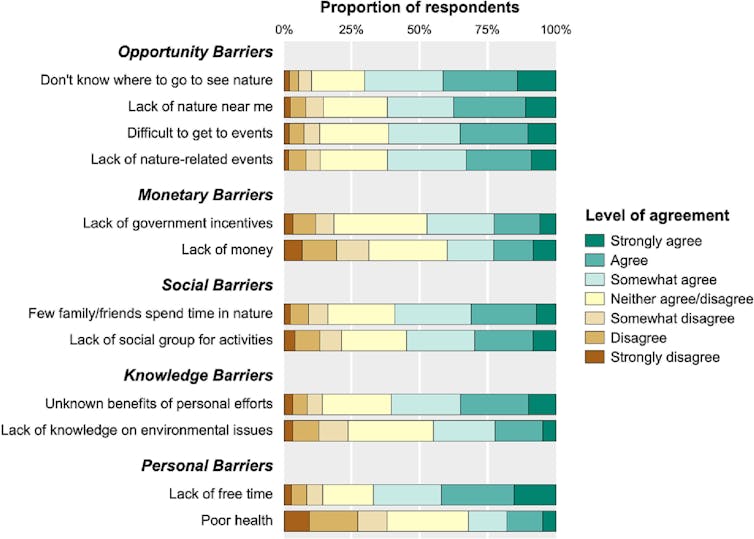
Exposure to and engagement with nature are important for our physical and mental health. Studies have shown exposure to natural environments reduces blood pressure and stress levels, and improves cardiovascular health.
Nature also fosters emotional wellbeing. Research has consistently shown spending time in nature reduces anxiety, depression and mental fatigue.
This is especially important for stressed city residents. As well as its health benefits, urban nature has positive impacts on our mood, crime rates, social cohesion and quality of life.
So How Do We Bring People Closer To Nature?
The reasons for the north-south divide in residents’ connections to nature aren’t clear and require more research. However, the other findings are already being applied to strategies to help people engage with nature and enjoy the benefits.
Research has shown young people’s connection to nature tends to decline when they reached their mid-teens. While there might be a spike in connection as they reach their 20s, it can plateau by later adulthood.
Young people go through many changes in their lives before adulthood. For many, other activities take priority over spending time in nature. Re-engagement strategies could include more nature-based social events for teens and young adults, to help sustain their connection to nature through to adulthood.
While some retirees had strong knowledge of Australian biodiversity, their low connection to nature could be due to lack of mobility and social connection. One possible way to re-engage this group is to bring nature to them. We could set up more community gardens near them, creating social opportunities as well, or make nature part of their homes.
In response to our findings, the City of Melbourne ran online workshops to identify where retirees engage in nature, how connections with nature are formed, and possible barriers and strategies to strengthen these connections.
New residents of Australia are a really engaged, environmentally conscious group. Finding ways to increase their local biodiversity knowledge may create stronger ties to the Melbourne area and foster emerging conservation allies. The City of Melbourne is planning programs to increase learning opportunities for these residents who identified awareness as a barrier to taking part in conservation activities.
The city council can also make structural changes to increase the time people spend in nature. Biodiverse streetscapes and green buildings can enhance exposure and connection to nature for residents and visitors.
For starters, the council could green streets while reducing traffic by converting parking spaces into gardens and passing Amendment C376 for Sustainable Building Design. This change to the planning scheme will increase green roofs and walls and the number of trees in the city.
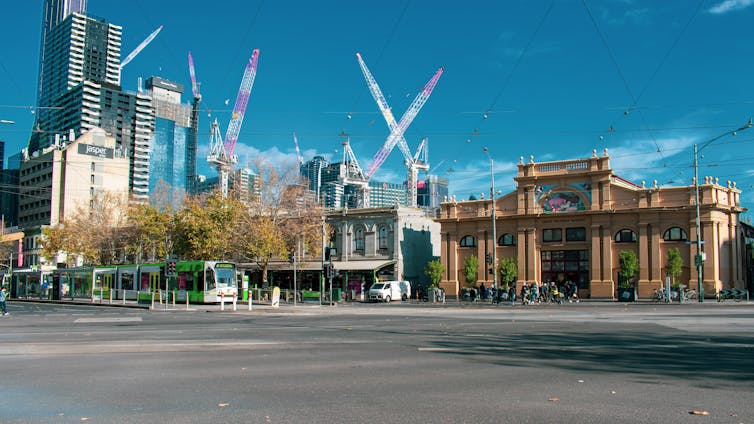
Scaling up voluntary programs, such as the City of Melbourne Urban Forest Fund’s Habitat Grants and Gardens for Wildlife Program, will expand community efforts to create places for nature.
As Melbourne recovers from pandemic lockdowns and becomes the most populated urban area in Australia, making more space for nature is vital to maintain and increase the city’s liveability. Most Melburnians would agree.
We all benefit from spending time in nature whether that takes place north or south of the Yarra.
The author acknowledges and thanks Blake Alexander Simmons, Environmental Social Scientist at Tampa Bay Estuary Program, and Lee Harrison, Senior Ecologist at City of Melbourne, co-authors of the peer-reviewed study published in Biological Conservation.![]()
Matthew Selinske, Senior Research Fellow, RMIT University
This article is republished from The Conversation under a Creative Commons license. Read the original article.
Changing wild animals’ behaviour could help save them – but is it ethical?
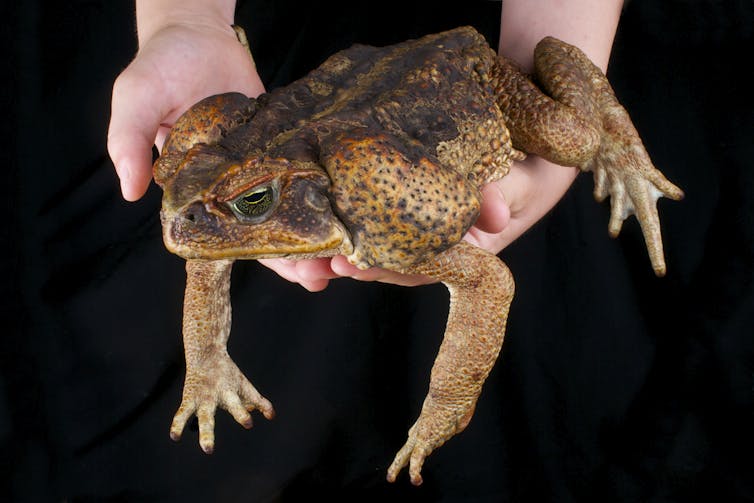
When large and warty cane toads were first brought to Australia nearly 100 years ago, they had a simple mission: to gobble up beetles and other pests in the sugarcane fields.
Today, though, the toads have become an infamous example of a global problem: biocontrol initiatives gone wrong. The squat creatures have spread across the top half of the country, wreaking havoc on ecosystems. Cane toads are highly toxic, and consuming just one is generally lethal for predators like monitor lizards, freshwater crocodiles and the small, spotted marsupials called quolls.
But what if you taught other animals not to eat the toads? Could you – and should you?
Conservation behavior scientists are doing just that. One of the most exciting areas in this quickly evolving field is behavior-based management, in which an animal’s behavior is encouraged, modified or manipulated in some way to achieve positive conservation outcomes.
In Australia, scientists are working with Indigenous rangers to teach predators not to eat cane toads. Next door in New Zealand – or Aotearoa, in the Indigenous Māori language – researchers, including one of us, Catherine Price, have used fake scents to condition ferrets, hedgehogs and other predators to ignore endangered birds’ eggs. Other behavior-based management efforts include re-teaching lost migratory routes to birds in North America, preparing captive animals for life in the wild in Colombia and using deterrents like colored flags to keep wildlife away from sites where they might conflict with humans.
This research has significant potential to conserve threatened species and reduce animal deaths. However, modifying behavior may come at a cost to animals or the communities they live in.
We are scientists and philosophers who study conservation and the ethical dilemmas involved in modifying animal behavior. Working with colleagues, we have developed a framework to help researchers evaluate the ethical considerations of conservation behavior interventions against other options.
Humane Solutions
One important dimension of behavioral interventions is their potential to conserve species and ecosystems without shooting, poisoning or trapping animals that people view as problems, which has become standard practice in many parts of the world. This is particularly appealing in cases where the animal is endangered.
Elephants, for example, are often killed by accident or on purpose when they wander into human environments like farmers’ fields or railroads. In Kenya, farmers and researchers have built “bee fences” that use elephants’ fear of bees to keep them out of crops.
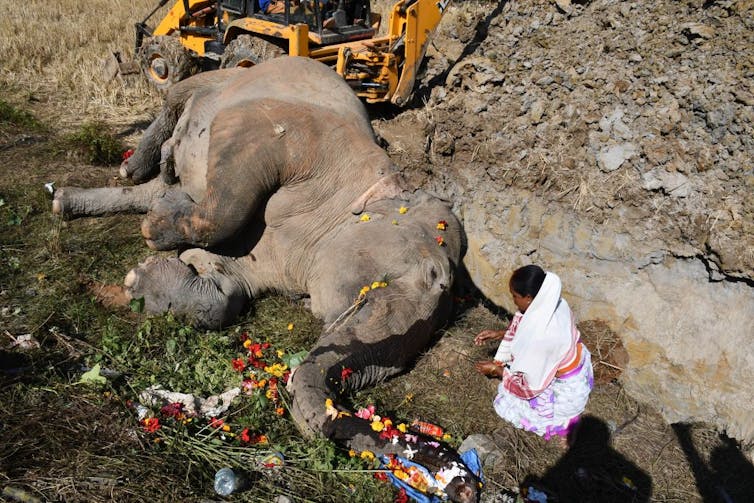
There are a growing number of other contexts in which it is impractical, publicly unacceptable or just undesirable to kill some animals in order to conserve others, or to achieve other wildlife management goals – like keeping seals away from salmon farms or coyotes out of suburbs. Behavioral interventions are increasingly viewed as a more ethical conservation and wildlife management possibility.
Ethical Questions
While we think there is great potential, behavior-based interventions also open up new ethical questions, or raise old questions in new ways.
Some concern animal welfare. While avoiding poisoning or shooting animals can reduce overall harm, behavioral management may generate other forms of harm. For example, using aversive stimuli such as loud noises, harassment or mild pain to train species to avoid an area may cause distress and even trauma. In other cases, there are incidental harms to other species, such as animals killed to be used as “bait” in behavioral interventions.
Changing an animal’s behavior may impact local communities’ livelihoods and cultural practices, too, whether for good or ill – like ranchers and farmers asked to use scent “biofences” to keep predators away from their livestock.
What’s more, some people believe deliberately modifying animal behaviors is unacceptable. To take one iconic example, as California condors neared extinction in the wild, some conservationists pushed for intensive interventions and captive breeding. Others were so strongly opposed that they viewed extinction as preferable, arguing that the condor was “better dead than bred.”
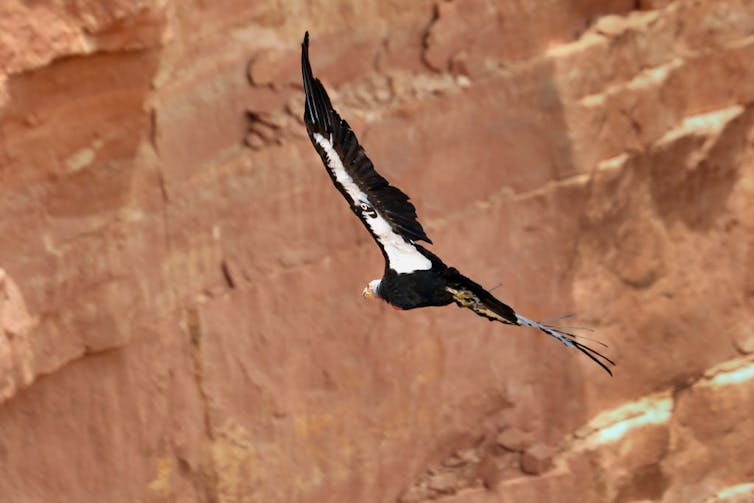
Another potentially significant issue is what we have named “behavioral bycatch”: all the costs for organisms unintentionally caught up in a behavior-based management project. For example, some fish farms have tried to prevent seals from eating their fish by using a device that plays an unpleasant sound: a seal’s version of “fingernails on a chalkboard.” But in one study, scientists discovered that toothed whales were even more sensitive to the sound and less likely to adjust to it. As a result, these “non-target” animals may be more prone to abandoning the area than the target animals.
Weighing Values
We argue that in order to make wise decisions, wildlife managers need to identify the diverse values at stake in a given situation. This might involve cultural and heritage values – such as the significance of hunting in an Indigenous culture – as well as economic and aesthetic values. It will also likely include the welfare of individual animals, the health of ecosystems and perhaps animals’ ability to live with minimal interference.
Together, we developed a framework to help identify and discuss these sometimes conflicting values in any given situation. The value of boosting one endangered species’ breeding success, for example, might need to be considered against the suffering of other individual animals caught up in the intervention process.
We then created a series of steps to support conservation workers as they compare and contrast the ethical dimensions of possible behavior-based management approaches and decide on the best course of action. It is key for managers to be clear about what a proposed intervention is trying to achieve and how likely it is to meet that goal. Next is weighing the potential effects on a broader range of species, including people: For example, might it enable a sustainable agricultural harvest?
These resources are not intended to provide definitive answers. However, they allow researchers to focus on some of the key potential impacts, then compare these to other methods that might be attempted. Today, virtually all conservation challenges have a human dimension, and it’s important to recognize that the most effective solutions may involve changing people’s behavior, not animals’ – like controlling human food waste to discourage “problem bears.”
Ultimately, we see great value in conservation behavioral interventions, but also some challenges. We hope slowing down to consider the values at stake in conservation behavior interventions will help minimize harm and maximize benefits – to both humans and wildlife.![]()
Daniel T. Blumstein, Professor in the Department of Ecology and Evolutionary Biology and the Institute of the Environment and Sustainability, University of California, Los Angeles; Catherine Price, Discovery Early Career Research Fellow, University of Sydney, and Thom van Dooren, Associate Professor and Deputy Director, Sydney Environment Institute, University of Sydney
This article is republished from The Conversation under a Creative Commons license. Read the original article.
A Russian ‘spy’ whale? Killer whales biting boats? Here’s how to understand these close encounters of the curious kind
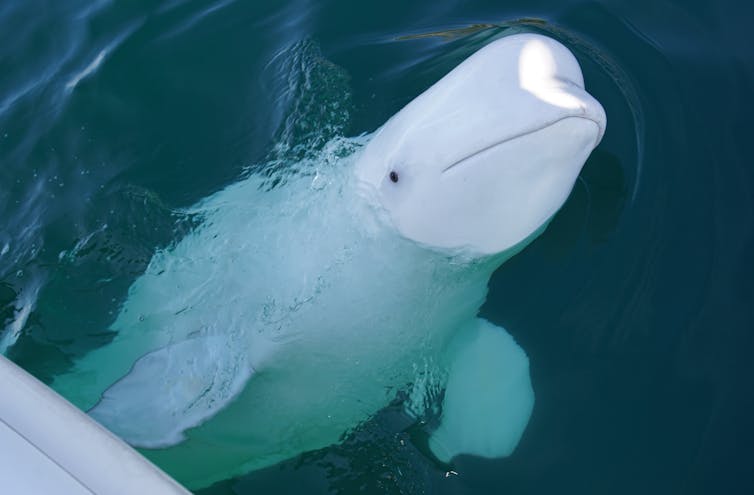
Off the coast of Spain and Portugal, killer whales have been biting boats. And the famous beluga whale nicknamed “Hvaldimir” has popped up again – this time in Sweden. When first spotted in Norway in 2019, wearing a suspicious harness, some suggested he could be a Russian spy.
These unusual human-wildlife interactions raise questions about managing risk. Both situations present a maritime safety concern. And the whales are at risk of being injured or killed by the boat.
What’s more, fans of Hvaldimir are also putting themselves in harm’s way – by trying to get too close to a wild animal that lives in the water, leaning from boats and dangling from wharves.
So what’s driving these unusual whale antics? And how and when should we intervene?
Iberian Killers Targeting Boats
In southwestern Europe, several killer whales from a critically endangered sub-population off the Iberian coast have been targeting vessels for the past two years.
Mariners have filmed killer whales biting rudders, causing steering wheels to violently move from side to side.
In extreme cases, the killer whales have broken rudders, created holes in boats and sunk at least three vessels, forcing sailors to seek maritime assistance.
A Friendly ‘Russian Spy’ In Swedish Waters
Hvaldimir the beluga whale came to fame in 2019 when he turned up in Norwegian waters wearing a harness labelled “Equipment St. Petersburg”. (His name is a combination of the Norwegian word for whale “hval” and the Russian name Vladimir.)
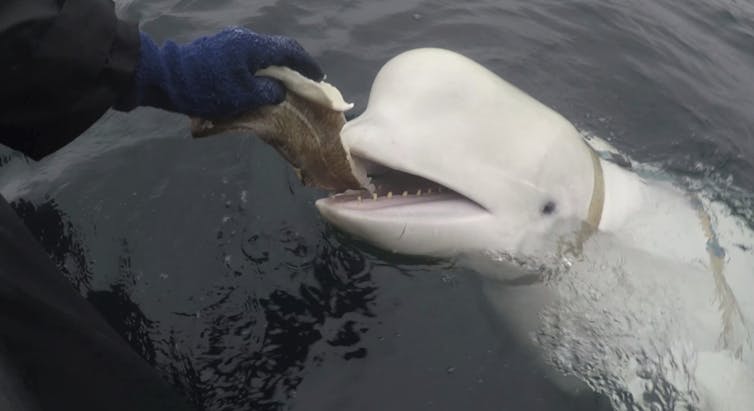
Obviously, wild beluga whales don’t wear harnesses. So Hvaldimir must have been taught to do that, just as you teach a dog to wear a collar.
This means it’s likely he spent time in captivity. He appears to enjoy human company. Viral videos show him retrieving mobile phones and playing ball.
After four years off the coast of Norway, Hvaldimir travelled into Swedish waters. No one is quite sure why.
There are concerns for his safety. This area is busy with boats and fishing activity. His presence may annoy some people, such as boaties and fishers, but attract others. They’re clamouring to get close to him, on boats, jet skis and busy wharves. I call this “Hvaldimir tourism”.
There might also be less fish for him to eat in comparison to Norwegian waters.
Understanding This Behaviour
We don’t know why the killer whales are biting boats. But there are several theories.
One is that a matriarch killer whale known as White Gladis may have had a negative interaction with a boat and begun biting back at them, prompting others to copy her behaviour.
Or could yachts be a plaything for killer whales? When the rudder moves from side to side it makes a sound, much like a noisy dog toy or baby toy. Recent reports from people monitoring this behaviour have said the killer whales became disinterested and left soon after they broke off boat rudders.
Perhaps over time, the killer whales will lose interest in boats. Maybe it’s a passing fad, just like killer whales’ “salmon hat trend” observed in the 1980s.
And what about Hvaldimir’s behaviour? His time in care may have taught him that humans are “good”. Beluga whales are very social, often found in pods. So he might just be lonely.
What’s The Solution?
Wild animals can choose what they want to do. Hvaldimir chooses to engage with humans. For the killer whales, it’s the vessels they’re interested in.
The Atlantic Orca Working Group continues to investigate this “disruptive” whale activity. It’s a collaborative effort with the Iberian maritime community, marine mammal experts, various organisations and the public.
They provide communication around killer whale behaviour and provide a place to report sightings. There’s also a dedicated app mariners can use. And of course, authorities remain in place to help mariners in need of assistance.
Hvaldimir’s presence does present a challenge. He’s very mobile and seeks out humans. Norwegian and Swedish authorities – and dedicated organisations such as OneWhale – are seeking to protect him.
So should we just let Hvaldimir roam free and continue monitoring him? He’s proven his maritime smarts over the last four years. He’s not dependent on humans, able to feed himself, navigate coastal waters and dodge most human activities (although he has been injured by boats and fishing gear).
Or, do we move him to his own “safe fjord” – a closed off area with minimal human interaction and a vet on standby? This would keep him safe from tourists, vessels and fishing gear. Other “rescued” captive whales could also be placed there, with the potential for later release back to the wild. However, this is not always a straightforward endeavour.
Hvaldimir will continue to require human assistance, regardless of whether he remains wild or moves into a captive environment. If left to roam free, he may still feed himself but he will continue to seek opportunities to interact with people. These interactions will have to be monitored.
If he’s taken into human care, he will be removed from the general public but will require food from humans. He may also be visited by people who wish to see him.
There’s No Silver Bullet
Efforts to monitor both situations remain ongoing. Collaborative management involving the maritime community, scientists and the general public is key to protecting these marine mammals.
No doubt lessons will be learnt from the management of both situations and possibly adapted to managing future interactions between wildlife and humans. ![]()
Vanessa Pirotta, Postdoctoral Researcher and Wildlife Scientist, Macquarie University
This article is republished from The Conversation under a Creative Commons license. Read the original article.
Five ways to make your summer barbecue better for the environment

Summer has finally arrived. Sunny days and brighter evenings are the perfect opportunity to gather friends and family and fire up the barbecue. But, while we all enjoy eating outdoors, it’s important to stop and think about the impact your meal could have on the planet.
The global food system (the production, processing and distribution of the world’s food) has a substantial environmental footprint. In fact, it accounts for nearly one-third of all greenhouse gas emissions. Research that I co-authored in 2020 suggests that the way you cook your food plays a significant role in these emissions.
We also looked into the environmental impact of barbecues. A typical barbecue for four people releases more greenhouse gases into the atmosphere than a 170-mile car journey.

This article is part of Quarter Life, a series about issues affecting those of us in our twenties and thirties. From the challenges of beginning a career and taking care of our mental health, to the excitement of starting a family, adopting a pet or just making friends as an adult. The articles in this series explore the questions and bring answers as we navigate this turbulent period of life._
You may be interested in:
Five reasons you should consider renting your outfits this wedding season
‘He is always there to listen’: friendships between young men are more than just beers and banter
How to make your next holiday better for the environment
But instead of cancelling the party, here are five things you can do to reduce the environmental impact of your barbecue.
1. Offer An Alternative To Beef Burgers
The easiest way to cut the carbon footprint of your barbecue is to think beyond familiar staples like beef burgers. Research from 2018 found that producing a medium-sized beef burger (100g) generates the equivalent of 3,750g of CO₂ – the same amount that is released by driving 15 miles in a fossil fuel-powered car. This is mostly due to the methane (a powerful greenhouse gas) emitted by cows when they burp and the greenhouse gases that are released as their manure decomposes.
By switching to chicken, you can reduce the environmental impact of your menu. The same research found that producing 100g of chicken (a small chicken breast) is associated with the equivalent of 870g of CO₂ – the same as driving 3.5 miles in a car.
An even better way to lower your barbecue’s environmental footprint is to plan a vegan menu. If you replace beef burgers with vegan sausages, butter with vegetable spread and avoid pouring cream on your strawberries, you can cut the emissions of your four person barbecue from the equivalent of over 40,000g of CO₂ to just over 10,000g of CO₂.
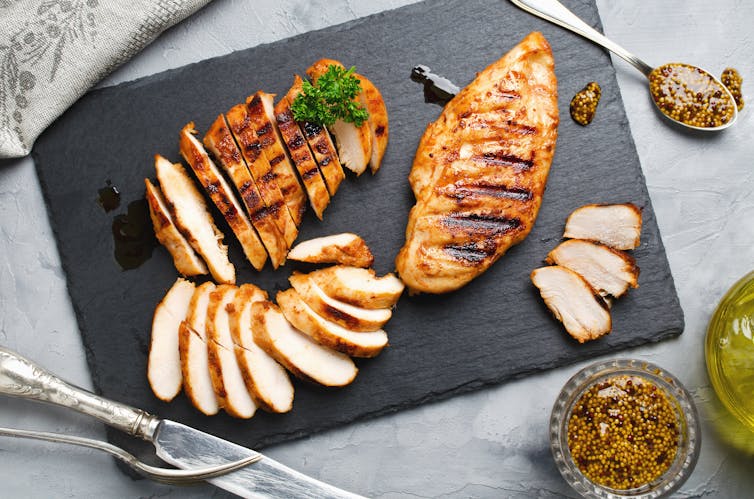
2. Put Plants On The Menu
Many animals eat several times as many calories as they provide to us when eaten. A calf, for example, eats over 40,000 calories each day, but only a mere 2% of these calories are retained in the form of beef. This is one of the reasons why plant-based alternatives are associated with lower emissions.
Beans (in salads or even in the form of a burger) are an excellent ingredient to use as part of your barbecue instead. They are a source of protein and legumes (beans, lentils and peas) take nitrogen out of the air as they grow and convert it into a form that the plant can use. These crops therefore require the addition of less fertiliser to help them grow.
3. Ditch Charcoal
The way you cook your food has a substantial impact on emissions. Our aforementioned research found that home cooking accounts for up to 61% of food-related greenhouse gas emissions in the UK. This is because of the varying emission levels associated with different cooking methods and appliances.
Barbecue purists might swear by charcoal. But the energy used to produce charcoal usually comes from burning fossil fuels. One study suggests that the emissions from producing and burning a 500g bag of charcoal equate to around 5,000g of CO₂.
Using a gas barbecue or cooking your food in the kitchen under the grill is instead associated with the equivalent of just 200g of CO₂ emissions. Slow cookers have a comparatively low environmental footprint too. So, if you have one and are cooking meat anyway, think about serving up a dish like pulled pork.

4. Don’t Forget The Drinks
Drinks are also an important part of your barbecue. But they too can have a negative impact on the environment.
When it comes to drinks – soft or alcoholic – think about packaging. A bottle of beer alone is responsible for almost half a kilogram of greenhouse gas emissions – more than a quarter of which come from making and transporting the glass bottle.
Choosing larger drinks containers is a simple solution. If you think you’re going to get through a lot of beer, then a barrel or keg could be a good option. For soft drinks – again buy in big containers, recycle cans and bottles and remember, tap water has the lowest emissions of all.
5. Cut Food Waste
In the UK, around 70% of food waste occurs in our homes. One in four potatoes, for example, are thrown away uneaten.
But it’s relatively easy to plan a waste-free barbecue. Have some sandwich bags or containers to hand to take away any leftovers. You won’t have to feel guilty about throwing away food and your guests can save money on lunch the following day.
If you do have leftover food that you can’t give away (think burned sausages), then add it to your food waste bin for collection if you have one, which is better than sending it to landfill.
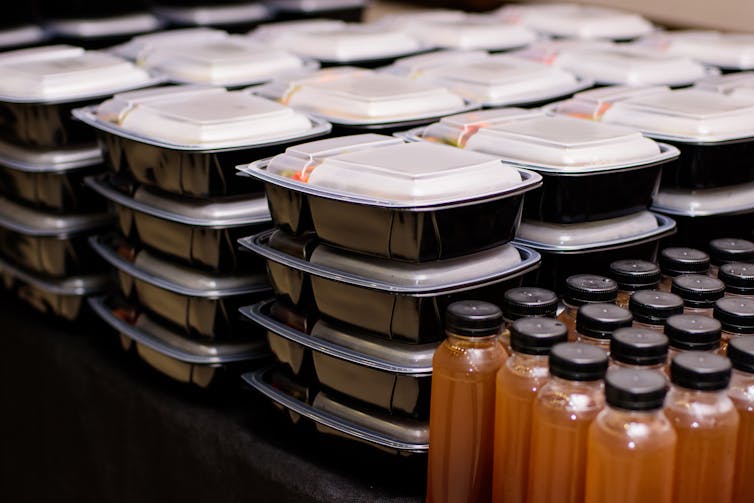
The global food system is a significant contributor to greenhouse gas emissions and it’s important we consider the climate impact of our meals. But that doesn’t mean you can’t enjoy a barbecue this summer. By making small changes to the food we buy and how we cook it, we can enjoy barbecues while being mindful of our planet.![]()
Sarah Bridle, Professor of Food, Climate and Society, University of York
This article is republished from The Conversation under a Creative Commons license. Read the original article.
Pittwater Reserves: Histories + Notes + Pictorial Walks
A History Of The Campaign For Preservation Of The Warriewood Escarpment by David Palmer OAM and Angus Gordon OAM
A Stroll Through Warriewood Wetlands by Joe Mills February 2023
A Walk Around The Cromer Side Of Narrabeen Lake by Joe Mills
America Bay Track Walk - photos by Joe Mills
An Aquatic June: North Narrabeen - Turimetta - Collaroy photos by Joe Mills
Angophora Reserve Angophora Reserve Flowers Grand Old Tree Of Angophora Reserve Falls Back To The Earth - History page
Annie Wyatt Reserve - A Pictorial
Avalon's Village Green: Avalon Park Becomes Dunbar Park - Some History + Toongari Reserve and Catalpa Reserve
Bairne Walking Track Ku-Ring-Gai Chase NP by Kevin Murray
Bangalley Headland Bangalley Mid Winter
Banksias of Pittwater
Barrenjoey Boathouse In Governor Phillip Park Part Of Our Community For 75 Years: Photos From The Collection Of Russell Walton, Son Of Victor Walton
Barrenjoey Headland: Spring flowers
Barrenjoey Headland after fire
Bayview Baths
Bayview Wetlands
Beeby Park
Bilgola Beach
Botham Beach by Barbara Davies
Bungan Beach Bush Care
Careel Bay Saltmarsh plants
Careel Bay Birds
Careel Bay Clean Up day
Careel Bay Playing Fields History and Current
Careel Creek
Careel Creek - If you rebuild it they will come
Centre trail in Ku-ring-gai Chase National Park
Chiltern Track- Ingleside by Marita Macrae
Clareville Beach
Clareville/Long Beach Reserve + some History
Coastal Stability Series: Cabbage Tree Bay To Barrenjoey To Observation Point by John Illingsworth, Pittwater Pathways, and Dr. Peter Mitchell OAM
Cowan Track by Kevin Murray
Curl Curl To Freshwater Walk: October 2021 by Kevin Murray and Joe Mills
Currawong and Palm Beach Views - Winter 2018
Currawong-Mackerel-The Basin A Stroll In Early November 2021 - photos by Selena Griffith
Currawong State Park Currawong Beach + Currawong Creek
Deep Creek To Warriewood Walk photos by Joe Mills
Drone Gives A New View On Coastal Stability; Bungan: Bungan Headland To Newport Beach + Bilgola: North Newport Beach To Avalon + Bangalley: Avalon Headland To Palm Beach
Duck Holes: McCarrs Creek by Joe Mills
Dunbar Park - Some History + Toongari Reserve and Catalpa Reserve
Dundundra Falls Reserve: August 2020 photos by Selena Griffith - Listed in 1935
Elsie Track, Scotland Island
Elvina Track in Late Winter 2019 by Penny Gleen
Elvina Bay Walking Track: Spring 2020 photos by Joe Mills
Elvina Bay-Lovett Bay Loop Spring 2020 by Kevin Murray and Joe Mills
Fern Creek - Ingleside Escarpment To Warriewood Walk + Some History photos by Joe Mills
Iluka Park, Woorak Park, Pittwater Park, Sand Point Reserve, Snapperman Beach Reserve - Palm Beach: Some History
Ingleside
Ingleside Wildflowers August 2013
Irrawong - Ingleside Escarpment Trail Walk Spring 2020 photos by Joe Mills
Irrawong - Mullet Creek Restoration
Katandra Bushland Sanctuary - Ingleside
Lucinda Park, Palm Beach: Some History + 2022 Pictures
McCarrs Creek
McCarr's Creek to Church Point to Bayview Waterfront Path
McKay Reserve
Mona Vale Beach - A Stroll Along, Spring 2021 by Kevin Murray
Mona Vale Headland, Basin and Beach Restoration
Mona Vale Woolworths Front Entrance Gets Garden Upgrade: A Few Notes On The Site's History
Mount Murray Anderson Walking Track by Kevin Murray and Joe Mills
Mullet Creek
Narrabeen Creek
Narrabeen Lagoon Catchment: Past Notes Present Photos by Margaret Woods
Narrabeen Lagoon State Park
Narrabeen Lagoon State Park Expansion
Narrabeen Rockshelf Aquatic Reserve
Nerang Track, Terrey Hills by Bea Pierce
Newport Bushlink - the Crown of the Hill Linked Reserves
Newport Community Garden - Woolcott Reserve
Newport to Bilgola Bushlink 'From The Crown To The Sea' Paths: Founded In 1956 - A Tip and Quarry Becomes Green Space For People and Wildlife
Pittwater Reserves: The Green Ways; Bungan Beach and Bungan Head Reserves: A Headland Garden
Pittwater Reserves, The Green Ways: Clareville Wharf and Taylor's Point Jetty
Pittwater Reserves: The Green Ways; Hordern, Wilshire Parks, McKay Reserve: From Beach to Estuary
Pittwater Reserves - The Green Ways: Mona Vale's Village Greens a Map of the Historic Crown Lands Ethos Realised in The Village, Kitchener and Beeby Parks
Pittwater Reserves: The Green Ways Bilgola Beach - The Cabbage Tree Gardens and Camping Grounds - Includes Bilgola - The Story Of A Politician, A Pilot and An Epicure by Tony Dawson and Anne Spencer
Pittwater spring: waterbirds return to Wetlands
Pittwater's Lone Rangers - 120 Years of Ku-Ring-Gai Chase and the Men of Flowers Inspired by Eccleston Du Faur
Pittwater's Parallel Estuary - The Cowan 'Creek
Resolute Track at West Head by Kevin Murray
Resolute Track Stroll by Joe Mills
Riddle Reserve, Bayview
Salvation Loop Trail, Ku-Ring-Gai Chase National Park- Spring 2020 - by Selena Griffith
Seagull Pair At Turimetta Beach: Spring Is In The Air!
Stapleton Reserve
Stapleton Park Reserve In Spring 2020: An Urban Ark Of Plants Found Nowhere Else
Stony Range Regional Botanical Garden: Some History On How A Reserve Became An Australian Plant Park
The Chiltern Track
The Resolute Beach Loop Track At West Head In Ku-Ring-Gai Chase National Park by Kevin Murray
Topham Track Ku-Ring-Gai Chase NP, August 2022 by Joe Mills and Kevin Murray
Towlers Bay Walking Track by Joe Mills
Trafalgar Square, Newport: A 'Commons' Park Dedicated By Private Landholders - The Green Heart Of This Community
Tranquil Turimetta Beach, April 2022 by Joe Mills
Turimetta Beach Reserve by Joe Mills, Bea Pierce and Lesley
Turimetta Beach Reserve: Old & New Images (by Kevin Murray) + Some History
Turimetta Headland
Warriewood Wetlands - Creeks Deteriorating: How To Report Construction Site Breaches, Weed Infestations + The Long Campaign To Save The Warriewood Wetlands & Ingleside Escarpment March 2023
Warriewood Wetlands and Irrawong Reserve
Whale Beach Ocean Reserve: 'The Strand' - Some History On Another Great Protected Pittwater Reserve
Wilshire Park Palm Beach: Some History + Photos From May 2022
Winji Jimmi - Water Maze

Pittwater's Birds
Australian Predators of the Sky by Penny Olsen - published by National Library of Australia
Australian Raven Australian Wood Duck Family at Newport
A Week In Pittwater Issue 128 A Week In Pittwater - June 2014 Issue 168
Baby Birds Spring 2015 - Rainbow Lorikeets in our Yard - for Children Baby Birds by Lynleigh Greig, Southern Cross Wildlife Care - what do if being chased by a nesting magpie or if you find a baby bird on the ground
Baby Kookaburras in our Backyard: Aussie Bird Count 2016 - October
Balloons Are The Number 1 Marine Debris Risk Of Mortality For Our Seabirds - Feb 2019 Study
Bangalley Mid-Winter Barrenjoey Birds Bird Antics This Week: December 2016
Bird of the Month February 2019 by Michael Mannington
Birdland Above the Estuary - October 2012 Birds At Our Window Birds at our Window - Winter 2014 Birdland June 2016
Birdsong Is a Lovesong at This time of The Year - Brown Falcon, Little Wattle Bird, Australian Pied cormorant, Mangrove or Striated Heron, Great Egret, Grey Butcherbird, White-faced Heron
Bird Songs – poems about our birds by youngsters from yesterdays - for children Bird Week 2015: 19-25 October
Bird Songs For Spring 2016 For Children by Joanne Seve
Birds at Careel Creek this Week - November 2017: includes Bird Count 2017 for Local Birds - BirdLife Australia by postcode
Black Cockatoo photographed in the Narrabeen Catchment Reserves this week by Margaret G Woods - July 2019
Black-Necked Stork, Mycteria Australis, Now Endangered In NSW, Once Visited Pittwater: Breeding Pair shot in 1855
Black Swans on Narrabeen Lagoon - April 2013 Black Swans Pictorial
Endangered Little Tern Fishing at Mona Vale Beach
‘Feather Map of Australia’: Citizen scientists can support the future of Australia's wetland birds: for Birdwatchers, school students and everyone who loves our estuarine and lagoon and wetland birds
Fledgling Common Koel Adopted by Red Wattlebird -Summer Bird fest 2013 Flegdlings of Summer - January 2012
Flocks of Colour by Penny Olsen - beautiful new Bird Book Celebrates the 'Land of the Parrots'
Friendly Goose at Palm Beach Wharf - Pittwater's Own Mother Goose
Front Page Issue 177 Front Page Issue 185 Front Page Issue 193 - Discarded Fishing Tackle killing shorebirds Front Page Issue 203 - Juvenile Brush Turkey Front Page Issue 208 - Lyrebird by Marita Macrae Front Page Issue 219 Superb Fairy Wren Female Front Page Issue 234: National Bird Week October 19-25 and the 2015 the Aussie Back Yard Bird Count: Australia's First Bird Counts - a 115 Year Legacy - with a small insight into our first zoos Front Page Issue 236: Bird Week 2015 Front Page Issue 244: watebirds Front Page Issue 260: White-face Heron at Careel Creek Front Page Issue 283: Pittwater + more birds for Bird Week/Aussie Bird Count Front Page Issue 284: Pittwater + more birds for Bird Week/Aussie Bird Count Front Page Issue 285: Bird Week 2016 Front Page Issue 331: Spring Visitor Birds Return
G . E. Archer Russell (1881-1960) and His Passion For Avifauna From Narrabeen To Newport
Glossy Black-Cockatoo Returns To Pittwater by Paul Wheeler Glossy Cockatoos - 6 spotted at Careel Bay February 2018
Grey Butcher Birds of Pittwater
INGLESIDE LAND RELEASE ON AGAIN BUT MANY CHALLENGES AHEAD by David Palmer
Issue 60 May 2012 Birdland - Smiles- Beamings -Early -Winter - Blooms
Jayden Walsh’s Northern Beaches Big Year - courtesy Pittwater Natural Heritage Association
John Gould's Extinct and Endangered Mammals of Australia by Dr. Fred Ford - Between 1850 and 1950 as many mammals disappeared from the Australian continent as had disappeared from the rest of the world between 1600 and 2000! Zoologist Fred Ford provides fascinating, and often poignant, stories of European attitudes and behaviour towards Australia's native fauna and connects these to the animal's fate today in this beautiful new book - our interview with the author
July 2012 Pittwater Environment Snippets; Birds, Sea and Flowerings
Juvenile Sea Eagle at Church Point - for children
King Parrots in Our Front Yard
Kookaburra Turf Kookaburra Fledglings Summer 2013 Kookaburra Nesting Season by Ray Chappelow Kookaburra Nest – Babies at 1.5 and 2.5 weeks old by Ray Chappelow Kookaburra Nest – Babies at 3 and 4 weeks old by Ray Chappelow Kookaburra Nest – Babies at 5 weeks old by Ray Chappelow Kookaburra and Pittwater Fledglings February 2020 to April 2020
Lion Island's Little Penguins (Fairy Penguins) Get Fireproof Homes - thanks to NSW National Parks and Wildlife Service and the Fix it Sisters Shed
Lyre Bird Sings in Local National Park - Flock of Black Cockatoos spotted - June 2019
Magpie's Melodic Melodies - For Children (includes 'The Magpie's Song' by F S Williamson)
Masked Lapwing (Plover) - Reflected
May 2012 Birdland Smiles Beamings Early Winter Blooms
Musk Lorikeets In Pittwater: Pittwater Spotted Gum Flower Feast - May 2020
Nankeen Kestrel Feasting at Newport: May 2016
National Bird Week 2014 - Get Involved in the Aussie Backyard Bird Count: National Bird Week 2014 will take place between Monday 20 October and Sunday 26 October, 2014. BirdLife Australia and the Birds in Backyards team have come together to launch this year’s national Bird Week event the Aussie Backyard Bird Count! This is one the whole family can do together and become citizen scientists...
National Bird Week October 19-25 and the 2015 the Aussie Back Yard Bird Count: Australia's First Bird Counts - a 115 Year Legacy - with a small insight into our first zoos
Nature 2015 Review Earth Air Water Stone
New Family of Barking Owls Seen in Bayview - Church Point by Pittwater Council
Noisy Visitors by Marita Macrae of PNHA
Odes to Australia's Fairy-wrens by Douglas Brooke Wheelton Sladen and Constance Le Plastrier 1884 and 1926
Oystercatcher and Dollarbird Families - Summer visitors
Painted Button-Quail Rescued By Locals - Elanora-Ingleside escarpment-Warriewood wetlands birds
Palm Beach Protection Group Launch, Supporters Invited: Saturday Feb.16th - Residents Are Saying 'NO' To Off-Leash Dogs In Station Beach Eco-System - reports over 50 dogs a day on Station Beach throughout December-January (a No Dogs Beach) small children being jumped on, Native birds chased, dog faeces being left, families with toddlers leaving beach to get away from uncontrolled dogs and 'Failure of Process' in council 'consultation' open to February 28th
Pardalote, Scrub Wren and a Thornbill of Pittwater
Pecking Order by Robyn McWilliam
Pelican Lamps at Narrabeen Pelican Dreamsong - A Legend of the Great Flood - dreamtime legend for children
Pittwater Becalmed Pittwater Birds in Careel Creek Spring 2018 Pittwater Waterbirds Spring 2011 Pittwater Waterbirds - A Celebration for World Oceans Day 2015
Pittwater's Mother Nature for Mother's Day 2019
Plastic in 99 percent of seabirds by 2050 by CSIRO
Plover Appreciation Day September 16th 2015
Powerful and Precious by Lynleigh Grieg
Red Wattlebird Song - November 2012
Restoring The Diamond: every single drop. A Reason to Keep Dogs and Cats in at Night.
Sea Birds off the Pittwater Coast: Albatross, Gannet, Skau + Australian Poets 1849, 1898 and 1930, 1932
Sea Eagle Juvenile at Church Point
Seen but Not Heard: Lilian Medland's Birds - Christobel Mattingley - one of Australia's premier Ornithological illustrators was a Queenscliff lady - 53 of her previously unpublished works have now been made available through the auspices of the National Library of Australia in a beautiful new book
7 Little Ducklings: Just Keep Paddling - Australian Wood Duck family take over local pool by Peta Wise
Shag on a North Avalon Rock - Seabirds for World Oceans Day 2012
Short-tailed Shearwaters Spring Migration 2013
South-West North-East Issue 176 Pictorial
Spring 2012 - Birds are Splashing - Bees are Buzzing
Spring Becomes Summer 2014- Royal Spoonbill Pair at Careel Creek
Spring Notes 2018 - Royal Spoonbill in Careel Creek
Station Beach Off Leash Dog Area Proposal Ignores Current Uses Of Area, Environment, Long-Term Fauna Residents, Lack Of Safe Parking and Clearly Stated Intentions Of Proponents have your say until February 28, 2019
Summer 2013 BirdFest - Brown Thornbill Summer 2013 BirdFest- Canoodlers and getting Wet to Cool off Summer 2013 Bird Fest - Little Black Cormorant Summer 2013 BirdFest - Magpie Lark
New Shorebirds WingThing For Youngsters Available To Download
A Shorebirds WingThing educational brochure for kids (A5) helps children learn about shorebirds, their life and journey. The 2021 revised brochure version was published in February 2021 and is available now. You can download a file copy here.
If you would like a free print copy of this brochure, please send a self-addressed envelope with A$1.10 postage (or larger if you would like it unfolded) affixed to: BirdLife Australia, Shorebird WingThing Request, 2-05Shorebird WingThing/60 Leicester St, Carlton VIC 3053.

 Shorebird Identification Booklet
Shorebird Identification Booklet
The Migratory Shorebird Program has just released the third edition of its hugely popular Shorebird Identification Booklet. The team has thoroughly revised and updated this pocket-sized companion for all shorebird counters and interested birders, with lots of useful information on our most common shorebirds, key identification features, sighting distribution maps and short articles on some of BirdLife’s shorebird activities.
The booklet can be downloaded here in PDF file format: http://www.birdlife.org.au/documents/Shorebird_ID_Booklet_V3.pdf
Paper copies can be ordered as well, see http://www.birdlife.org.au/projects/shorebirds-2020/counter-resources for details.
Download BirdLife Australia's children’s education kit to help them learn more about our wading birdlife
Shorebirds are a group of wading birds that can be found feeding on swamps, tidal mudflats, estuaries, beaches and open country. For many people, shorebirds are just those brown birds feeding a long way out on the mud but they are actually a remarkably diverse collection of birds including stilts, sandpipers, snipe, curlews, godwits, plovers and oystercatchers. Each species is superbly adapted to suit its preferred habitat. The Red-necked Stint is as small as a sparrow, with relatively short legs and bill that it pecks food from the surface of the mud with, whereas the Eastern Curlew is over two feet long with a exceptionally long legs and a massively curved beak that it thrusts deep down into the mud to pull out crabs, worms and other creatures hidden below the surface.
Some shorebirds are fairly drab in plumage, especially when they are visiting Australia in their non-breeding season, but when they migrate to their Arctic nesting grounds, they develop a vibrant flush of bright colours to attract a mate. We have 37 types of shorebirds that annually migrate to Australia on some of the most lengthy and arduous journeys in the animal kingdom, but there are also 18 shorebirds that call Australia home all year round.
What all our shorebirds have in common—be they large or small, seasoned traveller or homebody, brightly coloured or in muted tones—is that each species needs adequate safe areas where they can successfully feed and breed.
The National Shorebird Monitoring Program is managed and supported by BirdLife Australia.
This project is supported by Glenelg Hopkins Catchment Management Authority and Hunter Local Land Services through funding from the Australian Government’s National Landcare Program. Funding from Helen Macpherson Smith Trust and Port Phillip Bay Fund is acknowledged.
The National Shorebird Monitoring Program is made possible with the help of over 1,600 volunteers working in coastal and inland habitats all over Australia.
The National Shorebird Monitoring program (started as the Shorebirds 2020 project initiated to re-invigorate monitoring around Australia) is raising awareness of how incredible shorebirds are, and actively engaging the community to participate in gathering information needed to conserve shorebirds.
In the short term, the destruction of tidal ecosystems will need to be stopped, and our program is designed to strengthen the case for protecting these important habitats.
In the long term, there will be a need to mitigate against the likely effects of climate change on a species that travels across the entire range of latitudes where impacts are likely.
The identification and protection of critical areas for shorebirds will need to continue in order to guard against the potential threats associated with habitats in close proximity to nearly half the human population.
Here in Australia, the place where these birds grow up and spend most of their lives, continued monitoring is necessary to inform the best management practice to maintain shorebird populations.
BirdLife Australia believe that we can help secure a brighter future for these remarkable birds by educating stakeholders, gathering information on how and why shorebird populations are changing, and working to grow the community of people who care about shorebirds.
To find out more visit: http://www.birdlife.org.au/projects/shorebirds-2020/shorebirds-2020-program
Aussie Bread Tags Collection Points

Thank You Barrenjoey High School Students: Saving A Ringtail Possum
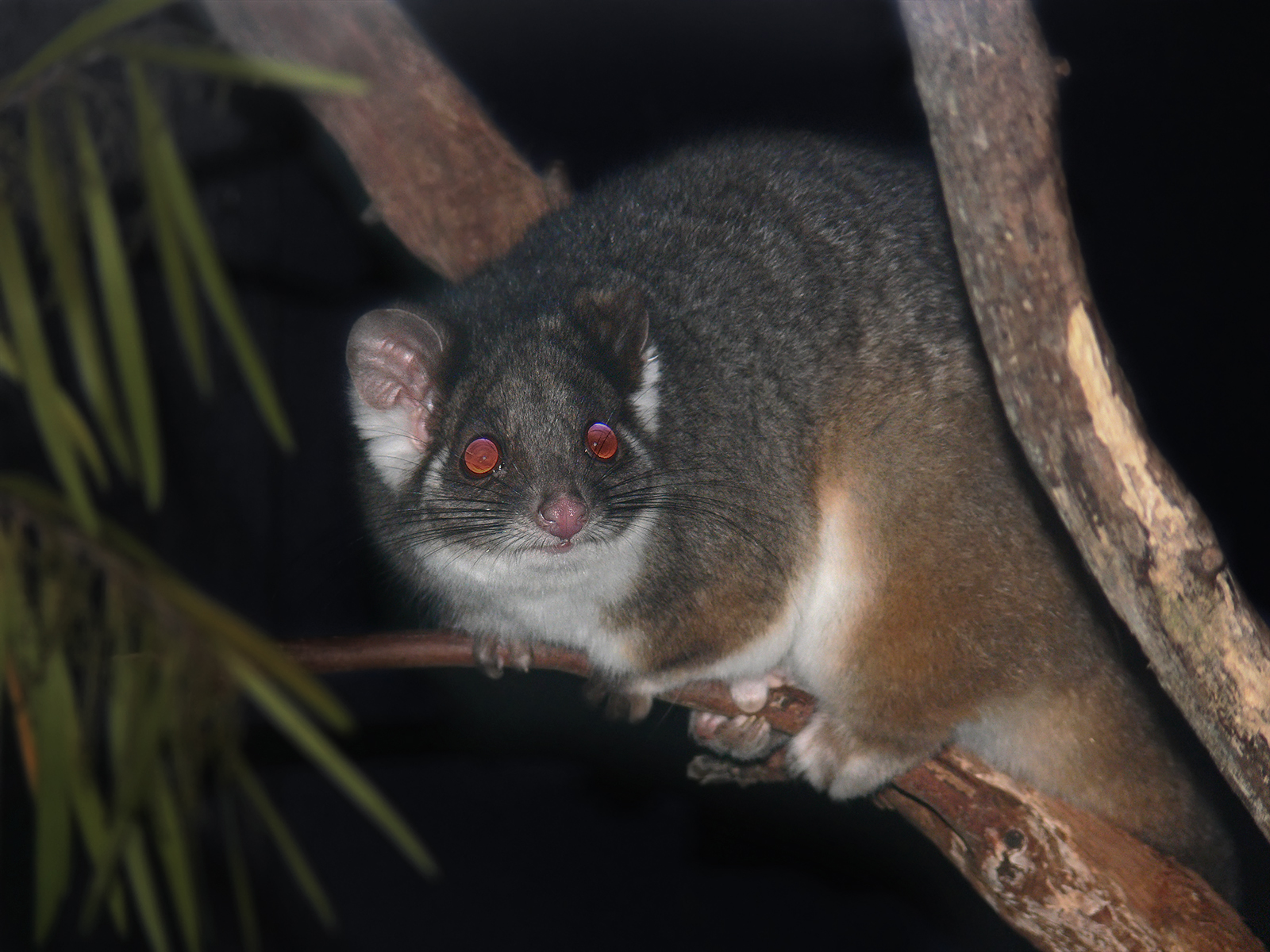
- Ringtail Posse: 1 – February 2023; Anna Maria Monticelli: King Parrots/Water Dragons - Jacqui Scruby: Loggerhead Turtle - Lyn Millett OAM: Flying-Foxes - Kevin Murray: Our Backyard Frogs - Miranda Korzy: Brushtail Possums
- Ringtail Posse: 2 - March 2023; Kevin Murray: Tawny Frogmouth - Kayleigh Greig: Red-Bellied Black Snake - Bec Woods: Australian Water Dragon - Margaret Woods: Owlet-Nightjar - Hilary Green: Butcher Bird - Susan Sorensen: Wallaby
- Ringtail Posse 3 - April 2023: Jeffrey Quinn: Kookaburra, Tom Borg McGee: Kookaburra, Stephanie Galloway-Brown: Bandicoot, Joe Mills: Noisy Miner
- Ringtail Posse 4 May 2023 - Andrew Gregory: Powerful Owl, Marita Macrae: Pale-Lipped Or Gully Shadeskink, Jools Farrell: Whales & Seals, Nicole Romain: Yellow-Tailed Black Cockatoo
The STAEDTLER Secondary School Artists Of The Year Competition Is Back!
Open to all year 7 to 12 students, it’s a chance for all up and coming artists to share their work for the opportunity to win 1 of 11 prizes. Entries close 20th June.
With the help of our panel of 3 talented judges, we are searching for the STAEDTLER Senior (years 10-12) and Junior (years 7-9) Artist of the Year 2023.
Both first place winners will receive a $1,000 VISA gift card!
For more information on prizes, please click here.
How to enter
Create
Using your favourite STAEDTLER products, show us your creativity and produce a masterpiece you’d like to submit.
You can get your inspiration from anywhere; a favourite place, a person, animal or school art project – we can’t wait to see your work of art!
Enter
Upload a photo of your artwork here and follow the prompts. If you are a Teacher, you can enter for your students and upload multiple entries at once. You will need to include artwork title, your name, school and year group.
Please ensure we can see the surface the artwork has been produced on eg. canvas or paper.
Note: digitally created or digitally enhanced artwork will not be accepted.
Win
Entries close on Tuesday 20th June and the judging and voting will then take pace.
You can vote for the People’s Choice Award from 21st -28th June – just come back to this page.
Winners will be announced 7th July.
Enter here: https://au.competitions.staedtler.com/

Applications Open For 150 Apprentice Scholarships
 Apprentices facing financial or personal hardship will be supported to undertake their trade and study through a $2.25 million NSW Government scholarship program.
Apprentices facing financial or personal hardship will be supported to undertake their trade and study through a $2.25 million NSW Government scholarship program.
Applications are now open until 21 July for the 2023 Bert Evans Apprentice Scholarships program that will support 150 people with $15,000 each to complete their training and further their career.
The scholarships support apprentices who are experiencing financial or personal hardship, demonstrate a high aptitude for vocational education and training, and are committed to their on- and off-the-job training in metropolitan and regional NSW.
The scholarship program is named in honour of the late Bert Evans AO, a passionate advocate of vocational education for more than 30 years. A total of 751 Bert Evans Apprentice Scholarships have been awarded since 2014.
These scholarships greatly assist first year apprentices to undertake their trade and study to achieve their career goals.
The NSW Government-run program offers grants of $5000 annually over 3 years to help people overcome personal barriers to finish their apprenticeships and go onto rewarding careers.
The scholarships are awarded to apprentices in NSW who have demonstrated:
- financial hardship and/or personal hardship
- capability for vocational education and training, and
- a positive attitude and application in the workplace and in off-the-job training.
Minister for Skills, TAFE and Tertiary Education Tim Crakanthorp said, “With demand for vocational education high, this year we have increased the number of Bert Evans scholarships on offer to help more apprentices through their training.
“Whether you need to purchase new tools, cover fuel or car maintenance costs, or pay for additional training courses, these scholarships have helped people overcome personal barriers to finish their apprenticeships and go onto rewarding careers.
“Apprenticeships are vital in ensuring NSW has a pipeline of skilled workers, and we want to give our apprentices a helping hand to complete their training, so they can make a strong contribution in their jobs and in the lives of their families and communities.”
Visit Bert Evans Apprentice Scholarships or phone 13 28 11 for more information and to apply.
Dorothea Mackellar Poetry Awards 2023: Optional Theme This Year 'The Winding Road'
HOW TO ENTER: https://dorothea.com.au/how-to-enter/
PLEASE SEE HERE FOR A DETAILED PDF ON ENTRY INSTRUCTIONS FOR TEACHERS AND PARENTS.
ONLINE SUBMISSION
Primary school and secondary school entries can be submitted anytime during the competition period.
1. Teacher/parent register account online *If you have already created an account, skip to step 3 and log in*
2. Check email for link to verify account and create password
3. Log in to your account
4. Purchase tier of entries *Please note we’re only able to accept credit card payments at this time*
5. Enter student details and submit poem(s) (cut and paste or type in poem content direct to the webpage)
6. Repeat step 5 for every student/individual poem.
*PLEASE NOTE: If you’re registering as an individual student, put your HOME address in your personal details and not your SCHOOL’S address! The address you list is where your participation certificate will be posted!*
Please read our Conditions of Entry here before registering for the competition.
USEFUL TIPS
Have a read of the judges’ reports from the previous year. They contain some very helpful advice for teachers and parents alike!
It is recommended for schools to appoint a coordinator for the competition.
Only a teacher/parent can complete the registration form on behalf of the student/child.
Log-in details: username is the email address and a password of your choice.
Log-in details can be given to other teachers/students for poem submission in class/at home.
Log-in as many times as necessary during the competition period.
Teachers can view progress by monitoring the number and content of entries.
Individual entries are accepted if the school is not participating or a child is home schooled. Parent needs to complete the registration form with their contact details. Please indicate ‘individual entry’ under school name and home postal address under school address.
Invoice for the entry fee will be sent to the registered email address within 2 weeks.
‘Participation certificate only’ option available for schools where pre-selection of entries has been carried out. Poems under this option will not be sent to judges, students will still receive participation certificate for their efforts.
Please read the Conditions of Entry before entering. Entries accepted: March 1 to June 30, results announced during early September.
NEED SOME INSPIRATION?
Check out our learning resources or browse the previous years’ themes and winning entries.
For more information contact our Project Officer on 02 6742 1200 or email dorothea.mackellar@outlook.com.
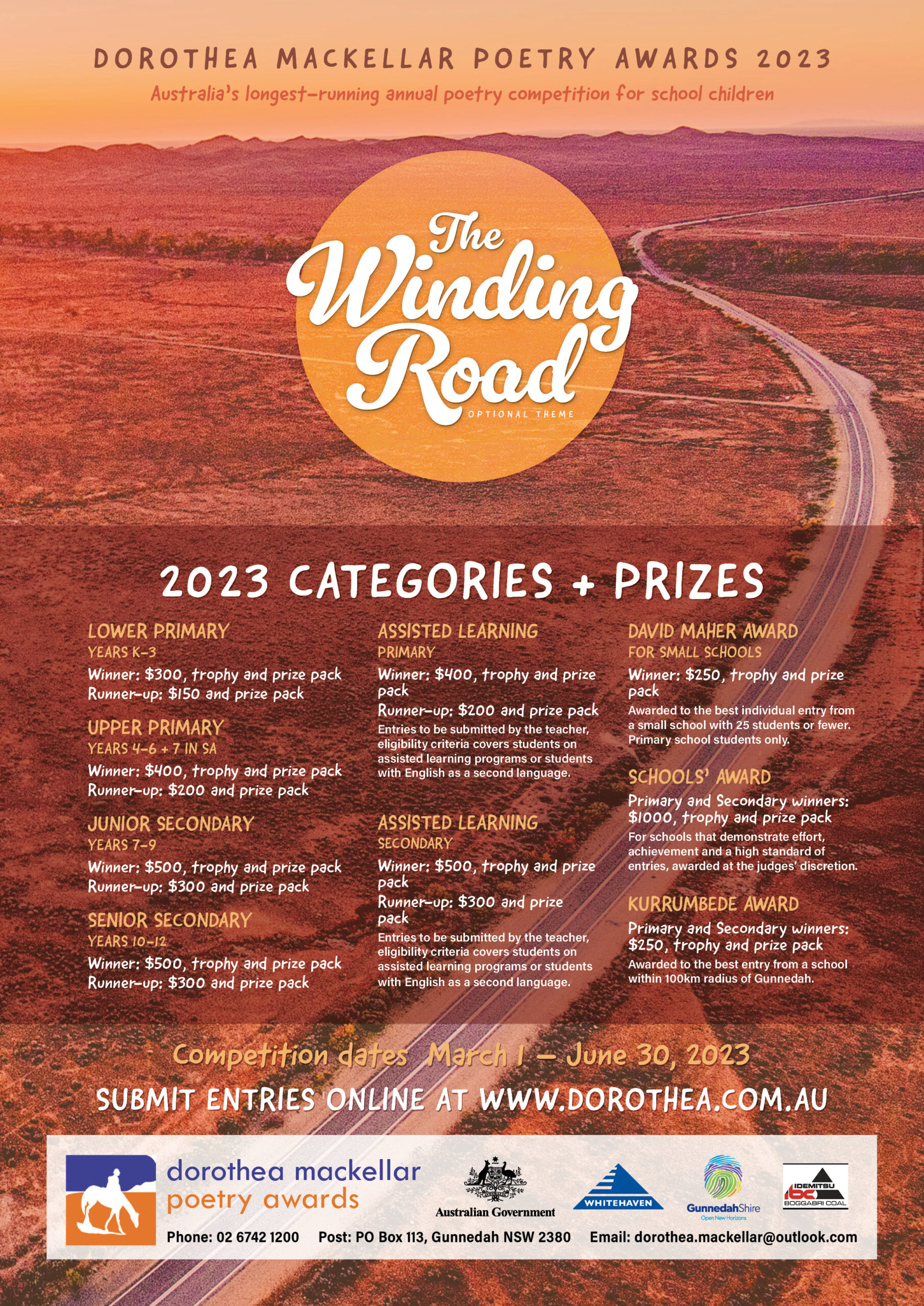
Flight Plan
Rowan Atkinson On Free Speech
School Leavers Support
- Download or explore the SLIK here to help guide Your Career.
- School Leavers Information Kit (PDF 5.2MB).
- School Leavers Information Kit (DOCX 0.9MB).
- The SLIK has also been translated into additional languages.
- Download our information booklets if you are rural, regional and remote, Aboriginal or Torres Strait Islander, or living with disability.
- Support for Regional, Rural and Remote School Leavers (PDF 2MB).
- Support for Regional, Rural and Remote School Leavers (DOCX 0.9MB).
- Support for Aboriginal and/or Torres Strait Islander School Leavers (PDF 2MB).
- Support for Aboriginal and/or Torres Strait Islander School Leavers (DOCX 1.1MB).
- Support for School Leavers with Disability (PDF 2MB).
- Support for School Leavers with Disability (DOCX 0.9MB).
- Download the Parents and Guardian’s Guide for School Leavers, which summarises the resources and information available to help you explore all the education, training, and work options available to your young person.
School Leavers Information Service
- navigate the School Leavers Information Kit (SLIK),
- access and use the Your Career website and tools; and
- find relevant support services if needed.
Word Of The Week: Garden
noun
1. a piece of ground adjoining a house, in which grass, flowers, and shrubs may be grown. 2. a well-cultivated region; area of fertile, developed land. : also garden spot. 3.In North America, a large public hall; "Madison Square Garden"
verb
1. cultivate or work in a garden.
From late 13c. (late 12c. in surnames), from Old North French gardin "(kitchen) garden; orchard; palace grounds" (Old French jardin, 13c., Modern French jardin), from Vulgar Latin *hortus gardinus "enclosed garden," via Frankish *gardo or some other Germanic source, from Proto-Germanic *gardan- (source also of Old Frisian garda, Old Saxon gardo, Old High German garto, German Garten "a garden," Old English geard, Gothic gards "enclosure"), from PIE root *gher- (1) "to grasp, enclose." Italian giardino, Spanish jardin are from French.
As an adjective from c. 1600. Garden-party "company attending an entertainment on the lawn or garden of a private house" is by 1843. Garden-variety in figurative sense first recorded 1928. To lead someone up the garden path "entice, deceive" is attested by 1925. Garden-glass "round dark glass reflective globe (about a foot and a half across) placed on a pedestal, used as a garden ornament," is from 1842.
also from late 13c.; garden (verb) "to lay out and cultivate a garden," 1570s, from garden (n.). Related: Gardened; gardening. also from 1570s
Compare Gardenia (noun) - Gardenia is a genus of flowering plants in the coffee family, Rubiaceae, native to the tropical and subtropical regions of Africa, Asia, Madagascar and Pacific Islands, and Australia. The genus was named by Carl Linnaeus and John Ellis after Alexander Garden (1730–1791), a Scottish-born American naturalist. He lived for many years in Charleston, South Carolina, using his spare time to study plants and living creatures, and sending specimens to Carl Linnaeus. During the American War of Independence he sided with the British and sent congratulations to Cornwallis after the Battle of Camden. Two years later his property (including 98 Broad Street) was confiscated, he had to leave South Carolina, and in 1783 he went to live in Westminster in London. He became vice-president of the Royal Society and is said to have been respected for his "benevolence, cheerfulness, and pleasing manners".
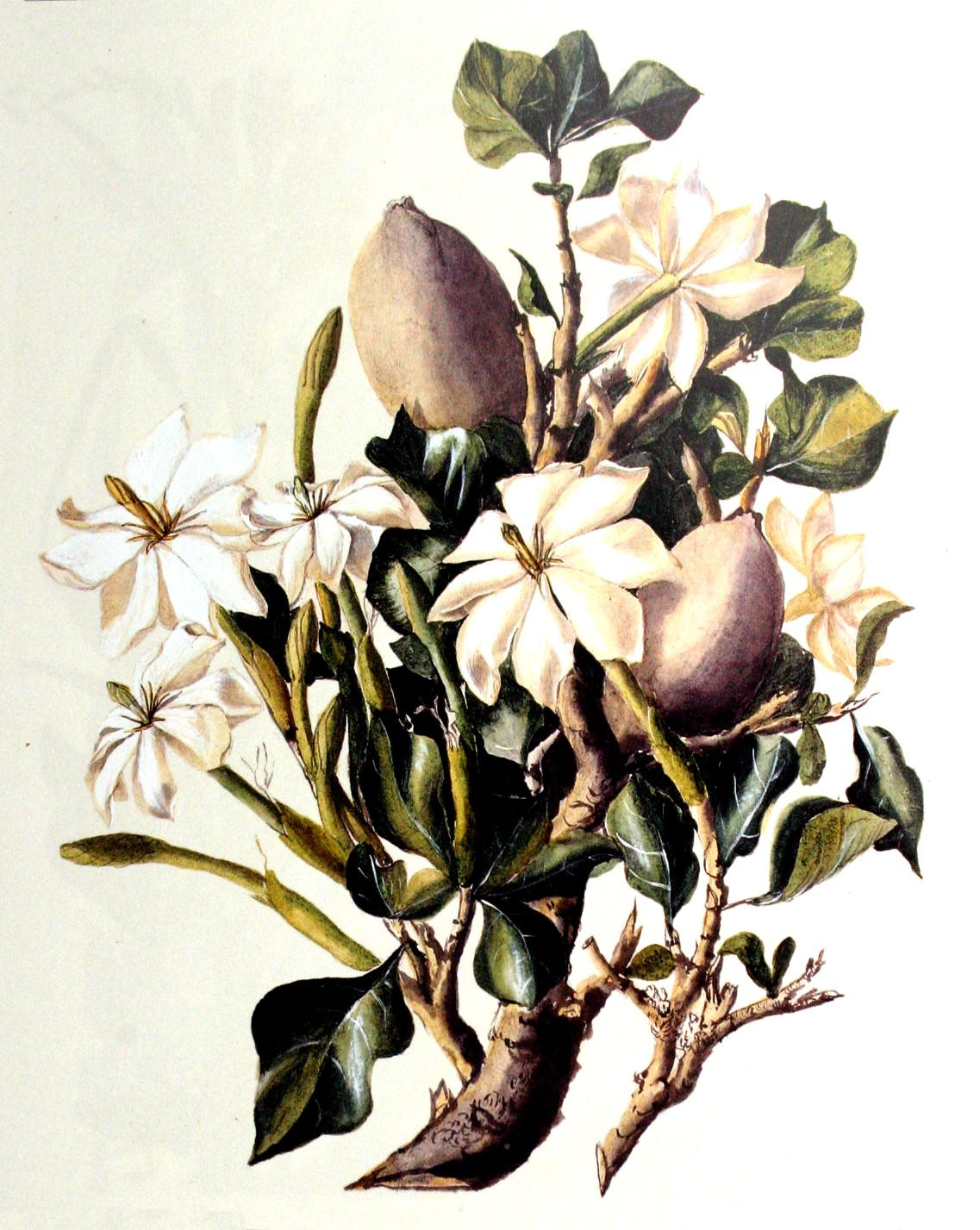
Gardenia thunbergia by Edith Struben (1868-1936)
Garden design is the process of creating plans for the layout and planting of gardens and landscapes. Gardens may be designed by garden owners themselves, or by professionals. Professional garden designers tend to be trained in principles of design and horticulture, and have a knowledge and experience of using plants. Some professional garden designers are also landscape architects, a more formal level of training that usually requires an advanced degree and often an occupational license.
Elements of garden design include the layout of hard landscape, such as paths, rockeries, walls, water features, sitting areas and decking, as well as the plants themselves, with consideration for their horticultural requirements, their season-to-season appearance, lifespan, growth habit, size, speed of growth, and combinations with other plants and landscape features. Most gardens consist of a mix of natural and constructed elements, although even very 'natural' gardens are always an inherently artificial creation. Natural elements present in a garden principally comprise flora (such as trees and weeds), fauna (such as arthropods and birds), soil, water, air and light. Constructed elements include paths, patios, decking, sculptures, drainage systems, lights and buildings (such as sheds, gazebos, pergolas and follies), but also living constructions such as flower beds, ponds and lawns.
Consideration is also given to the maintenance needs of the garden. Including the time or funds available for regular maintenance, (this can affect the choices of plants regarding speed of growth) spreading or self-seeding of the plants (annual or perennial), bloom-time, and many other characteristics. Garden design can be roughly divided into two groups, formal and naturalistic gardens. The most important consideration in any garden design is how the garden will be used, followed closely by the desired stylistic genres, and the way the garden space will connect to the home or other structures in the surrounding areas. All of these considerations are subject to the limitations of the budget. Budget limitations can be addressed by a simpler garden style with fewer plants and less costly hard landscape materials, seeds rather than sod for lawns, and plants that grow quickly; alternatively, garden owners may choose to create their garden over time, area by area.
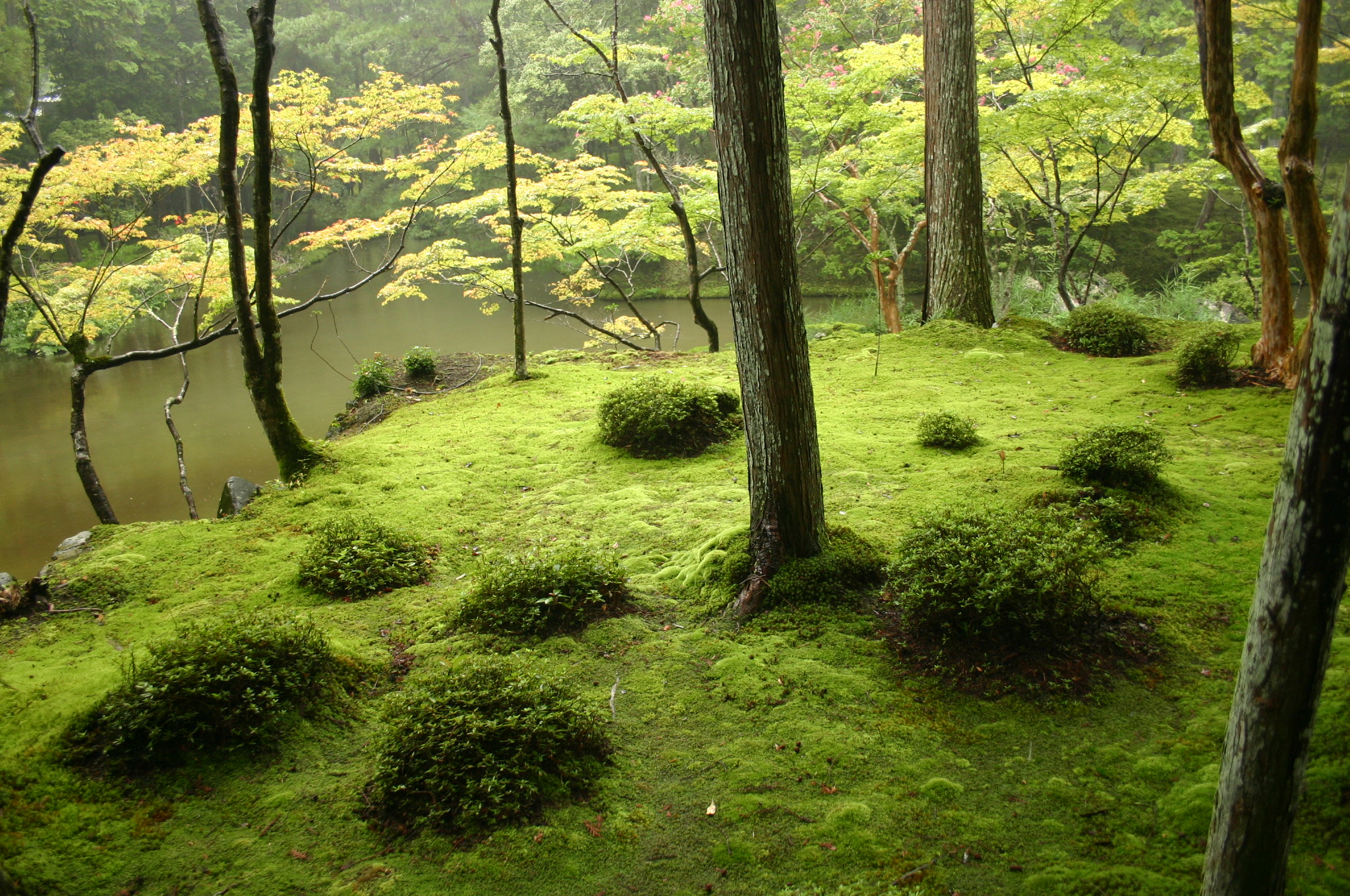
A moss garden at the Saihō-ji temple in Kyoto, started in 1339. Photo: Wikipedia
Australia should follow Ireland’s lead and add stronger health warning labels to alcohol

From August 2023, Australian beer, wine, spirits and pre-mixed drinks have to warn of the harms of drinking alcohol while pregnant. But they don’t have to mention the other harms of alcohol for the wider population.
Ireland recently signed legislation to introduce tougher alcohol warning labels, to warn about the risks of liver disease and fatal cancers from drinking alcohol. These will be in place from 2026.
Considering the ongoing efforts of the industry to undermine the introduction of effective alcohol labelling worldwide, the Irish example is an important victory for public health.
In Australia, it’s time to put consumer health and rights before commercial interests and warn people drinking and buying alcohol of the risks.
Educating Consumers About The Health Risks
Alcohol causes more than 200 diseases, injuries and other health conditions.
There is strong evidence that from the first drink, the risk of various cancers (of the breast, liver, colon, rectum, oropharynx, larynx and oesophagus) increases. This is because:
ethanol (pure alcohol) and its toxic by-product acetaldehyde damages cells by binding with DNA, causing cells to replicate incorrectly
alcohol influences hormone levels, which can modify how cells grow and divide
direct tissue damage can occur, increasing the absorption of other cancer-causing substances.
Alcohol use kills more than four Australians a day (the highest rate in the past decade) and results in A$182 million of avoidable costs per day.
Yet only half of Australians know drinking alcohol can cause cancer.
Research shows mandatory health labelling is an important way to increase awareness and should form part of a comprehensive alcohol control strategy.

Countering Industry Influence
The alcohol industry currently uses alcohol labels and packaging as a marketing and branding tool. Alcohol warning labels help counter these marketing messages.
Alcohol industry interests have so far succeeded in exempting alcoholic drinks from the usual consumer information requirements. Under the international labelling guidelines, all processed foods must have all ingredients listed on the label. But alcohol industry interests have so far succeeded in these rules not being applied to alcoholic beverages.
In Australia, the alcohol content and number of standard drinks must be listed on the product’s label. However, there is no requirement, as for other foods and drinks, that ingredients (except for certain allergens such as milk or gluten) and nutritional information (energy, carbohydrates, and so on) be listed.
Aside from warnings to pregnant women to abstain from alcohol, there is no provision for consumer information about the risks of alcohol consumption on alcohol packaging. Yet such warnings are required for other hazardous substances taken into the body, such as tobacco.
How Ireland Is Leading The Charge
Ireland is leading the world with its alcohol labelling. From 2026, drinks containing alcohol will have to inform consumers about the specific risks of liver disease and fatal cancers.
Labels will also have to notify buyers of the alcohol risks to pregnancy, the calorie content of the beverage, and the number of grams of alcohol it contains.
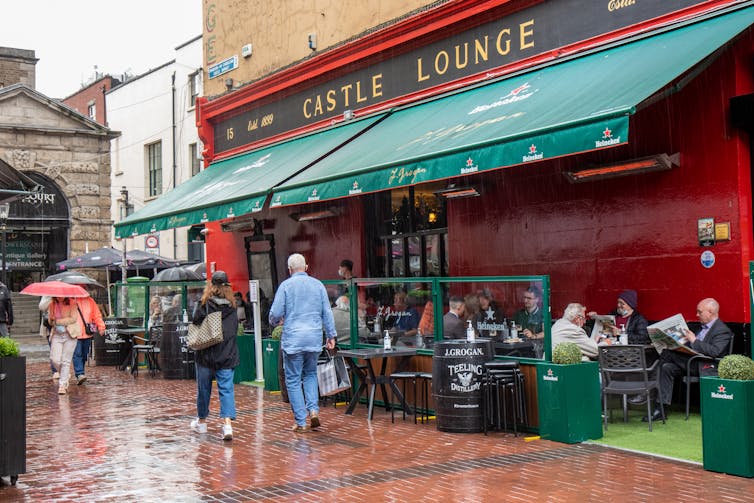
The new labelling move demonstrates the government has prioritised reducing alcohol-related disease and has widespread support. A recent household survey in Ireland found 81.9% of the more than 1,000 participants supported the introduction of health warning labels on alcohol.
Barriers To Overcome In Australia
In 2020, in the face of intense pressure from industry groups, the Australian government decided on new labelling requirements for alcoholic beverages, but only to warn about the risks of drinking during pregnancy. From a public health point of view, this was a mediocre compromise.
Australia is currently considering introducing energy content (kilojoule) labelling on alcoholic beverages. This would be a positive step and but it is as far as Australia seems willing to go for now. There are no plans for Australia to follow Ireland’s lead.
Some countries seem to be gearing up to use the World Trade Organization’s processes to oppose Ireland’s new labels.
Australia previously opposed enhanced alcohol warning labels Thailand proposed, at the same time Australia was seeking international support for its tobacco plain packaging laws. This time, Australia should prioritise the public’s health over commercial interests and support Ireland’s alcohol warning messages in the World Trade Organization.![]()
Emmanuel Kuntsche, Director of the Centre for Alcohol Policy Research, La Trobe University; Paula O'Brien, Associate Professor in Faculty of Law, The University of Melbourne, and Robin Room, Professor, Centre for Alcohol Policy Research, La Trobe University
This article is republished from The Conversation under a Creative Commons license. Read the original article.
While humans were in strict lockdown, wild mammals roamed further – new research
Robert Patchett, University of St AndrewsAt one point in 2020, 4.4 billion people – more than half of the world’s population – were under lockdown restrictions to stem the spread of COVID-19. This was such a sudden and substantial event that it has become known as the anthropause.
Many bustling cities fell silent, often with restaurants, shops and schools closing, and only essential services allowed to operate. It was around this time when people started to report animals appearing in unusual places. For example, cougars were seen prowling through the suburbs of Santiago, Chile, golden jackals became more active during the day in Tel Aviv, Israel, and dolphins appeared in the normally busy harbour of Trieste, Italy.
Meanwhile, scientists began to wonder whether this tragic event could provide an opportunity to learn how humans impact the behaviour of wildlife. A group of animal movement researchers came together in 2020 and formed the COVID-19 Bio-Logging Initiative, which I joined in 2021.
The initiative includes researchers who were already studying animals before the pandemic, and who were using bio-logging devices, such as GPS tags, to record animal movements. These devices – which use technology that you might find in a smartphone or watch – were still recording information while research teams were under lockdown.
What Animals Did In Lockdown
We were interested in finding out how animal movements might have changed when human activities were restricted – were the animals really altering their behaviour because human mobility had changed, or was it that people had more time to notice animals in these apparently unusual places? The initiative includes several projects tackling this question from different angles, with our first findings now published.
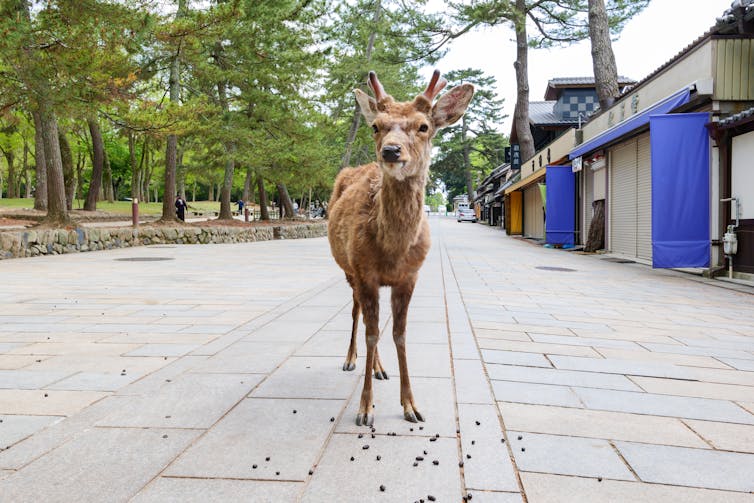
My colleague Marlee Tucker, an ecologist from Radboud University in the Netherlands, led an international team of 174 scientists who focused on studying whether the behaviour of large land mammals changed during the pandemic. Our results are in the journal Science.
By pooling data from over 2,300 individual tracked mammals, from 43 species including elephants, giraffes, bears, deer and cougars, we were able to look at how their behaviour and movement patterns changed during the lockdowns in 2020 compared to the same period one year earlier.
Animal movements can be influenced both by human mobility – people and vehicles moving in the landscape – and the built environment. It is normally impossible to distinguish these two effects because they are closely matched with each other, but the lockdown provided a chance for us to do this.
Exploring New Areas
We found that mammals were 36% closer to roads during lockdown, and that their movement distances over ten days were 73% longer during strict lockdowns compared to the same period one year earlier. It may be that mammals ventured closer to roads with reduced levels of traffic, while the absence of humans in the environment may have allowed them to explore new areas.
For example, a team led by ecologist Chris Wilmers found that cougars, which are typically secretive animals that avoid areas of human habitation, ventured far closer to the built-up areas of Santa Cruz, California, in 2020 than in previous years.
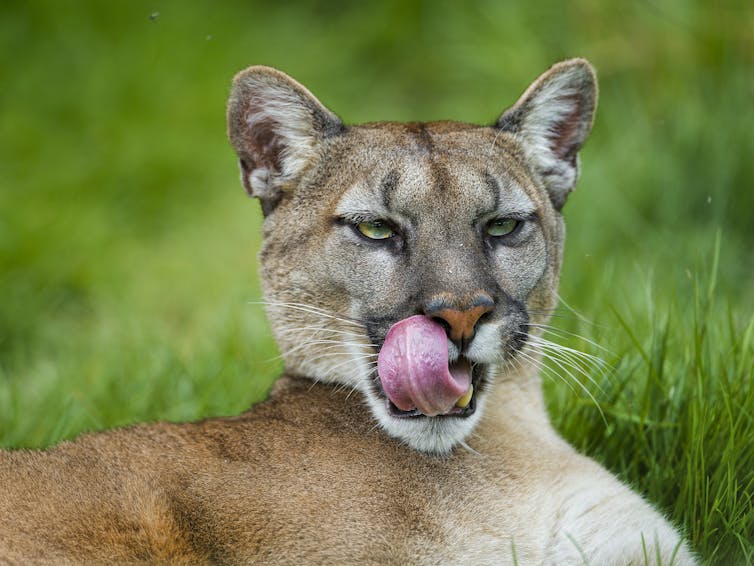
Our results were quite variable across species, which may be a result of lockdown policies varying between countries, but it could also be related to other factors, such as differences between species in their ability to change behaviour. Perhaps some species are more flexible in how they respond to changes in human activities.
These findings are important as they tell us that humans moving in the environment directly influence animal movements and behaviour, in addition to the effects of the built environment. With this knowledge we can start to think of new ways to change our behaviour that will positively impact wildlife. For example, we could adjust traffic flows in areas important for animal movement – in some national parks you can only drive during the day to avoid disturbing animals at night.
The COVID-19 Bio-Logging Initiative continues to investigate how changes in human mobility impact animal movements, with ongoing work that includes a study focusing on birds of prey, another on the marine environment, and a project comparing responses of birds and mammals in North America. Some members of the team recently had the chance to meet in-person for the first time at a workshop to discuss our projects and it was so exciting to meet these people that I had only ever worked with online.
Of course, humans moving around the landscape is only one of many impacts we have on wildlife. But the information gained from this research gives us the opportunity to think of new approaches to improve human-wildlife coexistence, and there is no time to lose.![]()
Robert Patchett, Postdoctoral Research Fellow, Covid-19 Bio-Logging Initiative, University of St Andrews
This article is republished from The Conversation under a Creative Commons license. Read the original article.
Intimate and immense: remembering Kaija Saariaho, one of the greatest composers of our time
Liza Lim, University of SydneyThe Finnish composer Kaija Saariaho passed away Friday at the age of 70.
There’s been an outpouring of grief, sadness and love on social media and in statements from orchestras, festivals and opera companies as the music community processes the loss of one of the greatest composers of our time.
When I was a young composer, the first work by Saariaho I heard live was Jardin Secret I (1985) at the 1988 Hong Kong ISCM Festival.
It was the first time the International Society of Contemporary Music had staged a festival in an Asian country, and many European composers were in attendance.
I was swept up by the work with its haunting bell tones transformed through electronics. The music sounded simultaneously familiar and alien, intimate and immense. I was awed by the imposing presence of a composer I knew only from music history texts.
Later, we met when I served on some competition juries she chaired.
I briefly got to know someone of warm generosity, incisive knowledge and integrity who brought a hilariously dry wit and impeccable timing to telling stories.
Operas Of Love And Loss Of Innocence
Saariaho will be remembered for her many illustrious achievements in forging a luminous musical language out of instrumental and electronic resources, the composition of five major operas, and through numerous orchestral works often showcasing close collaborators as soloists.
Her career reached its peak with two operas.
L’amour de loin (Love from afar) created a sensation when it premiered at the Salzburg Festival in 2000 in a production by American director Peter Sellars.
In a lyrical retelling of an enigmatic story of love and spiritual yearning, with a libretto by Lebanese-French writer Amin Maalouf, it has become one of the most successful 21st century operas.
Hypnotic, suspended harmonies and modal melodies create an alternative, idealised world in which one has time to contemplate themes of obsession, devotion and the realities and illusions of love.
In 2016, it was the first opera by a female composer to be staged at the Metropolitan Opera in New York since the production of Ethel Smyth’s Der Wald (The Forest) in 1903.
Two decades later, Saariaho’s last opera Innocence (2018) was described by the New Yorker as a “monumental cry against gun violence”. Again, it was immediately hailed as a masterpiece at its premiere at the 2021 Aix-en-Provence Festival in France.
Innocence is set in nine languages with a multitude of intersecting stories, but its genius lies in the way the luminously pulsing music is used to maintain dramatic momentum and a clear through line.
Following its premiere, Innocence has been taken up by major opera houses around the world.
A Trailblazer For Composers
Since the mid-80s, a time when there were very few prominent women composers on the international stage, Saariaho has been a major role model.
She resented the “woman composer” label and spoke infrequently about the prejudices and challenges she had encountered in the decidedly male-dominated world of classical music.
Yet on the occasions when Saariaho did address this topic, she conceded there was a role she could play in raising consciousness about the persistence of gender inequality in music.
In an interview for NPR in 2016 she said:
I’ve seen it with young women who are battling with the same things I was battling […] 35 years ago. […] Maybe we, then, should speak about it, even if it seems so unbelievable. You know, half of humanity has something to say.
Saariaho opened pathways for many composers across different generations and practices. Her work alchemised several 20th century musical trends that had tended to inhabit separate “camps” into a unique and emotionally powerful style with broad appeal for both specialists and the general public.
Early on, she engaged with a modernist focus on a detailed chiselling of sounds working with techniques that extended the capacities of any virtuoso performer performing her work.
Working at IRCAM (the Institute for Research and Coordination in Acoustics/Music) in Paris in the 1980s, she created several genre-breaking works.
Lichtbogen (1985/86) for ensemble with live electronics used computer-aided analyses of sound to shape huge sweeping brushstrokes of sensuous sound.
She worked within the musical field of “spectralism”, where the analysis of the acoustic properties of sound is used as the basis of composition. This opened up new approaches to harmony in her music.
Orion (2002) for large orchestra is an example of how she could build up layer upon layer of sound where you hear individual colours in translucent detail within epic, billowing clouds of resonance.
Her operatic works from 2000 on brought a narrative directness, a ravishing beauty and devastating emotional punch that saw her work embraced by audiences around the world.
Soul Listening
At the heart of her work was a kind of soul-listening and deep connection to nature.
In 2015, I had the privilege of going for a walk with Saariaho in a snowy landscape outside Hämeenlinna, Finland (the birthplace of Sibelius). As we walked, I got to hear the sounds of cracking ice and the whisper of birch trees through the lens of her delicate observations.
As quoted in The New York Times, she remarked to her biographer Pirkko Moisala:
The task of today’s artist is to nurture with spiritually rich art. […] To provide new spiritual dimensions. To express with greater richness, which does not always mean more complexity but with greater delicacy.
Liza Lim, Professor, Sculthorpe Chair of Australian Music, Sydney Conservatorium of Music, University of Sydney
This article is republished from The Conversation under a Creative Commons license. Read the original article.
Seven metals, ringed with four magical inscriptions: what other secrets does the ‘Alchemical Hand Bell’ hold?
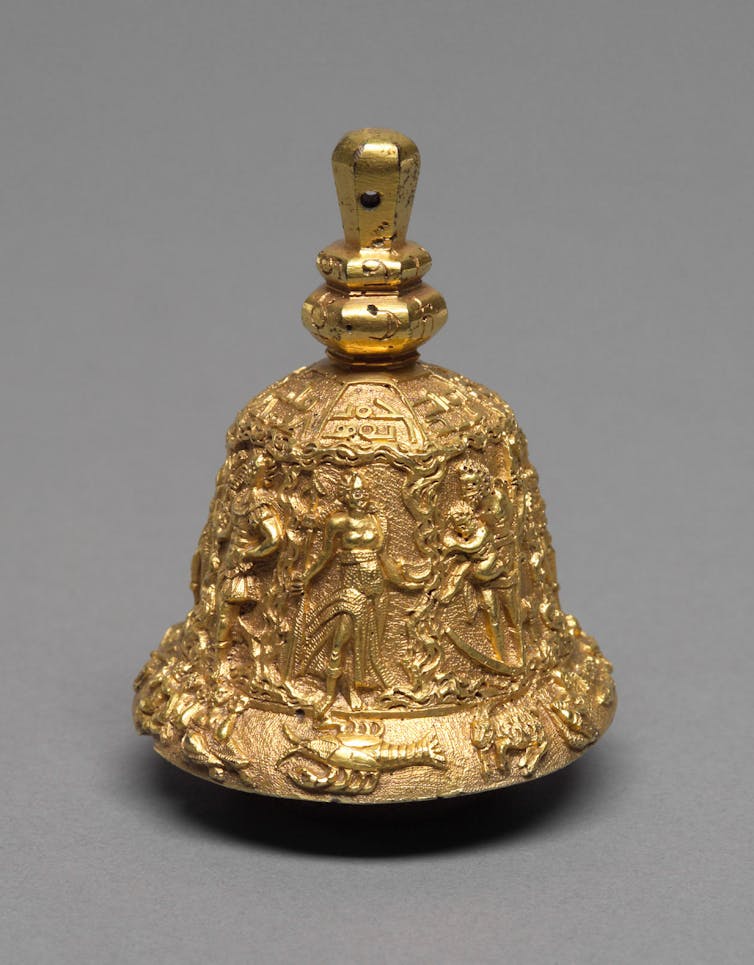
Scholars are baffled by a mysterious object from Emperor Rudolf II’s collection: a hand bell, made from an alloy of seven metals and said to have been used to summon spirits, contains an enigmatic cipher on the inside.
The Habsburg emperor Rudolf II (1552–1612) went down in history as one of the greatest patrons of the arts and sciences.
During his 36-year reign, he amassed unimaginable treasures and riches behind the walls of Prague Castle. Only a chosen few were granted access to his legendary Kunstkammer, or cabinet of curiosities, whose contents are spread all over the world today.
The emperor had a penchant for all things occult. Magic, alchemy, astrology and the kabbalah were among his favourite pastimes.
Alchemists and magicians from near and far – such as the English magus John Dee and his scryer Edward Kelly, the Danish astronomer Tycho Brahe, and the Polish alchemist Michael Sendivogius – were drawn to Prague around 1600.

The Alchemical Hand Bell
Around 1600, the Prague goldsmith Hans de Bull created two curious objects for the imperial collection. The so-called Alchemical Hand Bell once belonged to a pair. The whereabouts of its counterpart are unknown.
From a letter by the artist, we know he cast both bells from an alloy of the seven metals associated with the heavenly bodies depicted on the mantle: gold (sun), silver (moon), copper (Venus), iron (Mars), lead (Saturn), tin (Jupiter) and mercury (Mercury).
Such a sevenfold alloy had been described by the Swiss physician and alchemist Paracelsus as “Electrum”.
As part of a complicated ritual, the chime of an Electrum bell could grant its owner wisdom and power. Emperor Rudolf II admired Paracelsian philosophy, and De Bull’s bell was a welcome addition to the imperial Kunstkammer.
Secrets In The Script
Altogether, four different scripts can be discerned on this object.
In the trapezoidal fields above the deities’ heads are letters resembling Syriac, the language of ancient Syria.
The letters on the bell’s handle, above the planetary symbols, are reminiscent of Arabic.
The iron clapper is adorned with Hebrew letters which are also hardly legible.
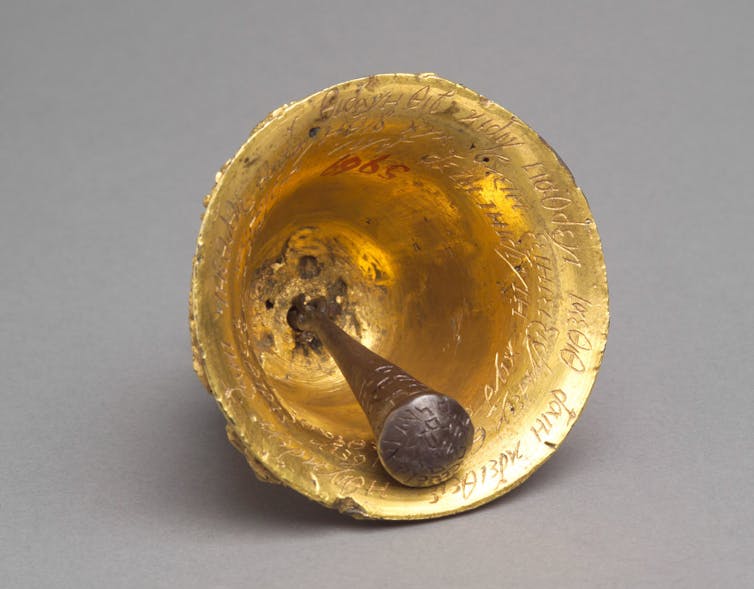
Surprisingly, the Greek inscription on the interior of the mantle can perfectly be transcribed:
θιδαγΗ θιβ κιδιγ ιιαθδεγι ιαεθιθ δαιΗ κδειθειζ Ηθιγκδεγι δαΗι ιΗεθδθιζ θιδαγ Ηθιβ κγκ βκειΗ ζειΗιει ζιδγΗειγ θιβ ιγαιβειγ ζιδιθειΗ καιθειζιΗ κιγδ δειΗ ιΗιδιγιΗ κιγδ δειΗ Ηεθιαθζειγ ζεθιΗθιΗ
However, every attempt so far to make sense of these 163 letters has failed: the “words”, composed of ten different Greek letters, are hardly pronounceable.
It is tempting to suspect the spiralling text contains some kind of invocation, maybe to summon the supernatural beings described by Paracelsus.
Is this another example of nonsense script that so often occurs on magical objects based on the principle of script for script’s sake? Or does the text contain a hidden meaning that still needs to be deciphered?
First Attempts To Decode The Bell’s Secrets
In order to try to understand the letters’ meaning, we looked at different kinds of ciphers used around the same time period.
One possibility is a so-called “polyphonic” cipher. This is one where each “cipher” symbol – here the ten Greek letters – corresponds to one or possibly several letters in the original language.
This is in contrast to a “homophonic” cipher, such as those created by the Zodiac serial killer in the 1960s, where each letter in the original text is replaced by one of several different cipher symbols.
Historically, there have been a few attempts at using polyphonic ciphers, such as the Papal ciphers of around the same time period. These ciphers used the digits 0 to 9 with dots above the numerals to distinguish different letters and groups of letters.
But these kinds of ciphers can be very difficult to solve where the exact enciphering method is not known. Here, we do not even know the underlying language.
Some plausible possibilities are Latin, German or Greek. Latin was the lingua franca of scholarly writing in Europe and any Westernised territory of the time, while German and Czech were spoken at Rudolf’s court.
We tried automated methods for solving these ciphers with various languages. But the shortness of the passage meant the usual techniques were unlikely to help.
The ultimate question is: is there actually an understandable message present?
The more general question for researchers is how much “ciphertext” do we need to extract the underlying message? We can only deduce this for ciphers we already know of.
If we could understand the writing, we could gain new insight into the meaning of this bell and cipher techniques used at the time, and perhaps uncover secrets from Emperor Rudolf’s fabled court. But for now, the mystery prevails.![]()
Richard Bean, Research Fellow, School of Information Technology and Electrical Engineering, The University of Queensland; Corinna Gannon, Research assistant, Goethe University Frankfurt am Main, and Sarah Lang, PostDoc in Digital Humanities at Centre of Information Modelling (University of Graz), University of Graz
This article is republished from The Conversation under a Creative Commons license. Read the original article.
From being mildly late to sucking on people’s tears – what is a ‘beige flag’ on TikTok?

TikTok is one of the most prevalent social media platforms for trend-setting and trend-spotting – particularly within the relationship space. From trends and concepts like #DatingStoryTime to numbering the five stages of a relationship, TikTok is at the forefront of determining what’s hot and what’s not in the relationship world.
The newest trend to hit TikTok from a relationship trend perspective: beige flags.
TikTok has been making headlines recently in relation to government bans and Chinese data usage.
For those unfamiliar with the platform, TikTok, is a video-sharing social media platform originally released by ByteDance as “Douyin” in China. Since its merger with Musical.ly in 2018, it has become a worldwide phenomenon. As of February 2021, TikTok was downloaded over 2.6 billion times worldwide, and boasts approximately one billion monthly average users.
Many would argue it presents similar features to pre-existing social media platforms like Instagram, Snapchat or Facebook. However, its ubiquity and popularity is often linked to its variety of content and distinct brand of weird humour echoed in many TikTok videos.
But TikTok is not simply fluff, it has increasingly become a space of contestation, negotiation and information of cultural, social and political norms.
Perhaps best described by Refinery29, TikTok has become a place “where we can learn about others’ morning routines, check out the latest headband hairstyles and follow creators who wear Victorian fashion every day” as well as “a place to exchange serious ideas … TikTok is helping people to question if they’re really straight, or just subscribing to ‘compulsive heterosexuality’”.
The latest TikTok relationship trend: beige flags. A trend which allows for both discussion and change in the relationship space but may also reinforce pre-existing boundaries and norms.
What Is A “Beige Flag”?
The term “beige flag” was initially popularised by dating apps and referred to people who hadn’t put enough effort into their dating app profile, or presented as incredibly boring.
This included profiles which lent into generic hobbies like, “going to the gym” or a profile with a pedestrian series of pics, for example, a heterosexual standard, a single person holding a small dog.
In essence, the person wasn’t a “red flag” but a “beige flag” – for boredom. The term stuck briefly, but shifted quickly to another definition on TikTok.
The TikTok beige flag definition refers to the odd quirks your partner may have – which bother you, but you are willing to accept. Examples include, extreme lateness, sucking tears off crying faces, assisting wait-staff if food is late at a restaurant or even tearing off holey underwear as a form of entertainment.
Those developing the content around beige flags are usually in a long-term relationship and the post is framed as satirical or humorous.
Romance On TikTok
This follows trends like #DatingStoryTime, where users are encouraged to chronicle their dating wins and disasters in a vlog-like style. Some of these stories might include first date debacles on foods or drinks payment, strange and off-putting dating app Direct Messenger chit-chat and other spoof-like dating stories.
Again, this plays into a modern humour, a kind of jolly-absurdism, or merry-nihilism.
Simultaneously, these trends play into our desires, as human beings, to emplot ourselves into a masterplot. An overarching story which gives our lives shape, definition, a beginning-middle-end.
In this case, and via TikTok, users are playing into a well-known, white, western storyline: the romantic masterplot, and in particular the rom-com format.
Indeed, many of these relationship reels on TikTok rely on humour to entertain audiences, through beige flags or other intimacy trends, which are usually exaggerated for comedic effect.
By presenting these scenarios in a humorous way, TikTok can both entertain audiences and also help to normalise the idea that dating and relationships are processes fraught with potential missteps and pitfalls.
By laughing at these awkward situations, audiences may be more willing to accept that it is okay to make mistakes while dating and that these mistakes do not necessarily mean the end of a relationship. Also, that “odd” and “unusual” relationships are also relatively common.
Sites Of Struggle And Negotiation
Academic Martin Nakata argues online spaces – such as TikTok – can be understood as digitally mediated “sites of struggle over the meaning of [our] experience”. Meaning that they are spaces where users can discuss, share opinions, contest and form new ways of thinking.
In contrast, TikTok has also been accused of moderating and removing LGBTIQ+ content. In 2019, The Guardian reported that TikTok’s efforts to provide locally sensitive moderation had resulted in the removal of content that could be perceived as being positive towards LGBTIQ+ people or LGBTIQ+ rights (such as same-sex couples holding hands) in countries such as Turkey.
With concepts like beige flags, #DatingStoryTime and other romantic trends, TikTok is pushing boundaries and leading us to question previously rigid dating norms and practices. It is also connecting like-minded people and establishing cultures of care among them.
Lisa Portolan, PhD student, Institute for Culture and Society, Western Sydney University
This article is republished from The Conversation under a Creative Commons license. Read the original article.
Alien spacecraft allegations suggest the Pentagon has approved conspiracy theories – about itself
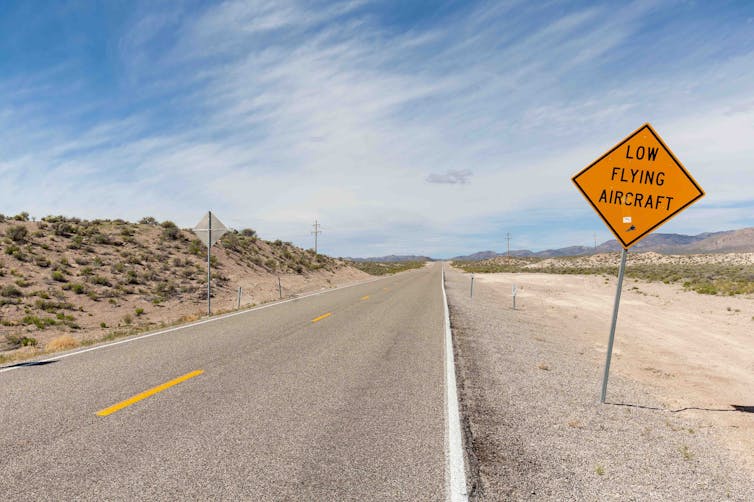
Claims the US government has secretly retrieved crashed alien spacecraft and their non-human occupants are hardly new. They are firmly entrenched in post-war American UFO lore and conspiracy theory, inspiring the most famous narrative in ufology: the “Roswell incident”.
Now, however, journalists Leslie Kean and Ralph Blumenthal have injected fresh vigour into these ageing claims – apparently with the Pentagon’s approval.
In an article for science and technology news site The Debrief, they report the US government, its allies, and defence contractors have retrieved multiple craft of non-human origin, along with the occupants’ bodies.
Additionally, they report this information has been illegally withheld from US Congress, the All-domain Anomaly Resolution Office established by the US Department of Defense in 2022 to look into UFOs, and the public.
What Are The Claims?
The primary source for the new claims is former US intelligence official David Grusch.
Grusch’s credentials, verified by Kean and Blumenthal, are impressive. He is a veteran of the National Geospatial-Intelligence Agency and the National Reconnaissance Office. He represented both organisations on the US government’s task force studying unidentified aerial phenomena (the official term for UFOs).

Grusch says the retrieved materials are:
of exotic origin (non-human intelligence, whether extraterrestrial or unknown origin) based on the vehicle morphologies and material science testing and the possession of unique atomic arrangements and radiological signatures.
Grusch’s claims are supported by Jonathan Grey, who works for the National Air and Space Intelligence Center, where he focuses on analysis of unidentified aerial phenomena. Grey told Kean and Blumenthal:
The non-human intelligence phenomenon is real. We are not alone […] Retrievals of this kind are not limited to the United States.
How Credible Are The Claims?
Kean and Blumenthal are credible and accomplished reporters on UFOs.
In 2017, writing with Helene Cooper for the New York Times, they revealed a secret US$22 million Pentagon UFO research program. That article did much to initiate a wider rethinking about UFOs, avoiding stereotypes, stigma and sensationalism.
Most of the subsequent “UFO turn” in US defence policy and public discourse has focused on images and eyewitness testimony of anomalous airborne objects. Now, Kean and Blumenthal may have brought anomalous objects themselves – and even their supposed non-human occupants – into the conversation.
Shortly after the Debrief article, Australian journalist Ross Coulthart’s interview with Grusch appeared on US news network News Nation. Former Deputy Assistant Secretary of Defense for Intelligence, Christopher Mellon, has also published an article in Politico calling for greater transparency.
This looks a lot like an orchestrated effort to convince the public (and US Congress) something much more substantial than “things in the sky we can’t explain” is going on.
Approved By The Pentagon?
Grusch seems to have followed Pentagon protocol in publishing his information. Kean and Blumenthal write Grusch:
provided the Defense Office of Prepublication and Security Review at the Department of Defense with the information he intended to disclose to us. His on-the-record statements were all “cleared for open publication” on April 4 and 6, 2023, in documents provided to us.
What does that mean? A Prepublication and Security Review is how the Pentagon confirms information proposed for public release is reviewed to ensure compliance with established national and Department of Defense policies, and to determine it:
contains no classified, controlled unclassified, export-controlled, or operational security related information.
If Grusch’s information is true, it is surely both “classified” and “operational security related”. So why would the Pentagon approve its publication?
If Grusch’s information is false, it would probably not qualify as classified or operational security related. But this raises another question: why would the Pentagon approve the publication of an unfounded conspiracy theory about itself?
Doing so would likely mislead the public, journalists, and Congress. It would also undermine the Pentagon’s own attempt to understand the unidentified aerial phenomena problem: the All-domain Anomaly Resolution Office.
An Official Denial
Indeed, the All-domain Anomaly Resolution Office told News Nation it:
has not discovered any verifiable information to substantiate claims that any programs regarding the possession or reverse-engineering of extraterrestrial materials have existed in the past or exist currently.
Grusch has an explanation for this apparent ignorance. When it comes to unidentified aerial phenomena investigations, he says, the US government’s left hand doesn’t know what its right is doing, with:
multiple agencies nesting [unidentified aerial phenomena] activities in conventional secret access programs without appropriate reporting to various oversight authorities.
Timothy Good’s classic 1987 exploration of UFO investigations, Above Top Secret, described similar bureaucracy.
Nested Activities And Segregated Knowledge
The notion of “nested” unidentified aerial phenomena activities, segregating knowledge within vast bureaucracies, is partly what makes Grusch’s claims both intriguing and (for now) unverifiable.
If this is the case, organisations focusing on unidentified aerial phenomena, such as the All-domain Anomaly Resolution Office, may operate in earnest and report transparently on the best information they have. Yet they may also be deprived of information essential to their activities.
This would make them little more than PR fronts, designed to create the impression of meaningful action.
In the absence of direct experience of unidentified aerial phenomena, most of us rely on information about them to form our beliefs. Scrutinising how this information is produced and distributed is essential.
US government activity in this area will continue. Congressman James Comer, chair of the House Oversight Committee, has said he will hold a hearing on UFOs in response to Grusch’s allegations.![]()
Adam Dodd, Tutor, School of Communication and the Arts, The University of Queensland
This article is republished from The Conversation under a Creative Commons license. Read the original article.
What is the ‘splinternet’? Here’s why the internet is less whole than you might think

“Splinternet” refers to the way the internet is being splintered – broken up, divided, separated, locked down, boxed up, or otherwise segmented.
Whether for nation states or corporations, there’s money and control to be had by influencing what information people can access and share, as well as the costs that are paid for this access.
The idea of a splinternet isn’t new, nor is the problem. But recent developments are likely to enhance segmentation, and have brought it back into new light.
The Internet As A Whole
The core question is whether we have just one single internet for everyone, or whether we have many.
Think of how we refer to things like the sky, the sea, or the economy. Despite these conceptually being singular things, we’re often only seeing a perspective: a part of the whole that isn’t complete, but we still experience directly. This applies to the internet, too.
A large portion of the internet is what’s known as the “deep web”. These are the parts search engines and web crawlers generally don’t go to. Estimates vary, but a rule of thumb is that approximately 70% of the web is “deep”.
Despite the name and the anxious news reporting in some sectors, the deep web is mostly benign. It refers to the parts of the web to which access is restricted in some ways.
Your personal email is a part of the deep web – no matter how bad your password might be, it requires authorisation to access. So do your Dropbox, OneDrive, or Google Drive accounts. If your work or school has its own servers, these are part of the deep web – they’re connected, but not publicly accessible by default (we hope).
We can expand this to things like the experience of multiplayer videogames, most social media platforms, and much more. Yes, there are parts that live up to the ominous name, but most of the deep web is just the stuff that needs password access.
The internet changes, too – connections go live, cables get broken or satellites fail, people bring their new Internet of Things devices (like “smart” fridges and doorbells) online, or accidentally open their computer ports to the net.
But because such a huge portion of the web is shaped by our individual access, we all have our own perspectives on what it’s like to use the internet. Just like standing under “the sky”, our local experience is different to other people. No one can see the full picture.
A Fractured Internet Poised To Fracture Even More
Was there ever a single “Internet”? Certainly the US research computer network called ARPANET in the 1960s was clear, discrete, and unfractured.
Alongside this, in the ‘60s and '70s, governments in the Soviet Union and Chile also each worked on similar network projects called OGAS and CyberSyn, respectively. These systems were proto-internets that could have expanded significantly, and had themes that resonate today – OGAS was heavily surveilled by the KGB, and CyberSyn was a social experiment destroyed during a far-right coup.
Each was very clearly separate, each was a fractured computer network that relied on government support to succeed, and ARPANET was the only one to succeed due to its significant government funding. It was the kernel that would become the basis of the internet, and it was Tim Berners-Lee’s work on HTML at CERN that became the basis of the web we have today, and something he seeks to protect.

Today, we can see the unified “Internet” has given way to a fractured internet – one poised to fracture even more.
Many nations effectively have their own internets already. These are still technically connected to the rest of the internet, but are subject to such distinct policies, regulations and costs that they are distinctly different for the users.
For example, Russia maintains a Soviet-era-style surveillance of the internet, and is far from alone in doing so – thanks to Xi Jinping, there is now “the great firewall of China”.
Surveillance isn’t the only barrier to internet use, with harassment, abuse, censorship, taxation and pricing of access, and similar internet controls being a major issue across many countries.
Content controls aren’t bad in themselves – it’s easy to think of content that most people would prefer didn’t exist. Nonetheless, these national regulations lead to a splintering of internet experience depending on which country you’re in.
Indeed, every single country has local factors that shape the internet experience, from language to law, from culture to censorship.
While this can be overcome by tools such as VPNs (virtual private networks) or shifting to blockchain networks, in practice these are individual solutions that only a small percentage of people use, and don’t represent a stable solution.
We’re Already On The Splinternet
In short, it doesn’t fix it for those who aren’t technically savvy and it doesn’t fix the issues with commercial services. Even without censorious governments, the problems remain. In 2021, Facebook shut down Australian news content as a protest against the News Media Bargaining Code, leading to potential change in the industry.
Before that, organisations such as Wikipedia and Google protested the winding back of network neutrality provisions in the US in 2017 following earlier campaigns.
Facebook (now known as Meta) attempted to create a walled garden internet in India called Free Basics – this led to a massive outcry about corporate control in late 2015 and early 2016. Today, Meta’s breaches of EU law are placing its business model at risk in the territory.
This broad shift has been described in the past by my colleague Mark Andrejevic in 2007 as digital enclosure – where states and commercial interests increasingly segment, separate and restrict what is accessible on the internet.
The uneven overlapping of national regulations and economies will interact oddly with digital services that cut across multiple borders. Further reductions in network neutrality will open the doors to restrictive internet service provider deals, price-based discrimination, and lock-in contracts with content providers.
The existing diversity of experience on the internet will see users’ experiences and access continue to diverge. As internet-based companies increasingly rely on exclusive access to users for tracking and advertising, as services and ISPs overcome falling revenue with lock-in agreements, and as government policies change, we’ll see the splintering continue.
The splinternet isn’t that different from what we already have. But it does represent an internet that’s even less global, less deliberative, less fair and less unified than we have today.![]()
Robbie Fordyce, Lecturer, Communications and Media Studies, Monash University
This article is republished from The Conversation under a Creative Commons license. Read the original article.
Business is trying to scare us about ‘same job, same pay’. But the proposal isn’t scary

On Monday, eight of Australia’s largest employer groups launched a campaign against the government’s Same Job, Same Pay Bill, saying it was “unfair”.
The television ads and website say the proposed law would penalise hard workers with “decades of knowledge and experience” by forcing employers to pay everyone the same (in the hard workers’ case, lower) wage.
The employer groups are right about one thing. What’s at stake is fairness, although not in the way they suggest.
The bill, introduced in November, is designed to regulate the disingenuous use of labour-hire contracts.
Its explanatory memorandum says its aim is to “ensure that workers employed through labour-hire companies will receive no less than the same pay as workers employed directly”.
It does this in two ways.
labour-hire businesses would be required to afford to all workers whom they provide to another person “pay and conditions which are no less favourable” than those required to be paid to direct employees of that person
firms or people that use labour-hire businesses would be required to provide the labour-hire business with all the information it would reasonably require to comply with the act and to refrain from engaging any labour-hire business that did not comply with the act.
The bill is part of an election promise Labor made to address instances of employers using labour-hire firms to deliberately undercut the wages and conditions they offer in enterprise agreements.
Labor Hire Isn’t All Bad
Many labour-hire arrangements are put in place for legitimate reasons.
Among the examples are aged-care workers contracted through an external agency to backfill sick leave and production workers contracted to deal with unexpected increases in demand.
In the preamble to the bill, the government explicitly says it will not affect the ordinary and fair use of labour hire, including as a reasonable way to manage surge periods and employee absences.
But the misuse of labour-hire agreements is contributing to the fracturing of Australian workplaces by setting up two – and sometimes more – sets of employment conditions, which is inherently unfair.
But Labour-Hire Workers Can Be Poorly Paid
The Bureau of Statistics finds 84% of workers on labour-hire contracts don’t have access to paid leave entitlements. Their median annual earnings are A$33,100. Labour-hire work is insecure and poorly compensated for being insecure.
Labour-hire workers are also more likely to sustain workplace injuries due to inadequate training and management practices.
In November the South Australian Employment Tribunal found in favour of a worker who was “not trained adequately or at all in relation to the safe completion of the task” that resulted in their death.
The employers’ groups campaigning against the Bill include the Australian Chamber of Commerce and Industry, the Australian Petroleum Production & Exploration Association, the Business Council of Australia and the Council of Small Business Organisations.
They also include the Minerals Council of Australia headed up by Tania Constable who told 2GB’s Ray Hadley on Monday the bill would mean someone could “be employed by a business for six months and get the same pay as somebody that has been there for six years”.
The Bill Does Not Require Every Worker To Be Paid The Same
The bill does not relate to the rates of pay within organisations. What it would do is require labour-hire firms to provide pay and conditions “no less favourable” than those paid to direct employees performing the same duties.
It would not change or override anything in enterprise agreements.
The employers groups have also claimed the bill would suppress wage growth when the opposite is more likely to be true.
Fragmented workplaces and the low wages common in insecure contracts (including labour-hire agreements) have been exerting a downward pressure on Australian wages.
It Is More Likely To Lift Than Depress Wages
Rather than lowering permanent employees’ wages, the bill would lift the wages of labour-hire workers up to their level.
Claims that it would disincentivise hard work or hurt productivity (or cost jobs) obscure what the bill is about: ensuring workers who are doing the same job go home with the same paycheck at the end of each day.
The government will put the bill before parliament later this year.
It is worth considering what the motives might be of those who oppose it. It might be that they are not as keen to increase wages, productivity and employment as they say and are more concerned about keeping the right to pay externally hired contractors less than the workers they work alongside.![]()
Gemma Beale, Senior Project Officer, Australian Industrial Transformation Institute, Flinders University
This article is republished from The Conversation under a Creative Commons license. Read the original article.
Avalon Beach Ladies Probus Club: July 2023 Speaker
 Avalon Beach Ladies Probus Club meets on 1st Tuesday of each month at Club Palm Beach at 10am, followed by a delicious lunch!
Avalon Beach Ladies Probus Club meets on 1st Tuesday of each month at Club Palm Beach at 10am, followed by a delicious lunch!Flight Plan
Doctors Have Critical Role In Good Stewardship In Our Health System: AMA
How to treat jellyfish stings (hint: urine not recommended)
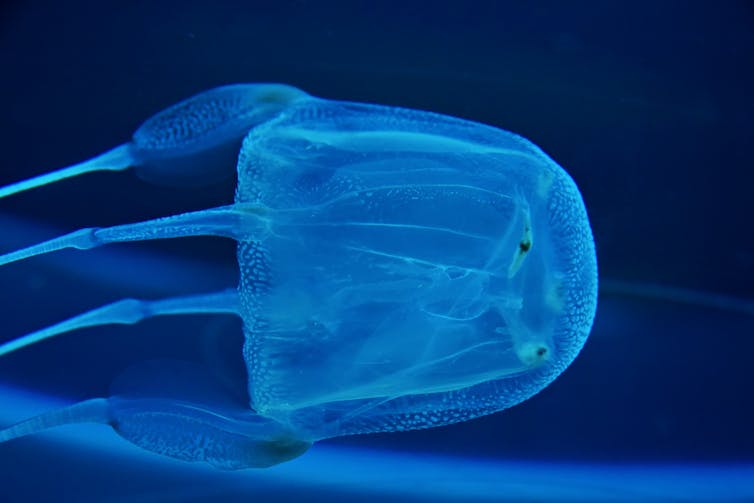
If you have been stung by a jellyfish at the beach, you’ll know how painful and unpleasant it can be. But how best to treat jellyfish stings has been debated over the years.
Is it best to use hot water or an ice pack? How about pouring on vinegar or rubbing with sand? Then there’s the popular myth about urinating on your leg, which health professionals have debunked many times but seems to resurface regardless.
We looked at the evidence for popular treatments and have just published our analysis in a Cochrane review. This is what we found.
Why Do Jellyfish Stings Hurt So Much?
Jellyfish are common in coastal regions around the world.
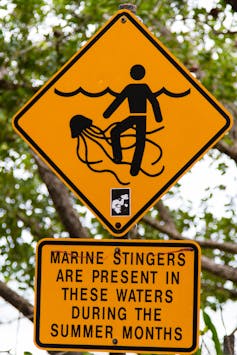
They have tentacles covered with tiny stinging cells called nematocysts. When these cells touch your skin, they release venom that can cause burning, redness, swelling and sometimes more serious reactions, such as heart issues.
Fortunately, most jellyfish stings are not life-threatening. Symptoms differ depending on the species. And the best treatment for one species is not always the best for another.
By knowing which treatment works and which doesn’t, you can reduce your discomfort and avoid complications.
What We Did
We found nine trials involving treatments for two types of jellyfish:
bluebottles or Portuguese man o’ war (Physalia)
box jellyfish (Cubozoa), which are considered the most dangerous jellyfish. Some box jellyfish can cause Irukandji syndrome (a condition that may lead to severe pain, heart problems, and very occasionally death).
These trials, involving 574 people, tested various treatments such as vinegar, hot water, ice packs, isopropyl alcohol, methylated spirits, ammonia and sodium bicarbonate.
The trials also looked at Adolph’s meat tenderiser (a powder thought to break down proteins) and Sting Aid (an over-the-counter treatment thought to help ease pain after a variety of stings).
So What Works?
Regardless of the jellyfish species, it’s reasonable to first remove any visible tentacles with tweezers or a gloved hand. What to do next depends on the species.
For bluebottles, try heat
The data in our included studies provides what’s described as low-certainty evidence for soaking the affected area in water about 45℃ to ease the pain. This is thought to denature the venom protein. At the beach, you could apply a heat pack or take a hot shower.
There was not enough evidence to show whether other treatments, such as ice packs, were effective for bluebottle stings.
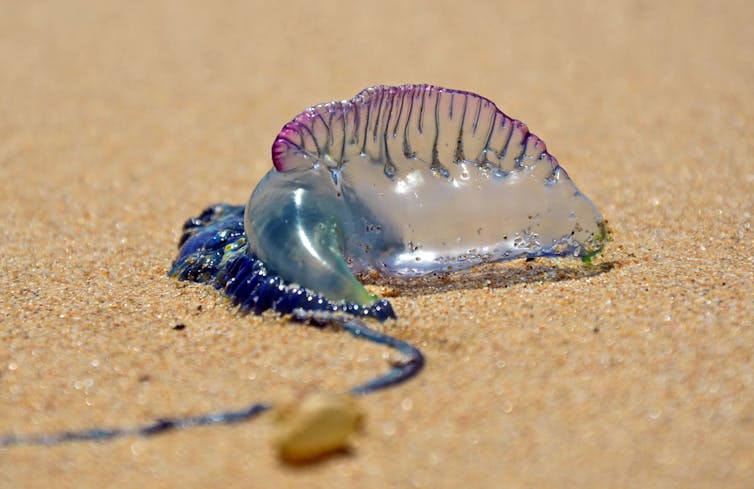
For box jellyfish, try vinegar
For box jellyfish stings, the evidence was more limited. Our review did not find sufficient evidence to support current recommendations to apply vinegar to inactivate the nematocysts.
Nevertheless, it’s reasonable to try vinegar. That’s because evidence not considered as part of our review shows vinegar inactivates nematocysts when tested in the laboratory.
When To Seek Medical Care
Most symptoms can be managed at the beach or at home. But always seek medical attention if you or the person you’re looking after has symptoms such as:
difficulty breathing
chest pain
nausea
vomiting
weakness, or
drowsiness.
Such severe symptoms mean monitoring and treatment in hospital may be needed. If the person stops breathing or has a heart attack, they need immediate basic life support.
What Not To Do
Do not rub or scrape the area with sand or a towel because this might cause more nematocysts to release their venom.
When it comes to treatments, our review found some may be harmful or ineffective, so should be avoided.
These included ammonia, methylated spirits and fresh water, as they may cause burns on the skin or trigger more venom to be released from nematocysts.
Avoid pressure immobilisation bandaging (wrapping a bandage tightly around the limb) as this may also trigger more venom release from nematocysts.
We found vinegar, sodium bicarbonate, Sting Aid or meat tenderiser have no proven benefit and may cause irritation or infection.
Perhaps not surprisingly, there were no published trials looking at the effectiveness of urine as a treatment and so it’s not recommended.
Prevention Is Best
Remember, prevention is better than cure. Keep an eye on safety announcements from lifeguards, monitor the water for jellyfish and wear protective clothing to prevent stings where possible.![]()
Richard McGee, Senior lecturer in Paediatrics, University of Newcastle and Michelle Welsford, Professor and Director of the Division of Emergency Medicine , McMaster University
This article is republished from The Conversation under a Creative Commons license. Read the original article.
No, you can’t reverse ageing by injecting ‘young blood’ and fasting. But that doesn’t stop people trying

Like many celebrities and entrepreneurs, 45-year-old US tech billionaire Bryan Johnson is trying to reverse the ageing process.
Spending an average of US$2 million a year on an anti-ageing regimen, Johnson claims he now ages slower than some children. He explains: “the pace my body accumulates ageing damage is less than the average ten year old”.
Many of Johnson’s age-reversal methods are questionable, involve dodgy science, and have known side effects.
While you can’t stop the ageing process, and the gradual decline our bodies experience as we advance in years, there are some things we can all do – for free – to maintain our health as we age.
What Does Johnson Do? And Is It Scientific?
Fasting
Johnson reports fasting for 23 hours a day. He then eats one meal a day: 2,250 calories of nutrient-dense food “customised” to his body’s needs.
Eating for time-restricted periods in the day can have a positive effect on how we metabolise nutrients, inflammation levels, hormonal regulation, and cardiometabolic health (blood sugar, triglycerides, cholesterol, blood pressure, BMI and waist circumference).
However, a Spartan-like food intake can impair how our body responds to sugar (known as glucose tolerance). And it’s not necessarily any more effective for weight maintenance than reducing calorie intake at each meal.
Large-scale, long-term human trials are needed to confirm the limited risk-benefit findings of fasting.
Acid peels
Johnson has weekly acid peels (which use a mild acid to exfoliate the skin) to maintain a “youthful glow”.
But you cannot smooth sagging facial skin or remove deep scars or wrinkles. Acid peels also come with risks, including organ damage, infection, scarring and swelling.
Plasma infusions
Perhaps the most bizarre youth-inducing procedure Johnson has attempted is receiving blood transfusions from his 17-year-old son.
US biotech companies have explored plasma infusions to tackle age-related diseases in humans for decades. But there are no proven clinical benefits.
Side effects from blood transfusions include blood-borne infections, fever and allergic reactions.
Historical Attempts To Stay Youthful
Humans have been experimenting with anti-ageing methods for centuries. These have included all sorts of behavioural and lifestyle practices that are quirky, questionable, and even sadistic.
Ancient practices included crocodile dung face masks, which the Greeks and Romans used to brighten their complexions.
Romans also used donkey milk and swan fat to minimise wrinkles, due to their acclaimed rejuvenating properties.
Cleopatra apparently took daily baths in sour donkey milk. To sustain this lavish habit, she had a herd of 700 donkeys. Sour milk contains lactic acid, a naturally occurring alpha-hydroxy acid (AHA) that exists in many modern-day exfoliants. So this idea was grounded in basic science, at least.

During the 16th and 17th century, “Countess Dracula” aka Elizabeth Bathory allegedly resorted to serial killing to quench her thirst for youthfulness, bathing in the blood of her young victims.
The Quest Continues With Cryotherapy
Fountain of youth fixations have inspired many contemporary anti-ageing trends. Exposure to cold is a firm favourite.
Some research suggests this could have benefits relating to longevity, by slowing cellular degeneration, stimulating collagen and elastin production, increasing the metabolism, and reducing inflammation.
Dutch motivational speaker Wim Hof includes cold water immersion as one of the three pillars of his Wim Hof Method to “increase mind-body connection”.
Athletes such as Cristiano Ronaldo use cryotherapy, exposing their bodies to extremely cold temperatures for two to four minutes to decrease the signs of ageing and enhance their general health.
However, the risks of cryotherapy include bone fractures, frostbite, nerve damage, bleeding, cramping, swelling and skin infections.
So What Can We Do To Age Well?
Two of the more mainstream anti-ageing methods that Johnson recommends are the daily self-care habits of sleep and exercise.
He has a strict sleep schedule that involves retiring to bed at 8pm, with a one-hour wind-down in a darkened room.
Adults report poorer sleep quality and difficulty being able to sleep for long enough as they age. Sleeping too much or too little is associated with a greater risk of obesity, heart disease and premature death.
Developing a regular sleep routine, reducing bedroom distractions such as mobile phones, and exercising regularly can all help to alleviate sleep problems.
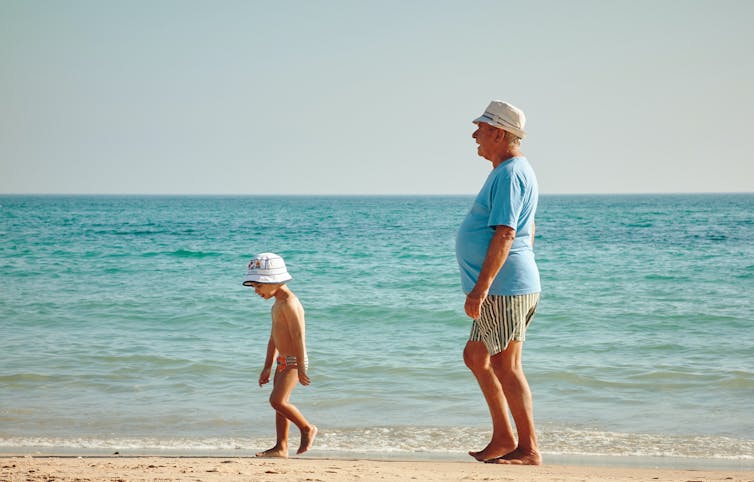
Exercise, often cited as a wonder drug for healthy ageing, is something Johnson takes very seriously. He does a “Blueprint” workout that includes specially designed daily techniques, as well as high-intensity interval training sessions, hiking and playing sport.
From middle age onwards, we all need to exercise regularly, to increase our muscle mass, bone density, strength, endurance, coordination and balance. One of the greatest health risks for older people is falling, which balance, flexibility, endurance and strength training can help reduce. Physical activity can bring social benefits in older adults if undertaken in groups, and there are well-known mental health gains.
Small changes in sleep, diet (eating plenty of vegetables, fruit, wholegrains, healthy fats, and enough protein), and exercise can support healthy ageing, reducing the chance of early death, and helping us all to lead an active and independent life in our senior years. Now that is something worth investing in.![]()
Rachael Jefferson-Buchanan, Lecturer in Human Movement Studies (Health and PE) and Creative Arts, Charles Sturt University
This article is republished from The Conversation under a Creative Commons license. Read the original article.
It’s time to end Western Australia’s $4 billion-per-year GST bonus
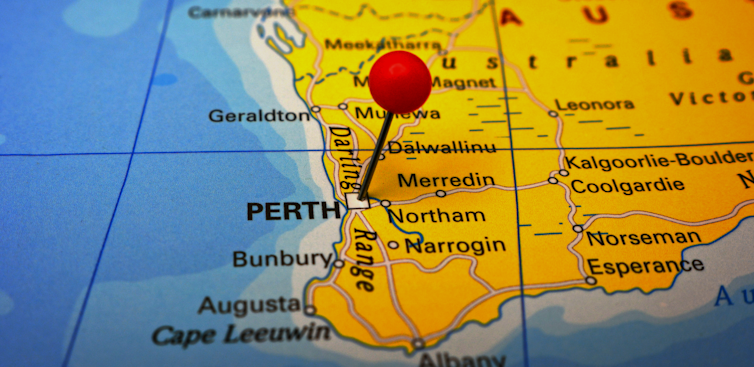
The Morrison government’s decision to give a special deal to Western Australia for the distribution of the income from the goods and service tax is one of the worst public policy decisions made in Australia in the past two decades.
The departure of the WA premier and treasurer, Mark McGowan, this week gives us an opportunity to fix the mistake.
Under a deal struck by McGowan and then-federal Treasurer Scott Morrison in 2018, WA gets a much greater share of the centrally collected goods and services tax (GST) than it is entitled to under the formula administered by the Commonwealth Grants Commission.
At the time, the formula awarded the state only 45% of what it would have gotten if it had received all of the GST collected from its citizens, in recognition of its lesser need for support because of its high iron ore royalties.
Morrison and McGowan’s deal placed a floor on how much of the GST each state could get. This climbed to 70% of what was collected from its citizens in 2022-23, and will climb further to 75% from 2024-25.
The other states that miss out because WA gets more than it should receive a top-up from the Commonwealth government, originally costed at $293 million in 2021-22, but now estimated to be $4.1 billion. But this is not “free”. The extra billions have to be paid for by Australian taxpayers.
Who Collects, Who Spends?
All federal systems have to decide who should collect each tax – the states or the government at the centre.
In Australia, we mostly let the federal government raise taxes, and this has several virtues. One is that it provides consistent rules for all Australians no matter where they live. Another is that it keeps down administrative costs – it gives us one personal income tax system instead of six.
Strong arguments can be made that we should move closer towards such a system, allowing the federal government to collect all of the tax and the states to provide most of the services.
The arrangement generates two problems.
The first is called vertical fiscal imbalance, which is the imbalance between the federal government’s extensive ability to raise revenue and the responsibility of the states to provide services. In Australia, we address it by transferring funds (including all of the GST revenue) from the federal government to the states and territories.
The second is horizontal fiscal imbalance. Different states have different needs and different capacities to meet those needs. NSW has a greater landmass than Victoria, for example, and requires more roads per resident.
In Australia, we deal with both of these problems through the Commonwealth Grants Commission, which distributes the money from the federal government to the states through a formula that determines what’s “fair”.
Here’s how it works. If one state is poorer and has less ability to raise revenue, it receives more money. If another state is richer and needs less, it gets less.
The commission also looks at how expensive it is to deliver services to its population. Health, education and infrastructure are much easier and cheaper to deliver in densely populated areas and temperate climates.
Australia has long been a shining example to the rest of the world in how to make this work. The grants commission is seen as an efficient organisation not subject to political influence. As a result, Australians have good access to opportunities and services irrespective of where they live.
Morrison’s decision, backed by the then Labor opposition, ruined this and injected politics into what had been a world-leading system for making federal revenue distributions fair and efficient.
Sharing Western Australia’s Wealth
Western Australia got rich during the mining boom. The grants commission process implicitly takes the extra income it gets from mining royalties and shares it with the others.
The state hasn’t liked it. It felt it was sacrificing more than its “fair share”. What is particularly funny is that throughout most of its history, WA received more from the rest of Australia than the rest of Australia has received from it.
Western Australia received special grants from the Commonwealth continuously from 1933 through 1968, and from 1981 to 2000. Victoria and NSW never got more than their citizens put in.
The 2000s mining boom changed that. Suddenly WA was paying money to the other states rather than getting it from them. And it wanted none of it.
It developed the mentality of a job seeker who was happy to get benefits when times were tough and expected them in retirement, but didn’t want to pay income tax while working. It was as ridiculous as that.
In defence of WA, it must be acknowledged the state takes the view that its mineral resources belong to it and not to other Australians, so at least it is consistent.
Sharing Australia’s Mineral Wealth
But in my view, this isn’t defensible. Why have a horizontal equalisation scheme if what each state has belongs only to it? Our system has always, at least implicitly, treated Australian resources as belonging to the entire country.
This is as true of the wealth generated through human capital in the form of education as it is for resources.
If we don’t want this to be the case, we should move to a system where each state raises as little or as much as it wants and spends it and no more, regardless of need. It would give the grants commission less to do.
And it would be a bad idea. It would be better to seize the moment created by McGowan’s departure and undo a bad decision that never seemed to be about anything other than politics.
And even on that level, it didn’t work. The Coalition won just five of the 15 federal seats in WA in the last election – a record low.
Last year, Morrison described his arrangement with McGowan as a “forever deal”. It should not last as long as that.![]()
Robert Breunig, Professor of Economics and Director, Tax and Transfer Policy Institute, Crawford School of Public Policy, Australian National University
This article is republished from The Conversation under a Creative Commons license. Read the original article.
Minister For Aged Care National Press Club On 7 June 2023 Reveals An Ambition For Aged Care
No Time For Vaccine Complacency As COVID And Flu Cases Soar
Eliza Batman, the Irish convict reinvented as ‘Melbourne’s founding mother’, was both colonised and coloniser on two violent frontiers

On June 8 1835, 188 years ago today, pastoralist John Batman crossed the Bass Strait and arrived on the shores of Naarm (now Melbourne city), on Kulin lands. His Irish-born convict wife, Eliza Batman, and their seven daughters arrived at Port Phillip the following year.
They had come from Van Diemen’s Land (Lutruwita/Tasmania), bringing 30 servants with them, including convicts, two Aboriginal boys, and Aboriginal men from New South Wales, known as the “Sydney Natives”.
Seeking land, the Batmans moved their large pastoral enterprise with this group of convicts and Aboriginal people to what is now known as Batman’s Hill overlooking the Yarra River. The two young Palawa boys who travelled with them from Tasmania were Rolepana, whom the Batmans had named “Ben Lomond”, and Lunnerminner, or “Jack Allen”.
In the midst of Tasmania’s Black War and once in Port Phillip, the Batmans would be entangled with Aboriginal people across two violent frontiers.
At Melbourne’s centenary of his landing in 1935, John Batman was celebrated as an intrepid settler and the city’s founding father. Eliza Batman, however, has remained largely a footnote to this contested history. Was she a founding colonial mother? How should we remember her? What happened to her children and the Palawa boys who became part of the larger Batman pastoral “family” enterprise, forced to travel across the Bass Strait to Port Phillip?

During the 19th and early 20th centuries, monuments, roads and parks were dedicated to John Batman. At one time, it was even proposed that Melbourne be named Batmania in his honour. By the late 20th century, Batman had become problematic: his dark deeds in Tasmania as leader of the Ben Lomond massacre had entered public consciousness and debate.
Since then, there has been much controversy around Batman as Melbourne’s founding father and his place in public memory. The Batman sculpture once on Collins Street no longer stands in the Melbourne CBD. The Australian Electoral Commission renamed the inner-city federal seat of Batman in honour of the Aboriginal rights campaigner Yorta Yorta leader William Cooper.
Eliza Batman is missing in these public debates around colonisation and the politics of memorialisation. Too often frontier violence is understood as male, martial, and situated on remote borderlands. Yet, colonial violence is not only racialised, but gendered and intimate. It is close to home, and all too often occurs between those known to each other.
Popular histories have excluded Eliza and her family almost completely from these stories of colonial Tasmania and Victoria. She has often been dismissed as a low-class, illiterate doxy and drunken convict who died an ignominious death while living under a pseudonym in a rooming house in Geelong in 1852. Yet Irish-born Eliza (then Elizabeth Callaghan) from County Clare was literate and astute.

We’ve been interested in Eliza Batman for a long time. In the late 1990s, we drove to Geelong on a dusty, hot January day to find Eliza’s grave at the cemetery, which was then unmarked. Although her actual grave remains somewhere in the paupers section, Eliza is memorialised in a plaque alongside that of her seventh daughter, who bore the curious name Pelonamena. Looking more deeply, we found that the Batmans named their seventh daughter after an Aboriginal woman, “Pellonymyna”.
We do not seek to rehearse the popular notion of John Batman – or Eliza – as the founders of Melbourne, or of a triumphal Bass Strait crossing of a founding family from Van Diemen’s Land to Port Phillip. Rather, we wish to reveal other crossings in looking at the Batmans.
Our research into Eliza Batman and her colonial home opens uncomfortable vistas onto the pastoral frontier where colonial women, forced kinship, affection and violence were bound together.
Convict Infamy And The Iron Collar
Eliza was a small woman of dark hair and brown eyes, around 5 feet and 2½ inches. In 1820, aged 17, she was tried at the Old Bailey in London for passing forged notes, a crime called “uttering”. One of her male accomplices was hanged, but Eliza’s sentence was commuted to 14 years transportation to the Australian colonies.
Eliza was transported to Tasmania in 1821 on the ship Providence with 102 other female felons. The convict indent or list made on “Elizabeth Callaghan’s” arrival in Hobart, noted “gaol report bad”.
The convict indent also records that once in Hobart she absconded from several masters. Each time she was placed in the stocks, fed bread and water, and forced to wear the iron collar, a punishment often reserved for women.

In 1820 the commandant at George Town, Colonel Cimitiere, called the iron collar “a badge of infamy and disgrace” that was the “usual Instrument throughout the Colonies which is put round the neck of women of Infamous character”.
There are no portraits or photographs of Eliza that can be found, but her likeness is suggested by the photographic portrait of her daughter Pelonamena.
Later Eliza absconded again, and was soon living under the pseudonym Elizabeth Thomson, at the property “Kingston” in the Midlands with John Batman. In early 1828 Batman requested permission from Lieutenant Governor Arthur to marry Eliza. By this time they had three daughters. Arthur approved the union, and on 29 March 1828, Eliza and John were married.
Writing Eliza
As historians, how do we write about Eliza? This can be no simple reclamation of history. Eliza was both a colonised Irish woman and a coloniser, entangled in the violent frontiers of early Australia. She was mistress to the Batman household and profited from this large enterprise in the midst of a pastoral boom and the expulsion of Aboriginal peoples from their traditional lands.
Throughout her life, Eliza negotiated harsh penal servitude, privilege and mobility as the mistress of the Batman family’s large pastoral holdings across two southeastern colonial frontiers in the 1830s. Although the convict stain followed her all her life, Eliza was not a low-class woman or prostitute as some biographers have suggested. In her final years she endured dire poverty and suffered a violent death. She was murdered in a rooming house in Geelong, while living under another pseudonym, Sarah Willoughby.
There is no entry for Eliza in the Australian Dictionary of Biography. The scant accounts of her life tend to be stereotypical. In the dictionary entry on John Batman she is framed largely as a woman of “somewhat abandoned character”, although historian P.L Brown concedes she was “an able woman” who “wrote a good letter”.

In the only dedicated account of her life, Robert S. Close’s racy novel, Eliza Callaghan (published 1957), follows Eliza from London and Newgate Gaol to her introduction to John Batman. The sensational by-line on the cover reads: “Untamed […] she fought for life and love”. Historians, mostly male, have reinvented her repeatedly, just as Eliza, in her own lifetime, reinvented herself.
Archival sources of Eliza’s voice are fragmentary. There are no diaries or collections of personal correspondence discovered to date. However, a close reading of surrounding sources reveals much about Eliza and her experiences during her life. As researchers, we find her story tests the limits of memorialisation – there are no easy narratives here.
Mistress At Kingston
In Tasmania, the Batman property “Kingston” was a large station situated on Plangermaireener Aboriginal land in the Ben Lomond region.
Batman had taken part in and profited from the Black War between Aboriginal people and settlers in Tasmania (1828–1834), as his household at Kingston became a depot and service point in the execution of “roving parties” and orchestrated attacks against Aboriginal peoples.
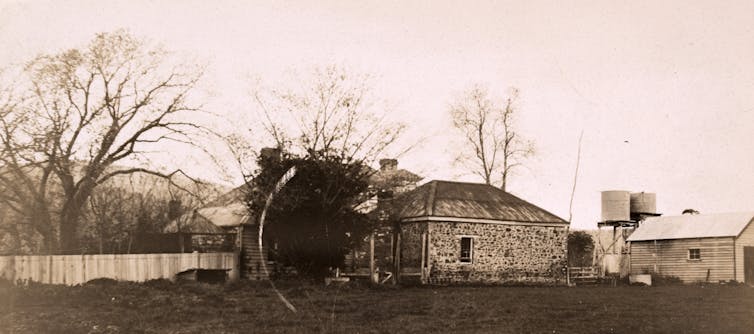
It is well recorded that John Batman had participated in the “Black line” and organised these “roving parties” from his property at Kingston during the genocidal war against Aboriginal peoples. It is also documented that in September 1829 he led the Ben Lomond massacre, where at least 17 Aboriginal people died in a dawn attack.
It was during this attack that John Batman abducted the two-year-old boy Aboriginal Rolepana (renamed by the Batmans “Ben Lomond”). Batman reported afterwards to British Colonial Secretary, John Burnett, that he kept the child because he wanted “to rear it”.
During this time Lurnerminner (renamed “Jacky” or “Jack Allen”) was at Kingston. A third Aboriginal boy was also held there, renamed “John Batman”. We have not discovered what became of him.
Eliza, as mistress of Kingston, was a central part of the daily business activities of the household and station and its role as a depot for roving parties. The pastoral home, or station, was a site of colonial domesticity, but it was also an unhomely “contact zone” in which Eliza, as the mother and mistress of the household, taught the dispossessed Aboriginal boys to read and to recite the Lord’s Prayer.
Eliza had the boys baptised. On 2 June 1830, John Batman rode home to Kingston for the baptism of his four daughters and Rolepana, the survivor of the Ben Lomond massacre. In this new colonial world, Rolepana lost his Plangermaireener name.
At Kingston, the boys were used as labourers: they drove the plough, milked the cows, and tended the swine. There is some evidence that they were “flogged with a whip”. Aboriginal children like Rolepana and Lurnerminner were taken from their own families to become reincorporated into the colonial homestead as dependants and servants. They were enfolded in colonial intimacies that recast acts of aggression as acts of kindness and civilisation, and dispersal of Aboriginal families as care.
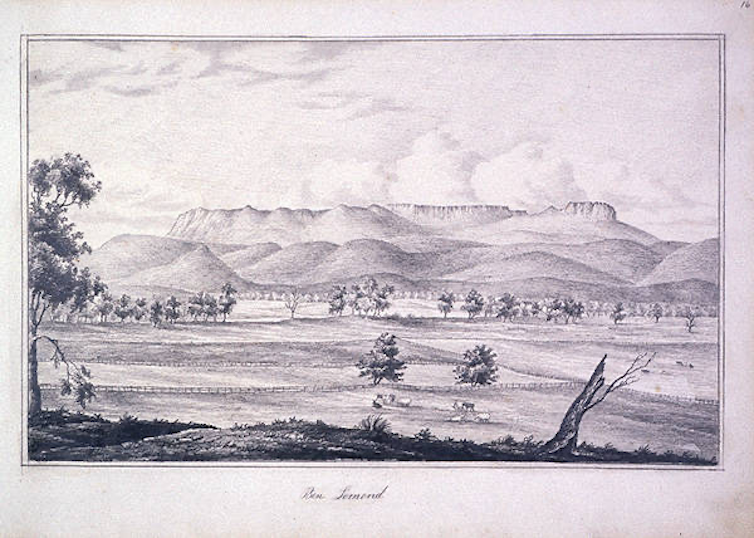
While Eliza was undeniably privileged by her race, she was also impoverished by her gender. Later in Melbourne, upon her husband’s death in May 1839, she was cruelly written out of Batman’s will and given only five pounds, leaving her destitute with eight children to care for.
A long fight ensued over the Batman will, which languished in the shadow of Melbourne’s chancery court. Eliza eventually lost her home and much of the family’s land holdings. Her young son, Charles Batman, had died. She could not support her daughters, so they were separated and sent to the households of friends around Port Phillip.
By contrast, John Batman’s death left the two young Aboriginal boys, Lurnerminner and Rolepana, without access to the network of support that was available to the Batman children. These boys from Tasmania were left largely to fend for themselves in Melbourne.
Rolepana went on to work for colonist George Ware, but died in Melbourne in 1842. Lurnerminner went to sea and worked on whaling ships, perhaps claiming a kind of freedom offshore that was not possible onshore. He later returned to Tasmania to live at Oyster Cove Aboriginal Station, south of Hobart.
Pellonymyna
There is another hidden woman in this story: the Aboriginal woman named Pellonymyna. Names are touchstones in the poetics of memorialisation, and their use and exchange, especially across cultures, can be potent. While Rolepana lost his Plangermaireener identity to be christened “Ben Lomond”, the Batmans’ seventh daughter claimed a Plangermaireener name.
In July 1834, Eliza gave birth to this daughter. The Batmans named this child Pelonamena Frances Darling Batman, after Pellonymyna, or Pellenominer, an Aboriginal woman from Ben Lomond.
In the midst of the land war, Pellonymyna was incarcerated at Flinders Island Aboriginal station, along with others, and placed under the guardianship of the commandant, Frances Darling. Darling was well known to the Batman family, and it seems this appellation was made partly in his honour.
Travelling Quakers James Backhouse and George Washington Walker also met Pellonymyna on Flinders Island, and her name appears in Walker’s unpublished journal in a list of Aboriginal people held there. On the surface, this naming appears be a mark of affection and reciprocal exchange. But it is a disquieting gesture to the Plangermaireener people the Batmans aggressively displaced. The Aboriginal woman, Pellonymyna (also known as Bangum or Flora), was later sent to the Oyster Cove Aboriginal Station, south of Hobart.

This exchange of a name is an example of the uneasy ways forced colonial kinships were made and memorialised under the sign of home and family. It was through these apparently familial vectors of imperial power – where land, homes and children and names were taken from Aboriginal people – that everyday domestic yet unhomely relationships were forged on southeastern frontiers.
In 1851 Eliza’s daughter, Pelonamena Frances Darling Batman, married Port Phillip resident Daniel Bunce, who later became director of the Geelong Botanical Gardens. Together they had two infant children, although neither survived past one year. Pelonamena died at the age of 25.
Across all the southeastern colonies European women and men were making homes – and at the same time Aboriginal people and families were losing their homes, land and children.
These gendered, domestic borderlands of colonialism in Australia still require far more historical scrutiny. The politics of their memorialisation will always be challenging.![]()
Penny Edmonds, Matthew Flinders Professor, Flinders University and Michelle Berry, Adjunct researcher, Flinders University
This article is republished from The Conversation under a Creative Commons license. Read the original article.
The world’s first flowers were pollinated by insects
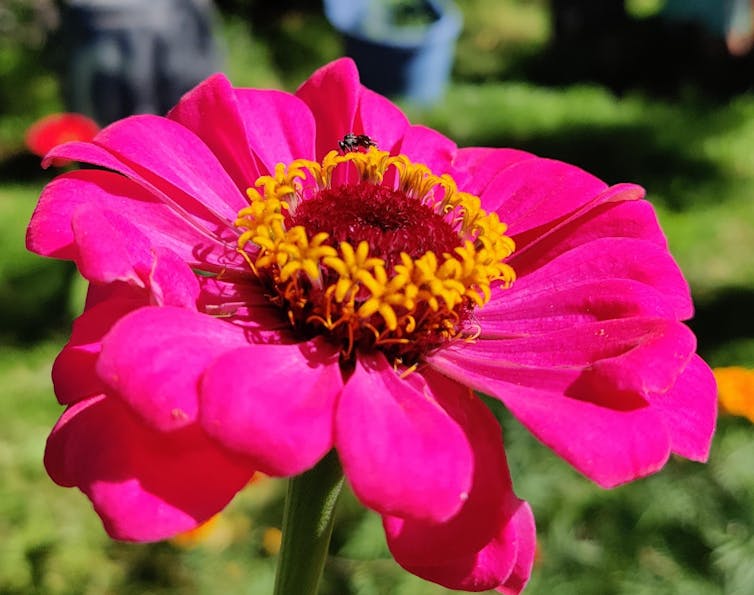
Plants existed on Earth for hundreds of millions of years before the first flowers bloomed. But when flowering plants did evolve, more than 140 million years ago, they were a huge evolutionary success.
What pollinated these first flowering plants, the ancestor of all the flowers we see today? Was it insects carrying pollen between those early flowers, fertilising them in the process? Or perhaps other animals, or even wind or water?
The question has been a tricky one to answer. However, in new research published in New Phytologist, we show the first pollinators were most likely insects.
What’s more, despite some evolutionary detours, around 86% of all flowering plant species throughout history have also relied on insects for pollination.
How To Move Pollen
The timing of the evolution of the first flowering plants is still a matter of debate. However, their success is inarguable.
Around 90% of modern plants – some 300,000-400,000 species – are flowering plants, or what scientists call angiosperms. To reproduce, these plants make pollen in their flowers, which needs to be transferred to another flower to fertilise an ovule and produce a viable seed.
Small and highly mobile, insects can be highly effective pollen transporters. Indeed, recent research on fossil insects shows some insects may have been pollinating plants even before the first flowers evolved.

Most of today’s flowering plants rely on insects for pollination. The plant’s flowers have evolved to attract insects via colour, scent and even sexual mimicry, and most reward them with nectar, pollen, oils or other types of food, making the relationship beneficial to both parties.
Some flowers, however, rely on other means to transport their pollen, such as vertebrate animals, wind or even water.
Which kind of pollination evolved first? Were insects there at the beginning, or were they a later “discovery”?
While early evidence suggests it was probably insects, until now this has never been tested across the full diversity of flowering plants – their full evolutionary tree.
A Family Tree
To find an answer, we used a “family tree” of all families of flowering plants, sampling more than 1,160 species and reaching back more than 145 million years.
This tree shows us when different plant families evolved. We used it to map backwards from what pollinates a plant in the present to what might have pollinated the ancestor of that plant in the past.
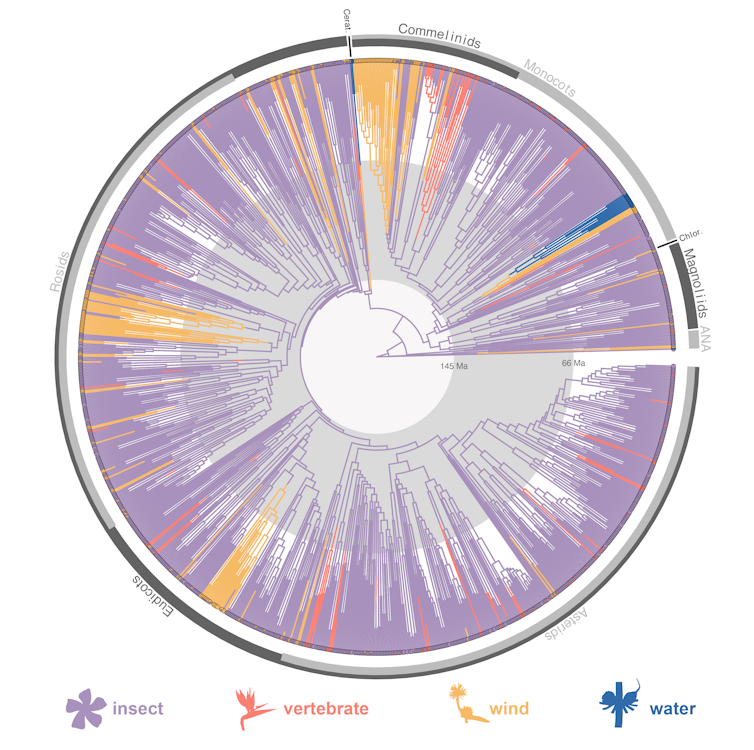
We found insect pollination has been overwhelmingly the most common method over the history of flowering plants, occurring around 86% of the time. And our models suggest the first flowers were most likely pollinated by insects.
Birds, Bats And Wind
We also learned about the evolution of other forms of pollination. Pollination by vertebrate animals, such as birds and bats, small mammals and even lizards, has evolved at least 39 times – and reverted back to insect pollination at least 26 of those times.
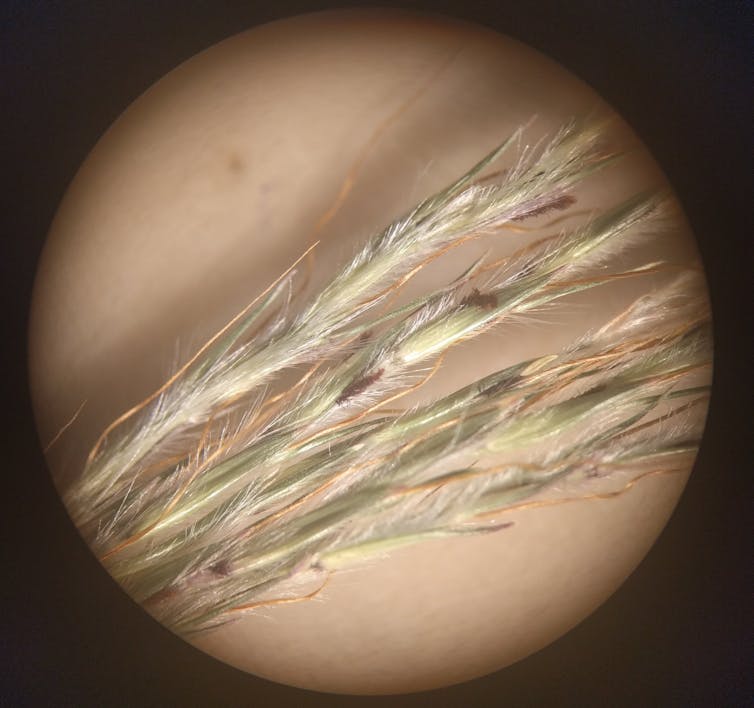
Wind pollination has evolved even more often: we found 42 instances. These plants rarely go back to insect pollination.
We also found wind pollination evolved more often in open habitats, at higher latitudes. Animal pollination is more common in closed-canopy rainforests, near the equator.
What Kind Of Insects Were The First Pollinators?
If you think of a pollinating insect, you probably imagine a bee. But while we don’t know exactly what insects pollinated the first flowering plants, we can be confident they weren’t bees.
Why not? Because most evidence we have indicates bees didn’t evolve until after the first flowers.
So what do we know about the pollinators of the first flowering plants? Well, some early flowers have been preserved as fossils – and most of these are very small.
The first flower pollinators must have been quite small, too, to poke around in these flowers. The most likely culprits are some kind of small fly or beetle, maybe even a midge, or some extinct types of insects that have long disappeared.
If only we had a time machine we could go back and see these pollinators in action - but that will require a lot more research!![]()
Ruby E. Stephens, PhD Candidate, School of Natural Sciences, Macquarie University; Hervé Sauquet, Senior Research Scientist, Royal Botanic Gardens Sydney and Adjunct Associate Professor, UNSW Sydney; Lily Dun, Research Assistant, UNSW Sydney; Rachael Gallagher, Associate Professor, Hawkesbury Institute for the Environment, Western Sydney University, and Will Cornwell, Associate Professor in Ecology and Evolution, UNSW Sydney
This article is republished from The Conversation under a Creative Commons license. Read the original article.
NSW Bureau Of Health Information Healthcare Quarterly Report (January – March 2023) Released: NBH Statistics
- 44.1% of ‘emergency – priority 1’ ambulance cases were reached within 15 minutes
- 64.6% of the highest priority (P1A) responses arrived within 10 minutes.
- 67.4% of all patients, and 54.9% of triage 2 patients, had their treatment start on time – both the lowest of any January to March quarter since 2010.
- 58.2% of all patients spent less than four hours in the ED – the lowest for a January to March quarter since 2010.
How we can avoid political misinformation in the lead-up to the Voice referendum
Christopher Arnott, Griffith UniversityThe Australian Electoral Commission has launched a website aimed at rebutting disinformation. This is a timely change, as we are seeing an increase of both disinformation and misinformation being spread about the First Nations Voice to Parliament.
Disinformation and misinformation are similar concepts. Both refer to the spread of political information that is false and misleading. The difference is disinformation is spread with the intention to deceive the recipient.
Misinformation is often spread with a genuine belief in the truth of the information. It is often difficult to determine whether someone intends to deceive, or whether they are misinformed in their beliefs.
In parliament last Thursday, Prime Minister Anthony Albanese accused Opposition Leader Peter Dutton of “amplifying misinformation” by increasing the circulation of false and misleading statements regarding the referendum.
As we wait for the government to announce the date of the referendum, both “yes” and “no” campaigns are actively seeking to persuade the Australian public. Unfortunately, this has resulted in some people spreading misinformation.
But how does one tell the difference between facts, and false and misleading statements?
What Misinformation Have We Been Hearing So Far?
Last week, “no” campaigner Warren Mundine claimed the Australian Electoral Commission was biased in its campaign to recruit Indigenous Australians to enrol on the electoral roll. He claimed the advertisement “Our Vote, Our Future” had “crossed the line” and leans in favour of the “yes” campaign.
This is an example of misinformation. This exact slogan has been used by the electoral commission to encourage Indigenous people to enrol to vote in previous elections over the years. In fact, the commision has used a very similar variation of the slogan dating as far back as 1962.

Politicians and lobbying groups such as the Institute of Public Affairs have also been busy making claims, including statements that the Voice is a form of apartheid, or has the capacity to veto parliamentary decisions. These claims are likewise false and misleading.
Claims of insufficient detail surrounding the Voice are also misleading, as Senator Malarndirri McCarthy pointed out on ABC’s Q+A in January.
The report had been discussed with and presented to the former Morrison government’s cabinet in its entirety in July 2021. So, when Dutton claims there is not enough detail, it would seem he is being disingenuous.
The Dangers Of Misinformation And How To Identify It
During the COVID pandemic, we saw misinformation spread from the United States to Australia. This resulted in a significant growth in followers of the American-based conspiracy theory group QAnon. Groups such as QAnon are deeply rooted in distrust of institutions. Distrust and scepticism are healthy to a degree, but extreme distrust can fuel harmful conspiracy theories.
These conspiracies have placed lives at risk, as shown throughout the COVID pandemic, whereby unfounded medical treatments and fear of vaccines took centre stage in many misinformation campaigns.
Identifying misinformation in politics can be complex because it is a space where regular debates occur. In addition, the bombardment of “facts” presented through social media makes it difficult to distinguish between true and false information. However, in any debate, it is crucial that truth and facts are never abandoned.
Identifying who does or does not hold expertise on a topic can be difficult, particularly as some might try to discredit the expertise of particular groups for political reasons. However, in her recent book, political scientist Pippa Norris proposes there are three criteria for judging expertise: competence, benevolence and integrity.
Competence is the degree of technical knowledge acquired through developing skills and education. This is one of the easiest to judge. Benevolence is the degree to which self-interest is set aside. And integrity relates to a person’s honesty, fairness and overall ethical reputation.
An example of competence is law expert and professor Greg Craven, who initially expressed concerns about the wording of the Voice. He disagreed on some aspects, but the debate was within the framework of established facts. He now supports the Voice and the wording.
Indeed, neither of the two examples presented earlier regarding misinformation in the Trump campaign and in the treatment of COVID were backed by formal authorities or experts in the matter. Many of those who peddled Trump’s election lies stood to be promoted, or had electoral self-interest in pursuing the line.
How Can You Protect Yourself Against Misinformation?
Humans tend to accept new information if they have no reason to doubt it. When you hear commentary around the Voice, be on the lookout for language that may be used to elicit strong emotional responses, instead of encouraging logical thinking.
Words such as “apartheid”, “divided” or even “racist” may be used intentionally to elicit strong emotions.
Emotional appeals when used in arguments have been shown to significantly influence our reasoning abilities. If we’re aware that certain comments are being used to persuade or manipulate us, we can equip ourselves with a healthy level of scepticism and apply critical thinking when assessing the information presented.
Additionally, it’s good to be cautious of new or surprising information.
For instance, Mundine and Country Liberal Senator Jacinta Nampijinpa Price recently used a quote for their “no” campaign from a Northern Territory man named Stewart Lingiari. Mundine and Price claimed Stewart was a descendant of renowned Aboriginal rights activist Vincent Lingiari.
Stewart later revealed this was not true, and the cameraman had instructed him what to say. Stewart also claimed he had not given permission for his image to be used in their campaign.
Unfortunately, Australia does not have federal laws that enforce truth in political advertising. So in the next few months, misinformation will likely continue to plague social media platforms and media.
However, there are resources available that can help with navigating this referendum and making an informed choice:
- the ABC and SBS provide useful and non-partisan information on the Voice referendum
- The Conversation is providing independent and factual coverage of the Voice campaign from experts
- interactive yarning circles that can help you understand the proposed Voice
- the Uluru Statement from the Heart website details everything about the proposed Voice and its history.
As the referendum date approaches, and each of the campaigns seek to persuade you, remember some claims may evoke emotions, or surprise, and their motivations may not always be truthful. A healthy dose of scepticism, and a search for the truth, will help you to find your own voice in this important referendum.![]()
Christopher Arnott, PhD Candidate, Griffith University
This article is republished from The Conversation under a Creative Commons license. Read the original article.
Commuters Benefit From Train Station Upgrades In Northern Sydney

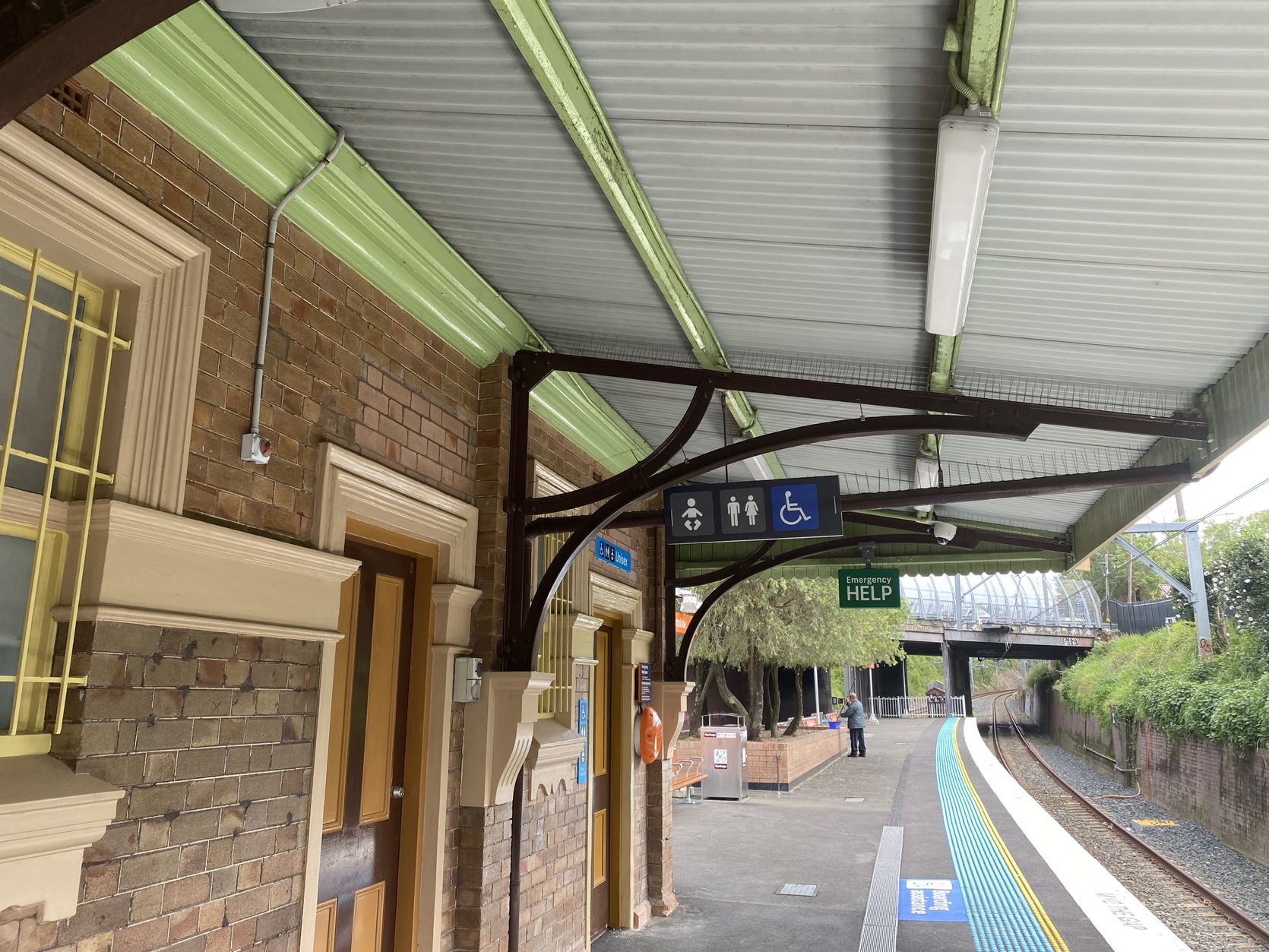
US Study Shows Promising Treatment For Tinnitus
Hot flushes, night sweats, brain fog? Here’s what we know about phytoestrogens for menopausal symptoms

While some women glide through menopause, more than 85% experience one or more unpleasant symptoms, which can impact their physical and mental health, daily activities and quality of life.
Hot flushes and night sweats are the most common of these, affecting 75% of women and the symptom for which most women seek treatment. Others include changes in weight and body composition, skin changes, poor sleep, headaches, joint pain, vaginal dryness, depression and brain fog.
While menopause hormone therapy is the most effective treatment for menopausal symptoms, it is sometimes not recommended (such as following breast cancer, as there is conflicting evidence about the safety of menopause hormone therapy following breast cancer) or avoided by people, who may seek non-hormonal therapies to manage symptoms. In Australia it is estimated more than one-third of women seek complementary or alternative medicines to manage menopausal symptoms.
But do they work? Or are they a waste of time and considerable amounts of money?
What’s On The Market?
The complementary or alternative interventions for menopausal symptoms are almost as varied as the symptoms themselves. They include everything from mind-body practices (hypnosis, cognitive behavioural therapy and meditation) to alternative medicine approaches (traditional Chinese medicine and acupuncture) and natural products (herbal and dietary supplements).
There is some evidence to support the use of hypnosis and cognitive behaviour therapy for the treatment of hot flushes. Indeed these therapies are recommended in clinical treatment guidelines. But there is less certainty around the benefit of other commonly used complementary and alternative medicines, particularly nutritional supplements.
The most popular nutritional supplements for hot flushes are phytoestrogens (or plant estrogens). This trend has been driven in part by supplement companies that promote such agents as a safer or more natural alternative to hormone therapy.
What Are Phytoestrogens?
Phytoestrogens are plant-derived substances that can show oestrogen-like activity when ingested.
There are numerous types including isoflavones, coumestans and lignans. These can be consumed in the form of food (from whole soybeans, soy-based foods such as tofu and soy milk, legumes, wholegrains, flaxseeds, fruits and vegetables) and in commercially produced supplements. In the latter category, extracts from soy and red clover yield isoflavones and flaxseed gives us lignans.
Because declining oestrogen levels drive menopausal symptoms, the theory is that consuming a “natural”, plant-based substance that acts like oestrogen will provide relief.

What Does The Evidence Say?
In the case of isoflavones, initial support came from epidemiological data showing women in Asian countries, consuming a traditional, phytoestrogen-rich diet (that is, one including tofu, miso and fermented or boiled soybeans), experienced fewer menopausal symptoms than women in Western countries.
However, several factors may influence the effect of dietary phytoestrogens on menopausal symptoms. This includes gut microbiota, with research showing only around 30% of women from Western populations possess the gut microbiota needed to convert isoflavones to their active form, known as equol, compared to an estimated 50–60% of menopausal women from Japanese populations.
Circulating oestrogen levels (which drop considerably during menopause) and the duration of soy intake (longer-term intake being more favourable) may also influence the effect of dietary phytoestrogens on menopausal symptoms.
Overall, evidence regarding the benefit of phytoestrogens for hot flushes is fairly mixed. A Cochrane review synthesised study results and failed to find conclusive evidence phytoestrogens, in food or supplement form, reduced the frequency or severity of hot flushes or night sweats in perimenopausal or postmenopausal women.
The review did note genistein extracts (an isoflavone found in soy and fava beans) may reduce the number of hot flushes experienced by symptomatic, postmenopausal women, though to a lesser extent than hormone therapy.
Another recent study showed marked reductions in hot flushes in women following a low fat, vegan diet supplemented with daily soybeans. However, it was questioned whether concurrent weight loss contributed to this benefit.
In Australia, clinical guidelines do not endorse the routine use of phytoestrogens. Guidelines for the United Kingdom note some support for the benefit of isoflavones, but highlight multiple preparations are available, their safety is uncertain and interactions with other medicines have been reported.
Can Phytoestrogens Help The Psychological Symptoms Of Menopause?
Less research has explored whether phytoestrogens improve psychological symptoms of menopause, such as depression, anxiety and brain fog.
A recent systematic review and meta-analysis found phytoestrogens reduce depression in post- but not perimenopausal women. Whereas a more recent clinical trial failed to find an improvement.
Some research suggests phytoestrogens may reduce the risk of dementia, but there are no conclusive findings regarding their effect on menopausal brain fog.
The Bottom Line
At present there is uncertainty about the benefit of phytoestrogens for menopause symptoms.
If you do wish to see if they might work for you, start by including more phytoestrogen-rich foods in your diet. Examples include tempeh, soybeans, tofu, miso, soy milk (from whole soybeans), oats, barley, quinoa, flaxseeds, sesame seeds, sunflower seeds, almonds, chickpeas, lentils, red kidney beans and alfalfa.
Try including one to two serves per day for around three months and monitor symptoms. These are nutritious and good for overall health, irrespective of the effects on menopausal symptoms.
Before you trial any supplements, discuss them first with your doctor (especially if you have a history of breast cancer), monitor your symptoms for around three months, and if there’s no improvement, stop taking them.![]()
Caroline Gurvich, Associate Professor and Clinical Neuropsychologist, Monash University; Jane Varney, Senior Research Dietitian in the Department of Gastroenterology, Monash University, and Jayashri Kulkarni, Professor of Psychiatry, Monash University
This article is republished from The Conversation under a Creative Commons license. Read the original article.
Repair, Reuse And Recycle: Dealing With Solar Panels At The End Of Their Useful Life
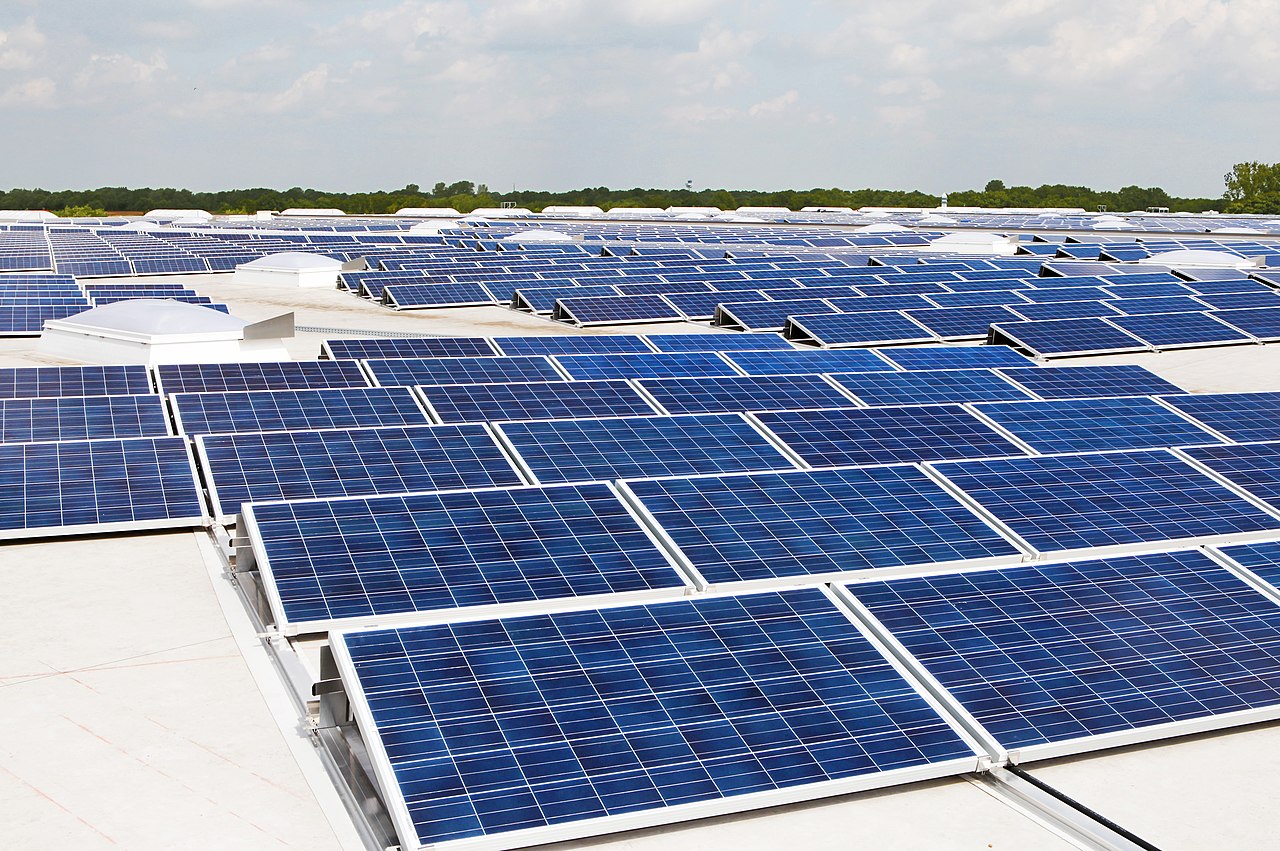
Social media snaps map the sweep of Japan’s cherry blossom season in unprecedented detail

Social media contains enormous amounts of data about people, our everyday lives, and our interactions with our surroundings. As a byproduct, it also contains a vast trove of information about the natural world.
In a new study published in Flora, we show how social media can be used for “incidental citizen science”. From photos posted to a social site, we mapped countrywide patterns in nature over a decade in relatively fine detail.
Our case study was the annual spread of cherry blossom flowering across Japan, where millions of people view the blooming each year in a cultural event called “hanami”. The flowering spreads across Japan in a wave (“sakura zensen” or 桜前線) following the warmth of the arriving spring season.

The hanami festival has been documented for centuries, and research shows climate change is making early blossoming more likely. The advent of mobile phones – and social network sites that allow people to upload photos tagged with time and location data – presents a new opportunity to study how Japan’s flowering events are affected by seasonal climate.
Why Are Flowers Useful To Understand How Nature Is Being Altered By Climate Change?
Many flowering plants, including the cherry blossoms of Japan (Prunus subgenus Cerasus), require insect pollination. To reproduce, plant flowers bloom at optimal times to receive visits from insects like bees.
Temperature is an important mechanism for plants to trigger this flowering. Previous research has highlighted how climate change may create mismatches in space or time between the blooming of plants and the emergence of pollinating insects.
It has been difficult for researchers to map the extent of this problem in detail, as its study requires simultaneous data collection over large areas. The use of citizen science images deliberately, or incidentally, uploaded to social network sites enables big data solutions.
How Did We Conduct Our Study?
We collected images from Japan uploaded to Flickr between 2008 and 2018 that were tagged by users as “cherry blossoms”. We used computer vision techniques to analyse these images, and to provide sets of keywords describing their image content.
Next, we automatically filtered out images appearing to contain content that the computer vision algorithms determined didn’t match our targeted cherry blossoms. For instance, many contained images of autumn leaves, another popular ecological event to view in Japan.
The locations and timestamps of the remaining cherry blossom images were then used to generate marks on a map of Japan showing the seasonal wave of sakura blossoms, and to estimate peak bloom times each year in different cities.
Checking The Data
An important component of any scientific investigation is validation – how well does a proposed solution or data set represent the real-world phenomenon under study?
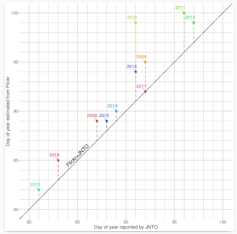
Our study using social network site images was validated against the detailed information published by the Japan National Tourism Organization.
We also manually examined a subset of images to confirm the presence of cherry flowers.
Plum flowers (Prunus mume) look very similar to cherry blossoms, especially to tourists, and they are frequently mistaken and mislabelled as cherry blossoms. We used visible “notches” at the end of cherry petals, and other characteristics, to distinguish cherries from plums.
Taken together, the data let us map the flowering event as it unfolds across Japan.

Out-Of-Season Blooms
Our social network site analysis was sufficiently detailed to accurately pinpoint the annual peak spring bloom in the major cities of Tokyo and Kyoto, to within a few days of official records.
Our data also revealed the presence of a consistent, and persistent, out-of-season cherry bloom in autumn. Upon further searching, we discovered that this “unexpected” seasonal bloom had also been noted in mainstream media in recent years. We thus confirmed that this is a real event, not an artefact of our study.
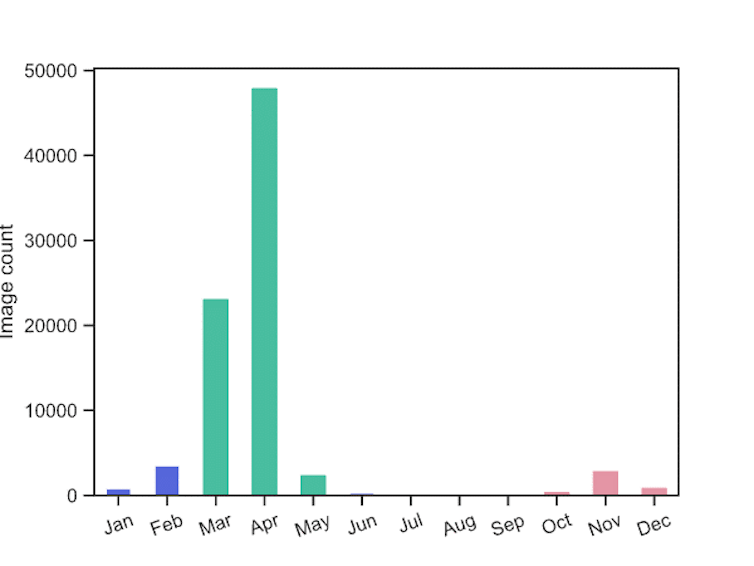
So, even without knowing it, many of us are already helping to understand how climate change influences our environment, simply by posting online photographs we capture. Dedicated sites like Wild Pollinator Count are excellent resources to contribute to the growing knowledge base.
The complex issues of climate change are still being mapped. Citizen science allows our daily observations to improve our understanding, and so better manage our relationship with the natural world.![]()
Adrian Dyer, Associate Professor, Monash University; Alan Dorin, Associate Professor, Faculty of Information Technology, Monash University; Carolyn Vlasveld, PhD candidate, Monash University, and Moataz ElQadi, Adjunct Researcher, Faculty of Information Technology, Monash University
This article is republished from The Conversation under a Creative Commons license. Read the original article.
World-First Trial For Paediatric Brain Cancer Right Here In NSW
Disclaimer: These articles are not intended to provide medical advice, diagnosis or treatment. Views expressed here do not necessarily reflect those of Pittwater Online News or its staff.
